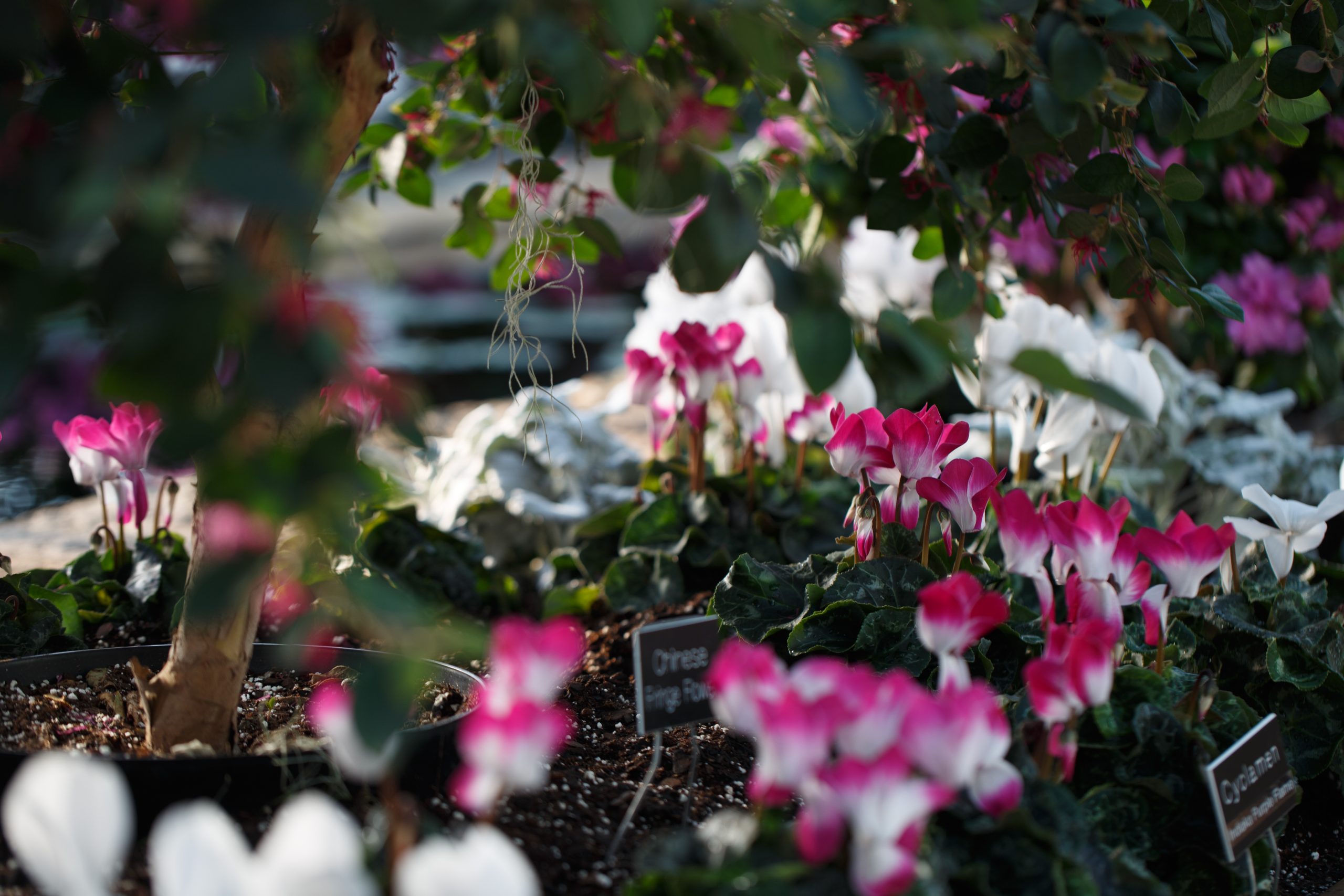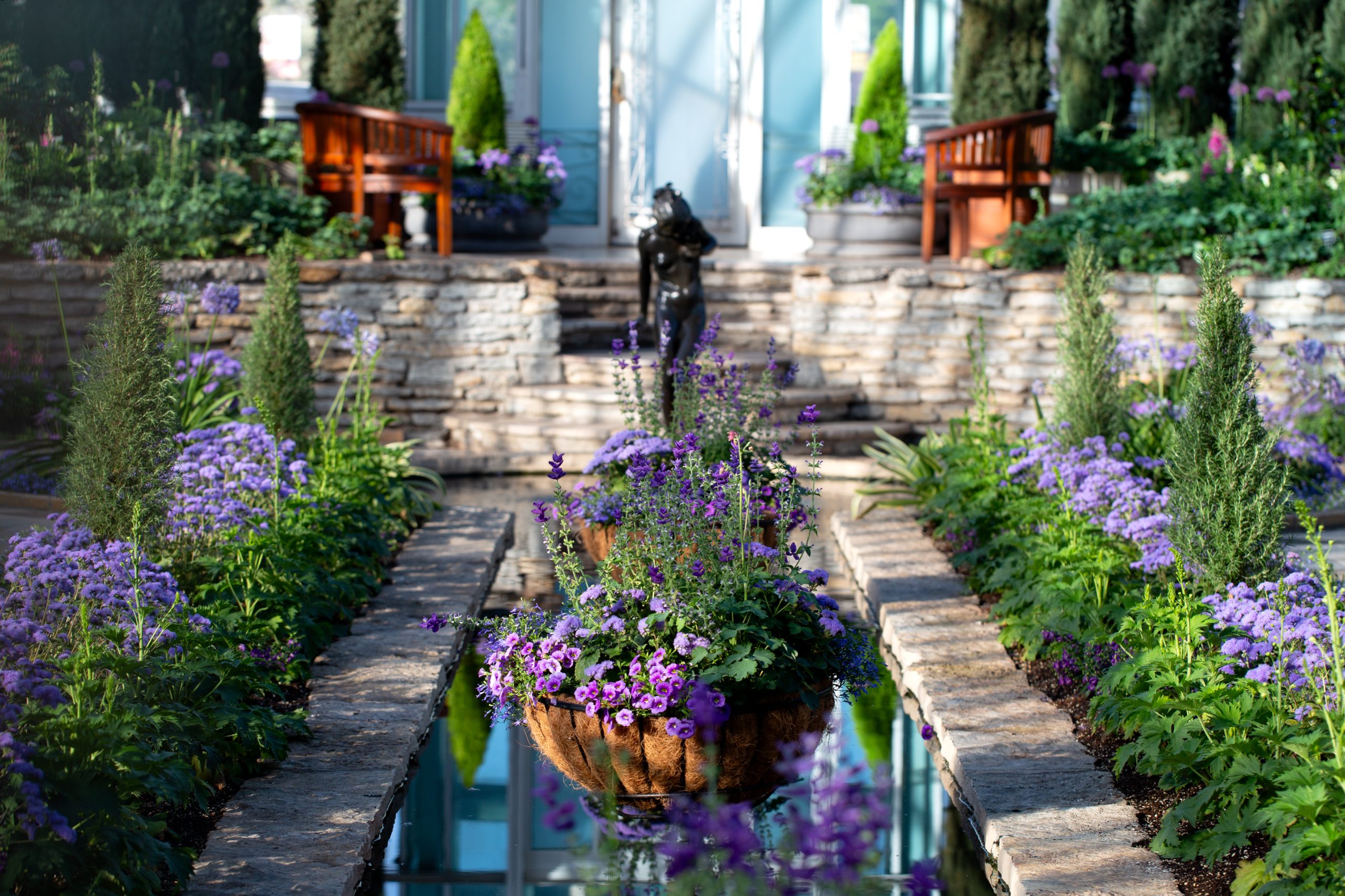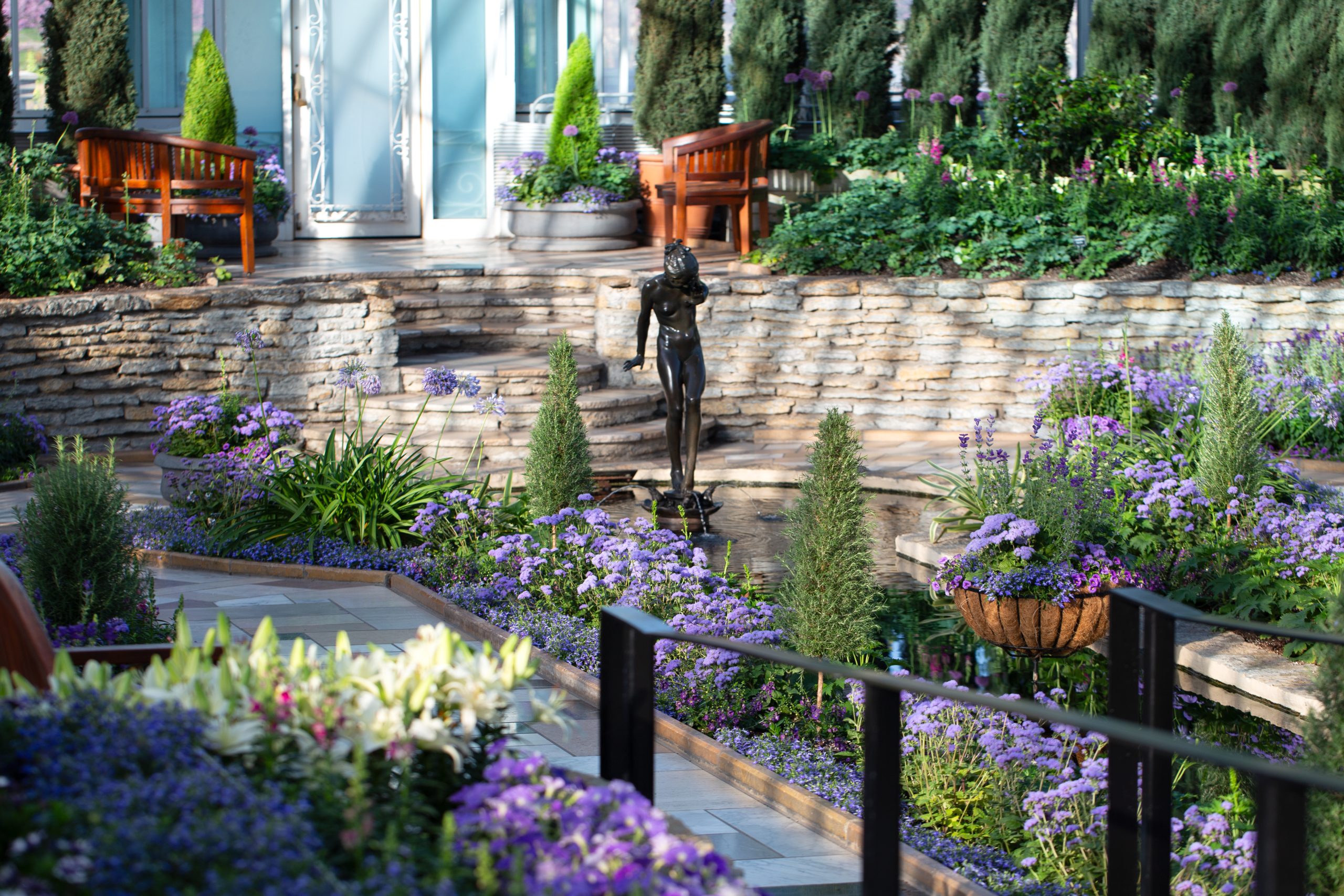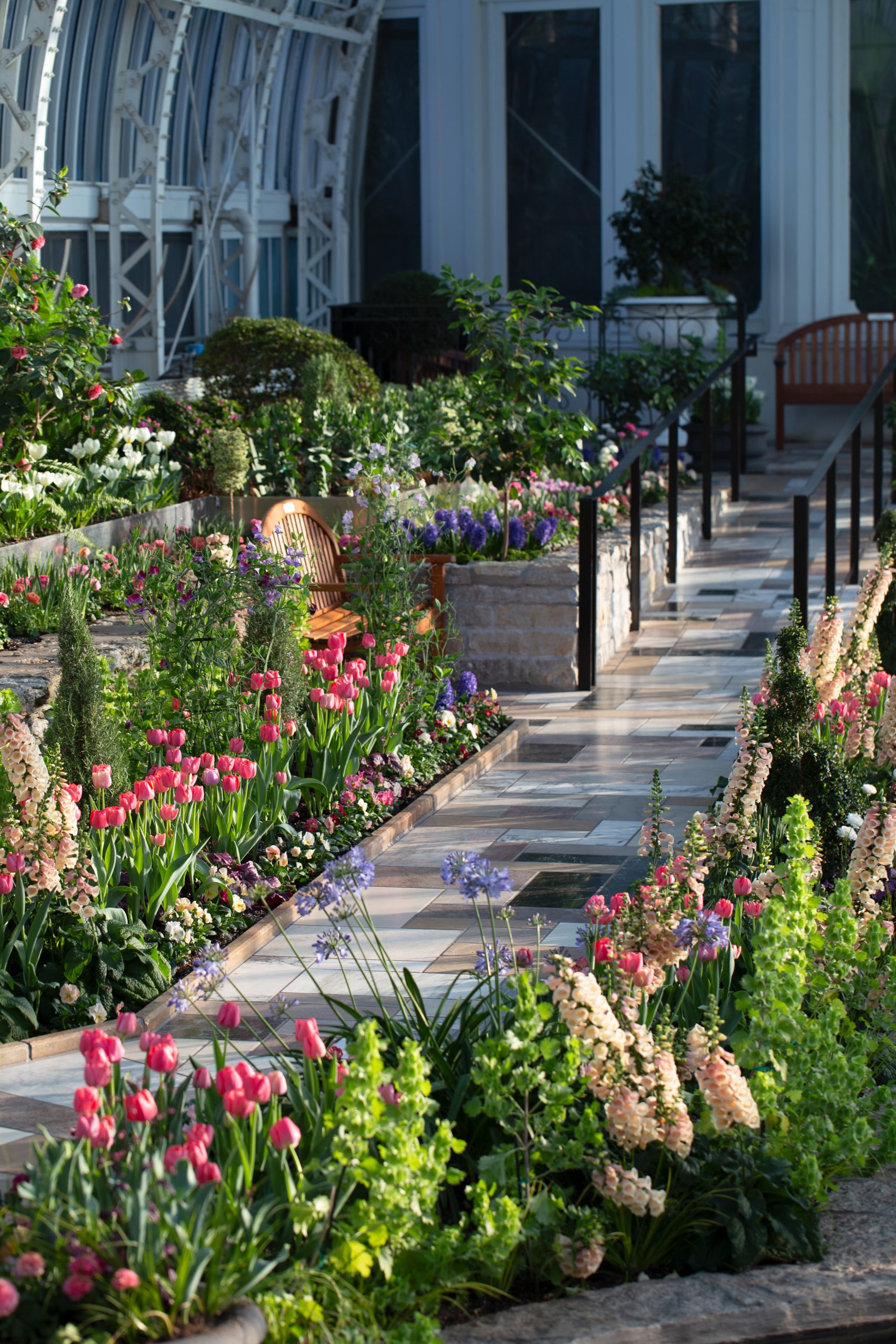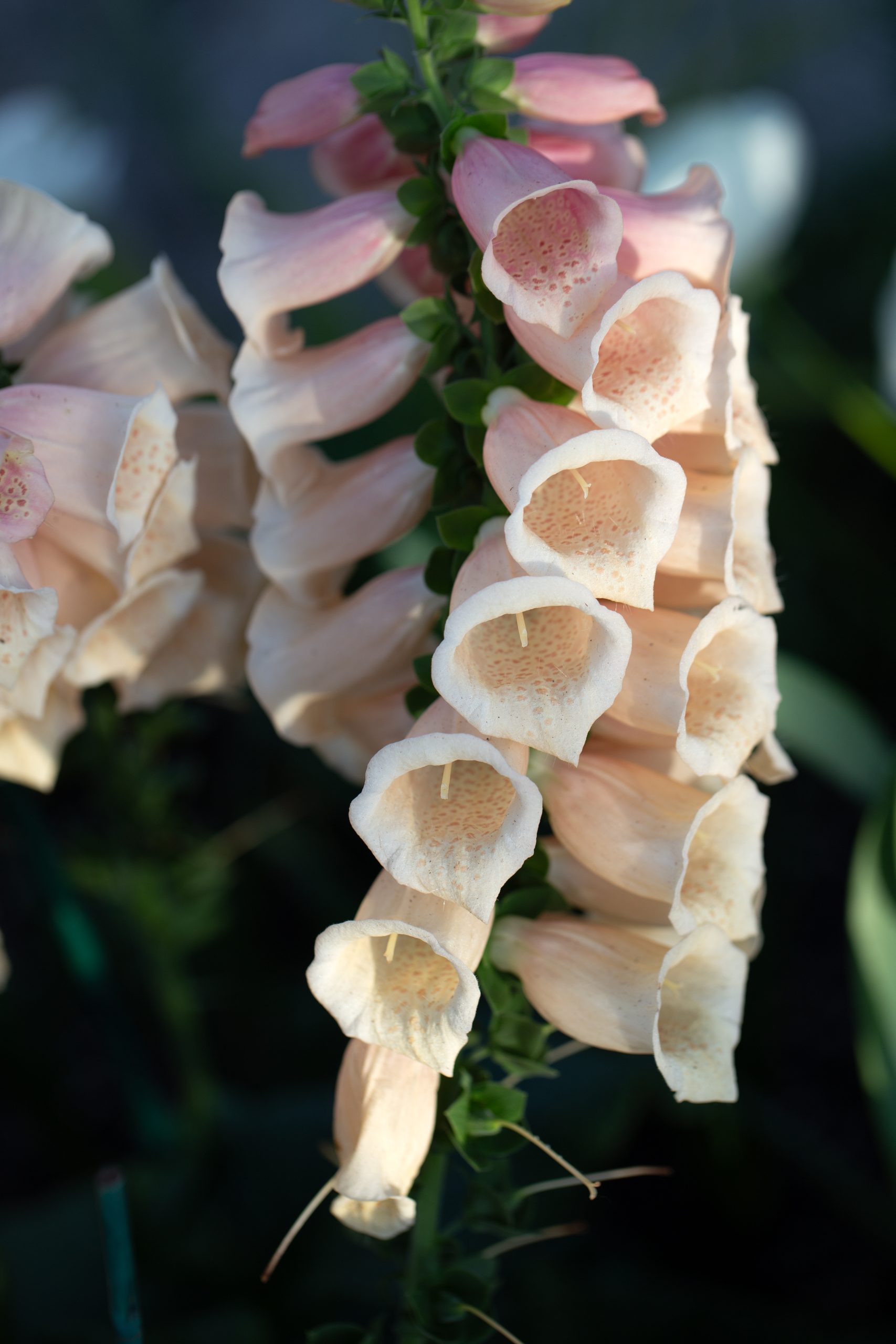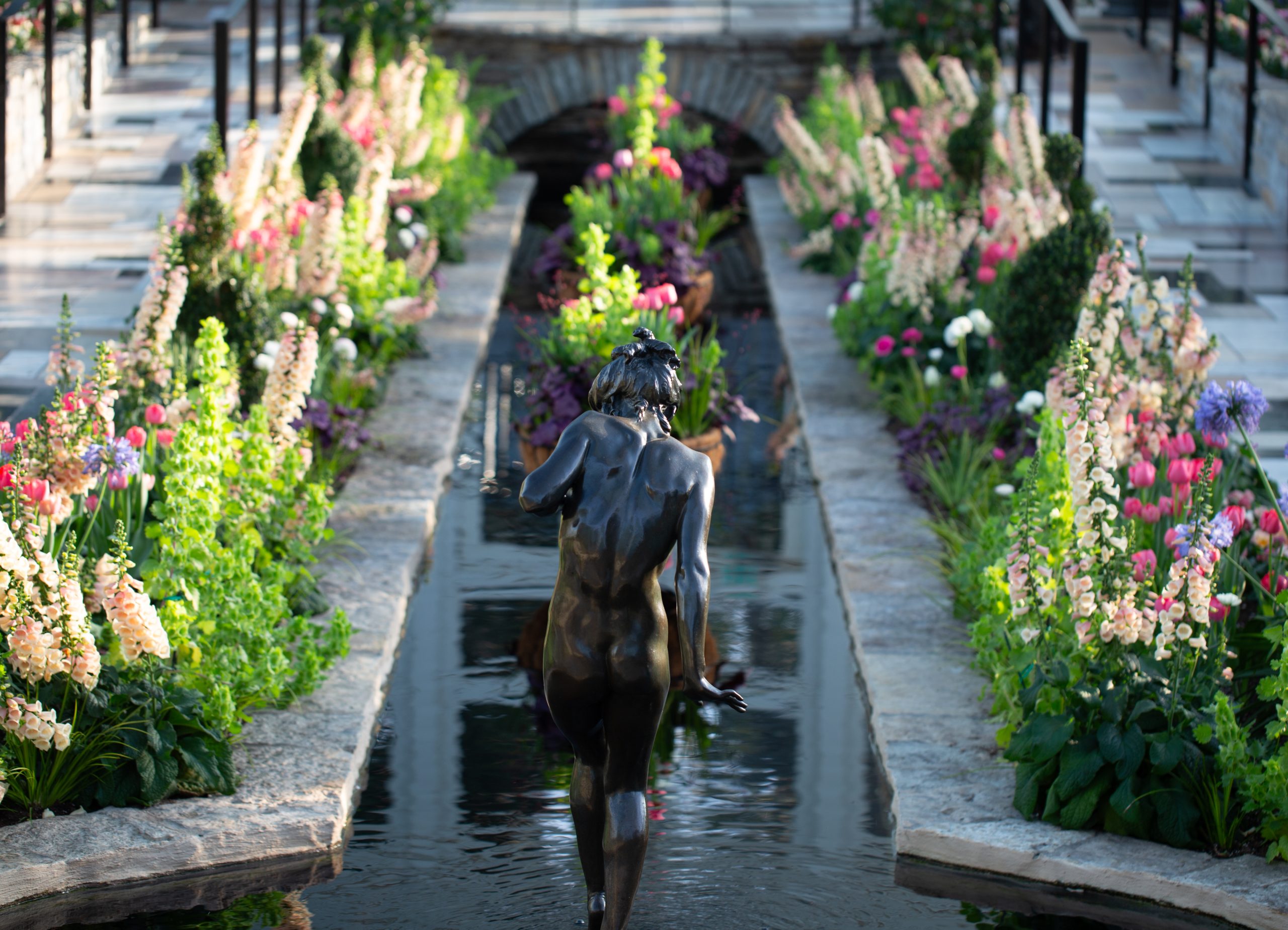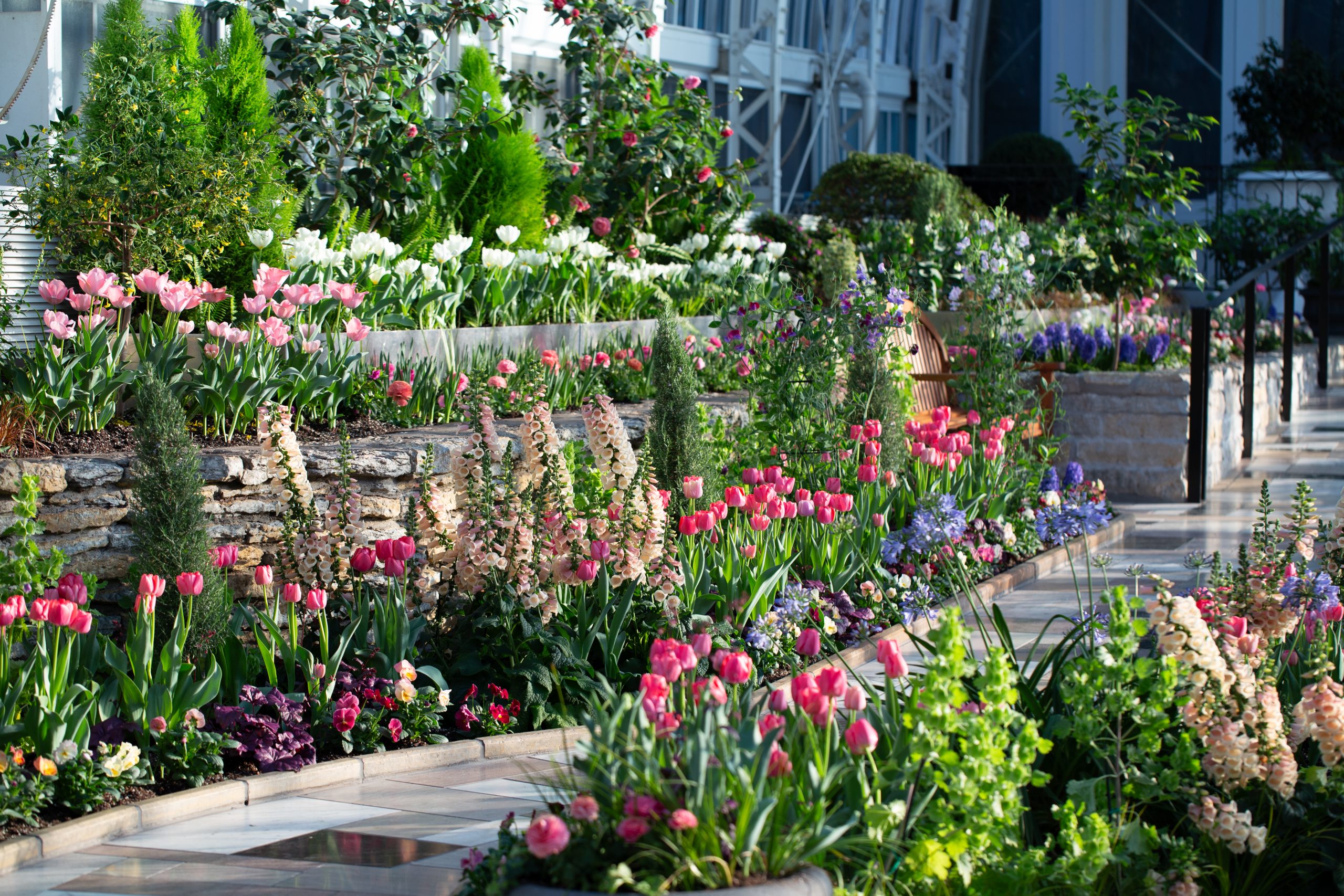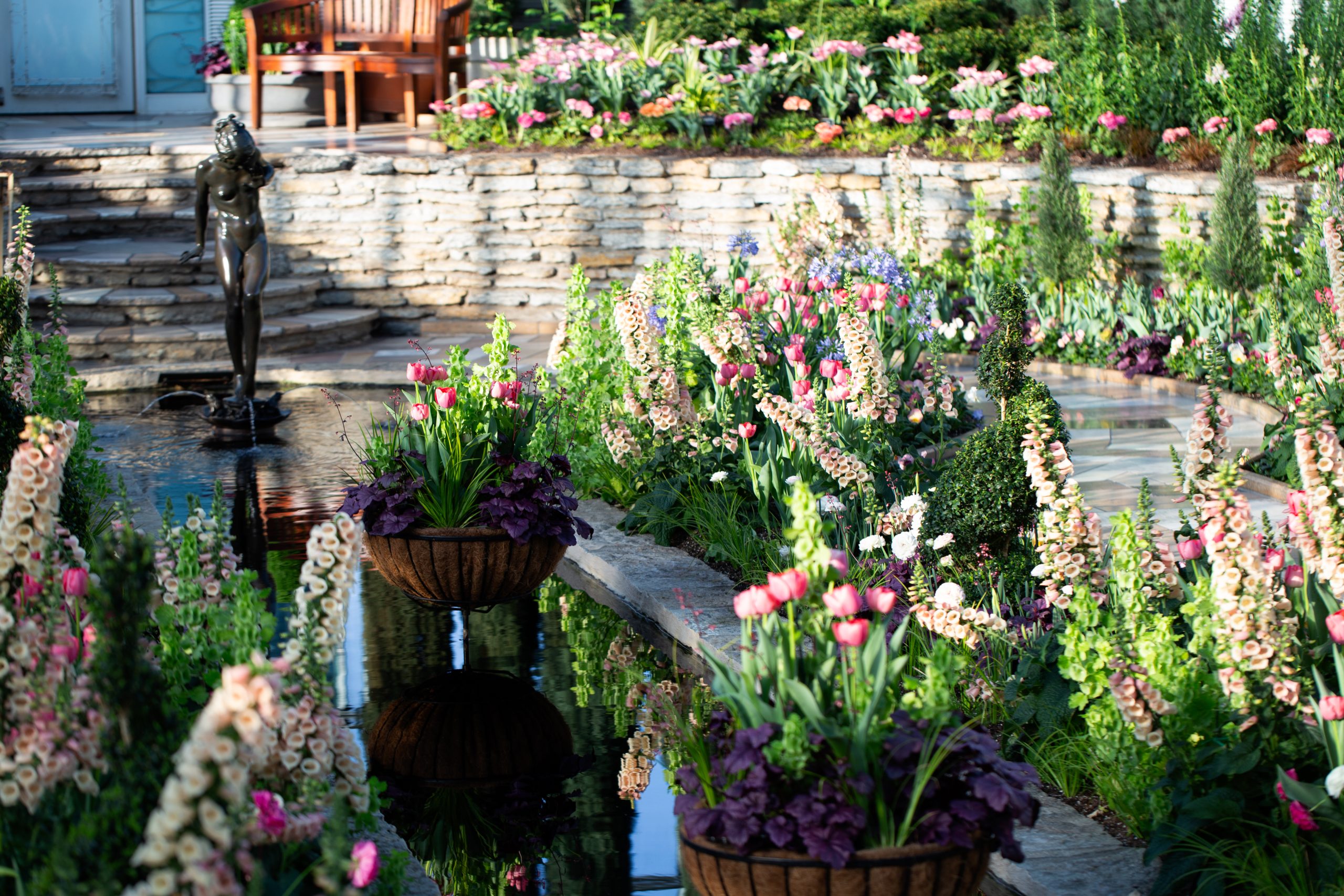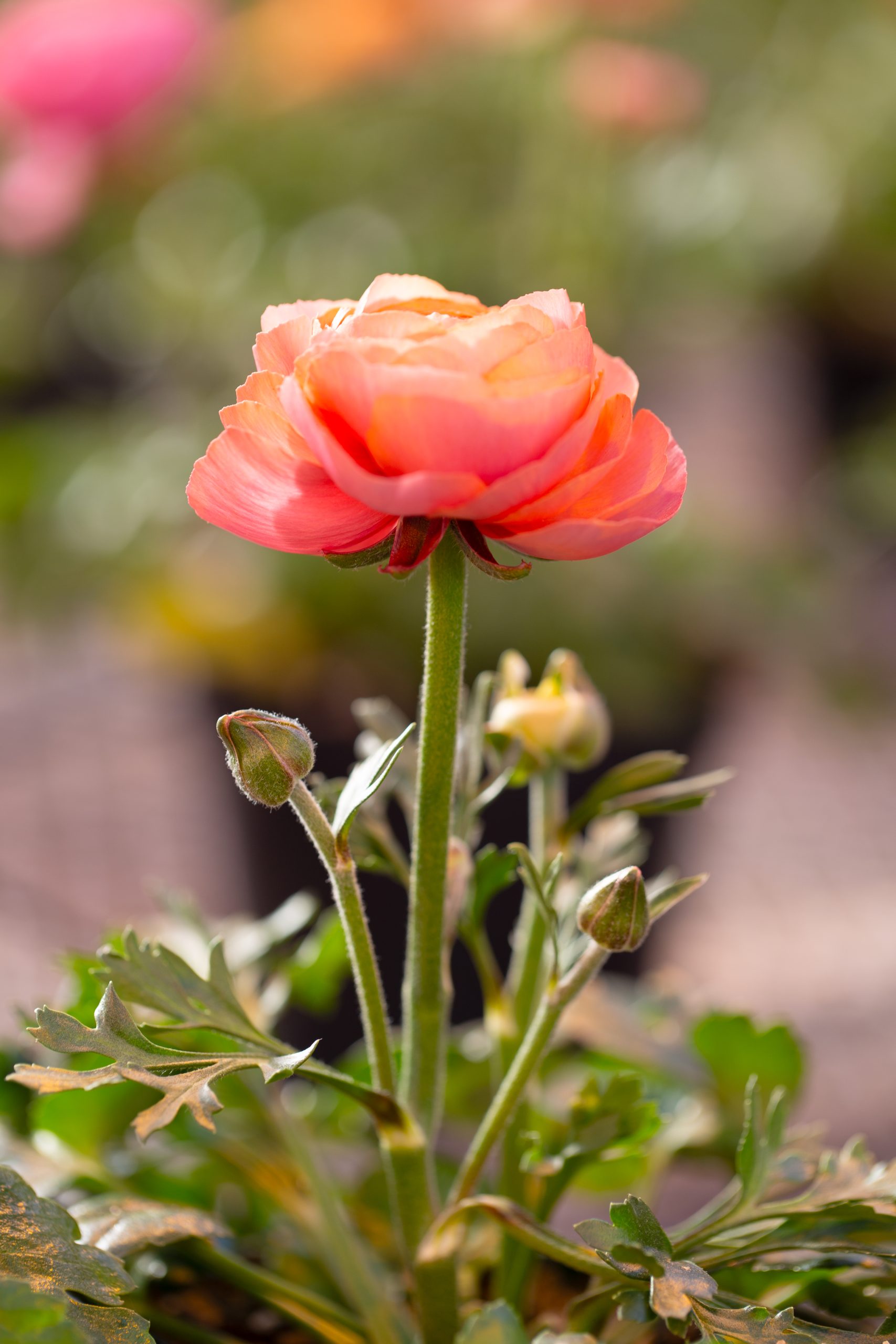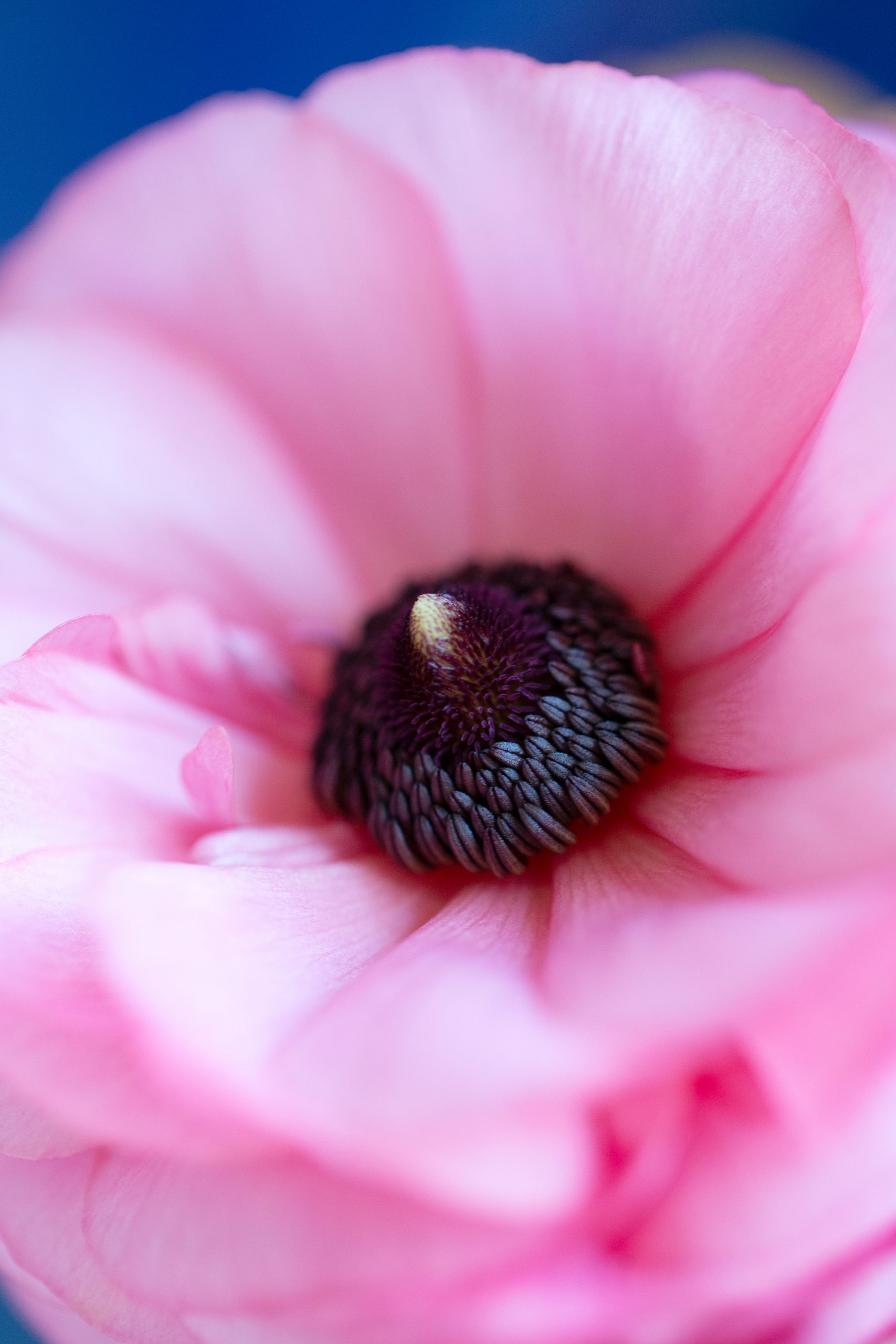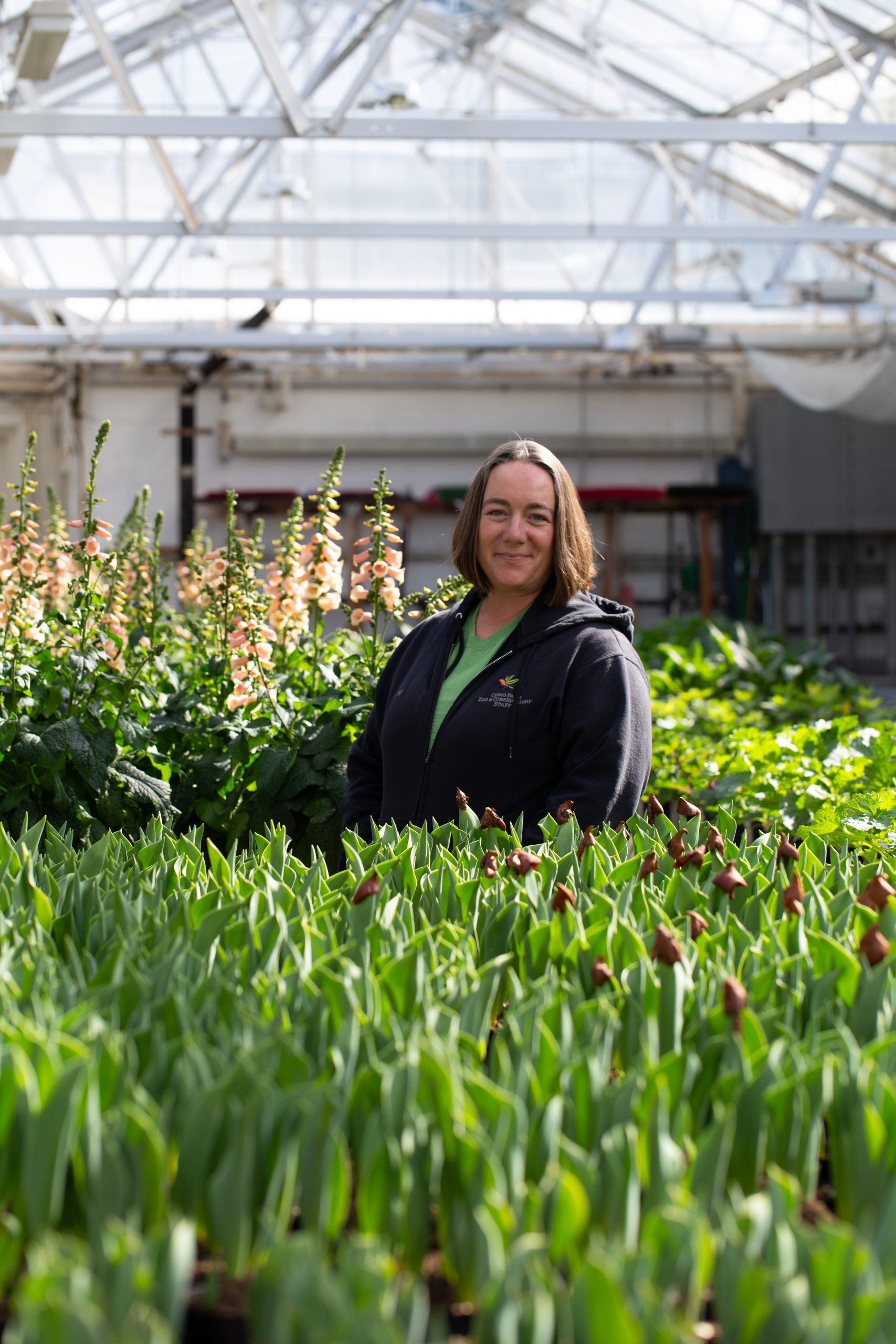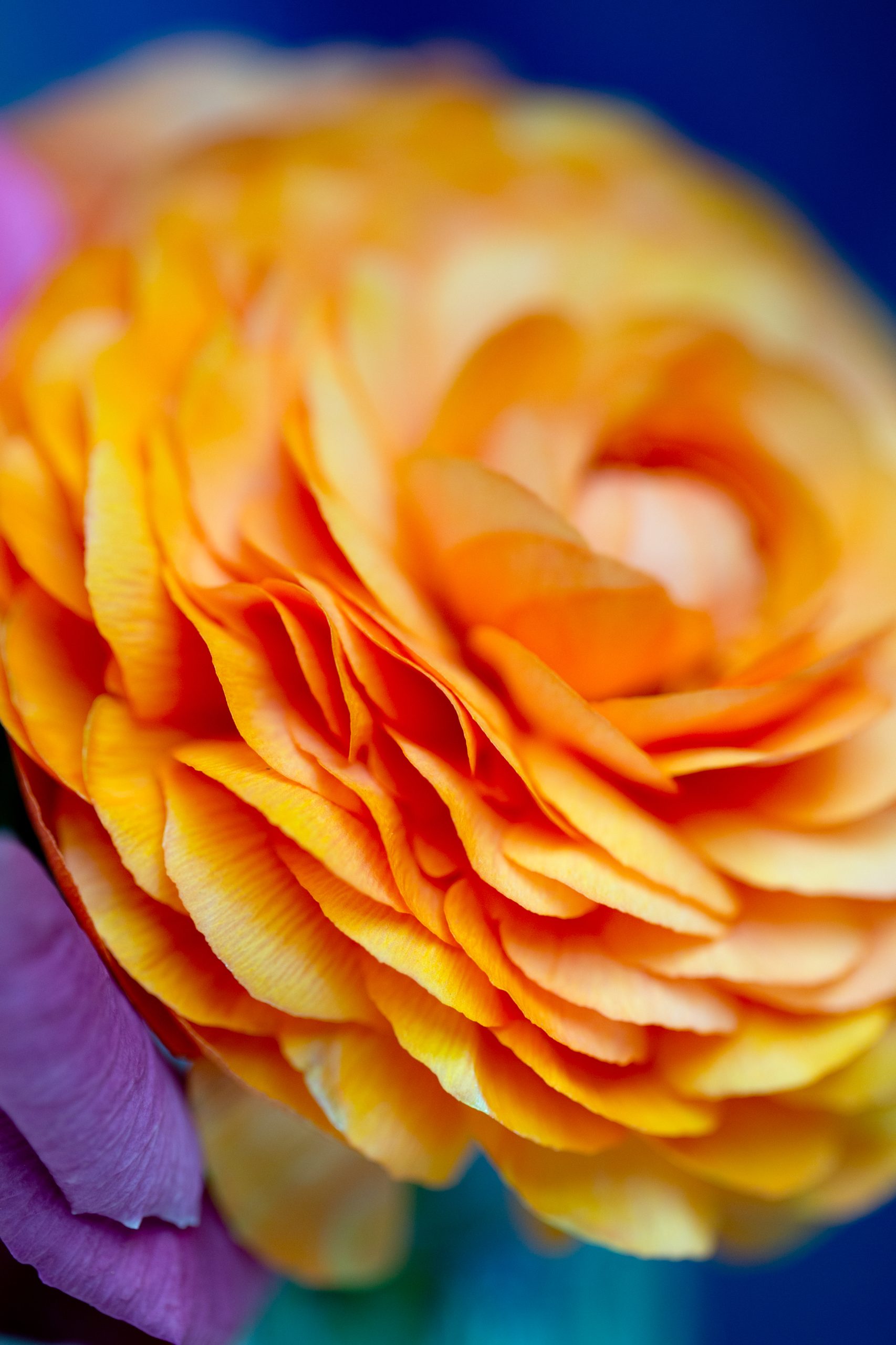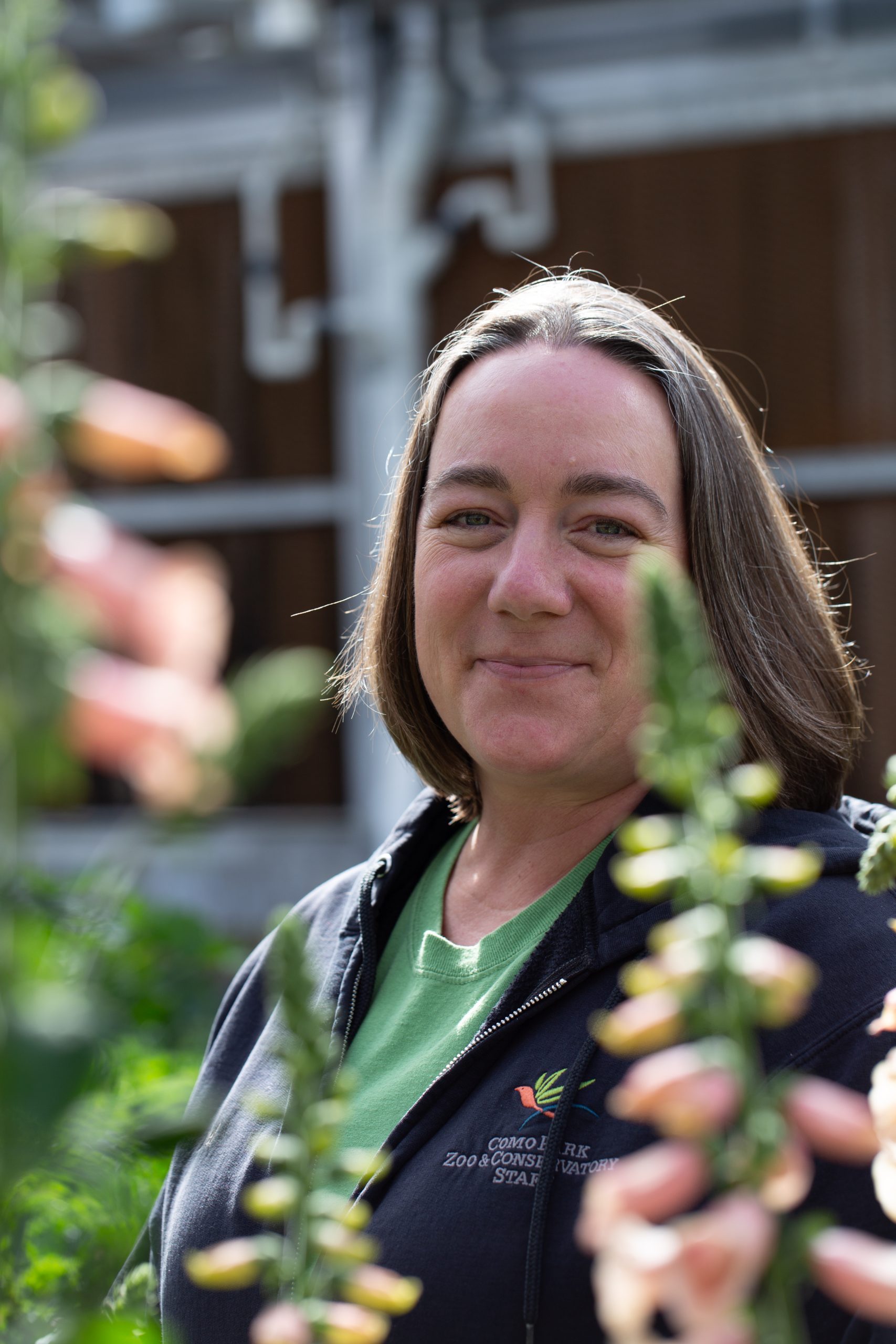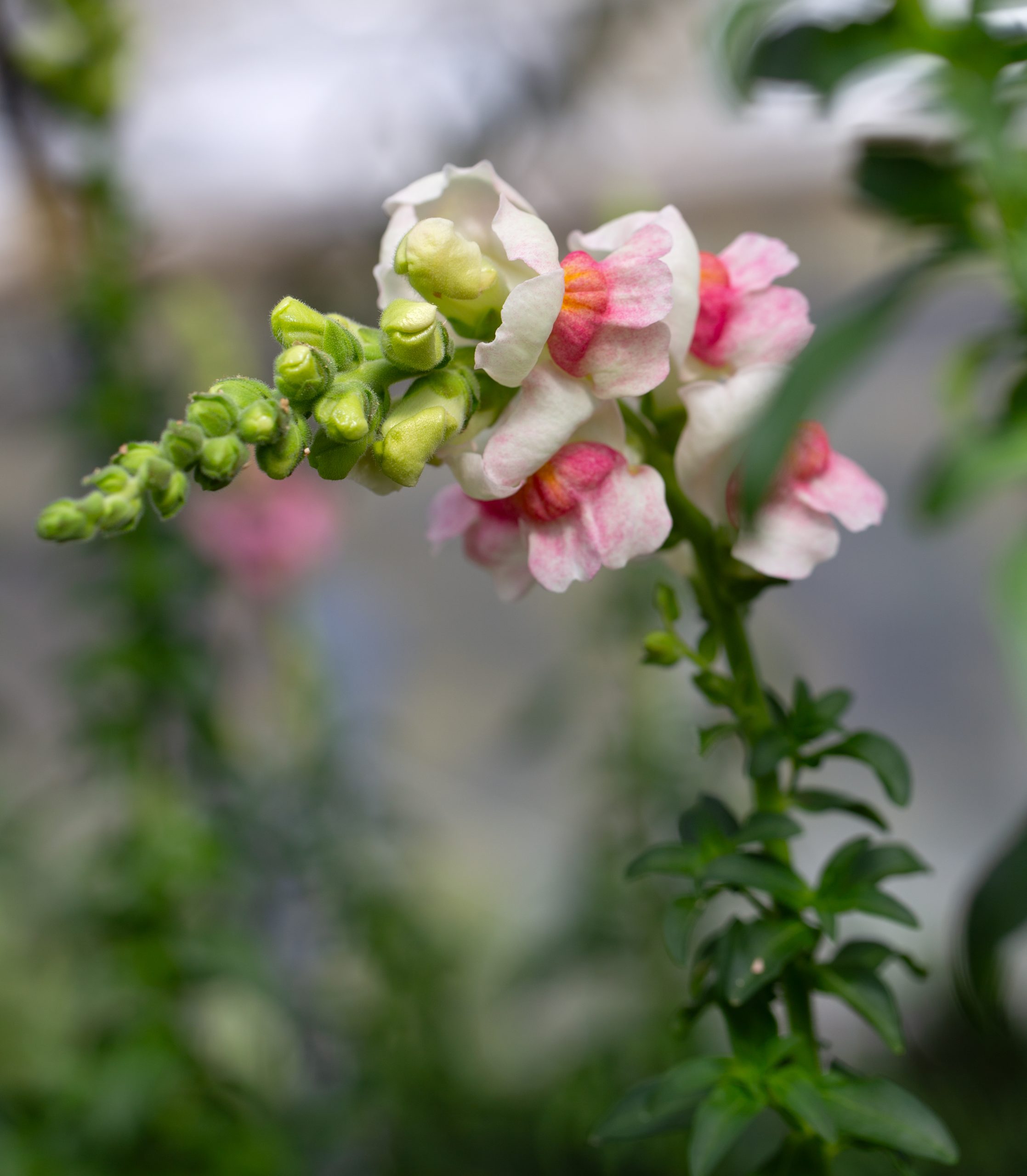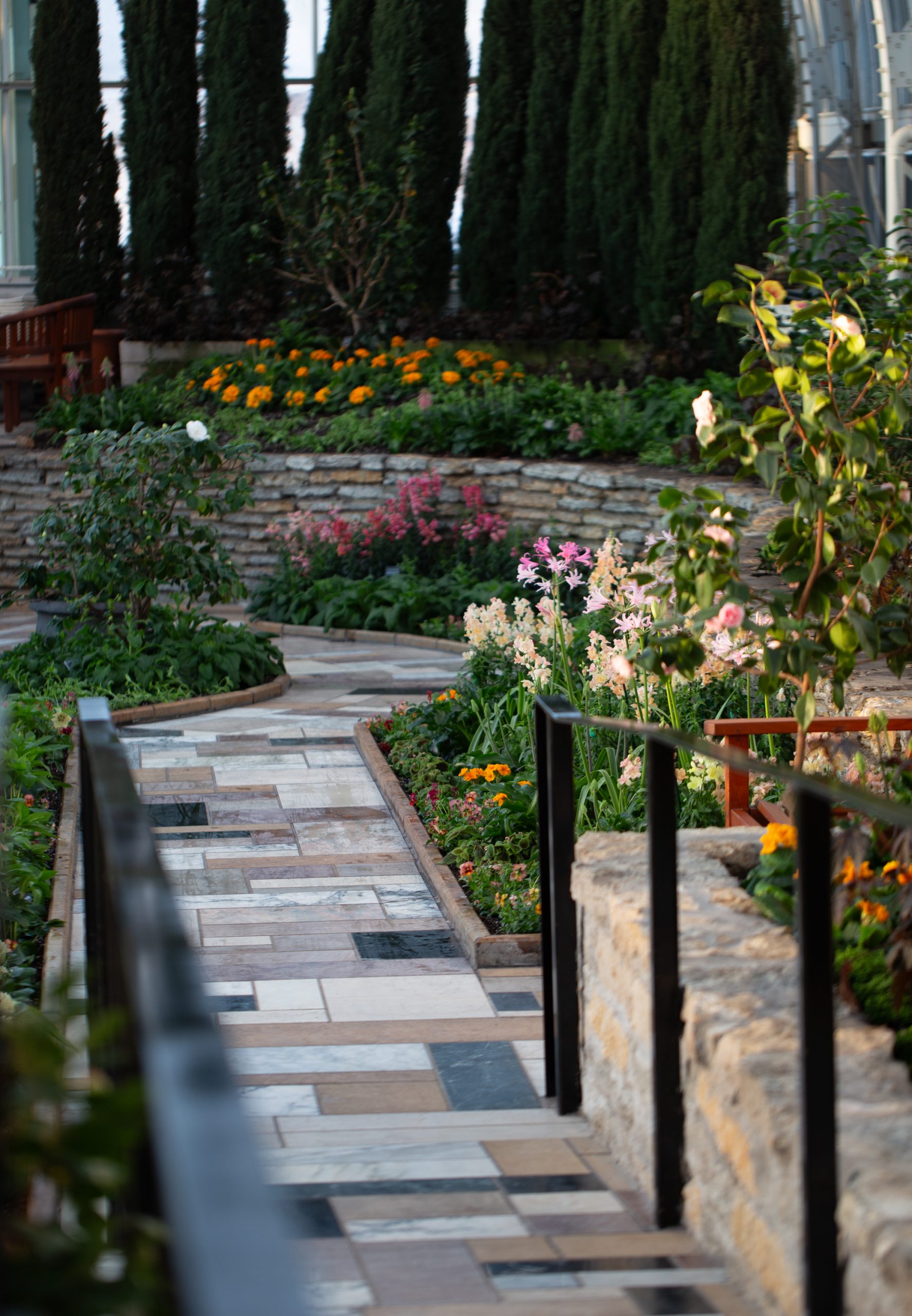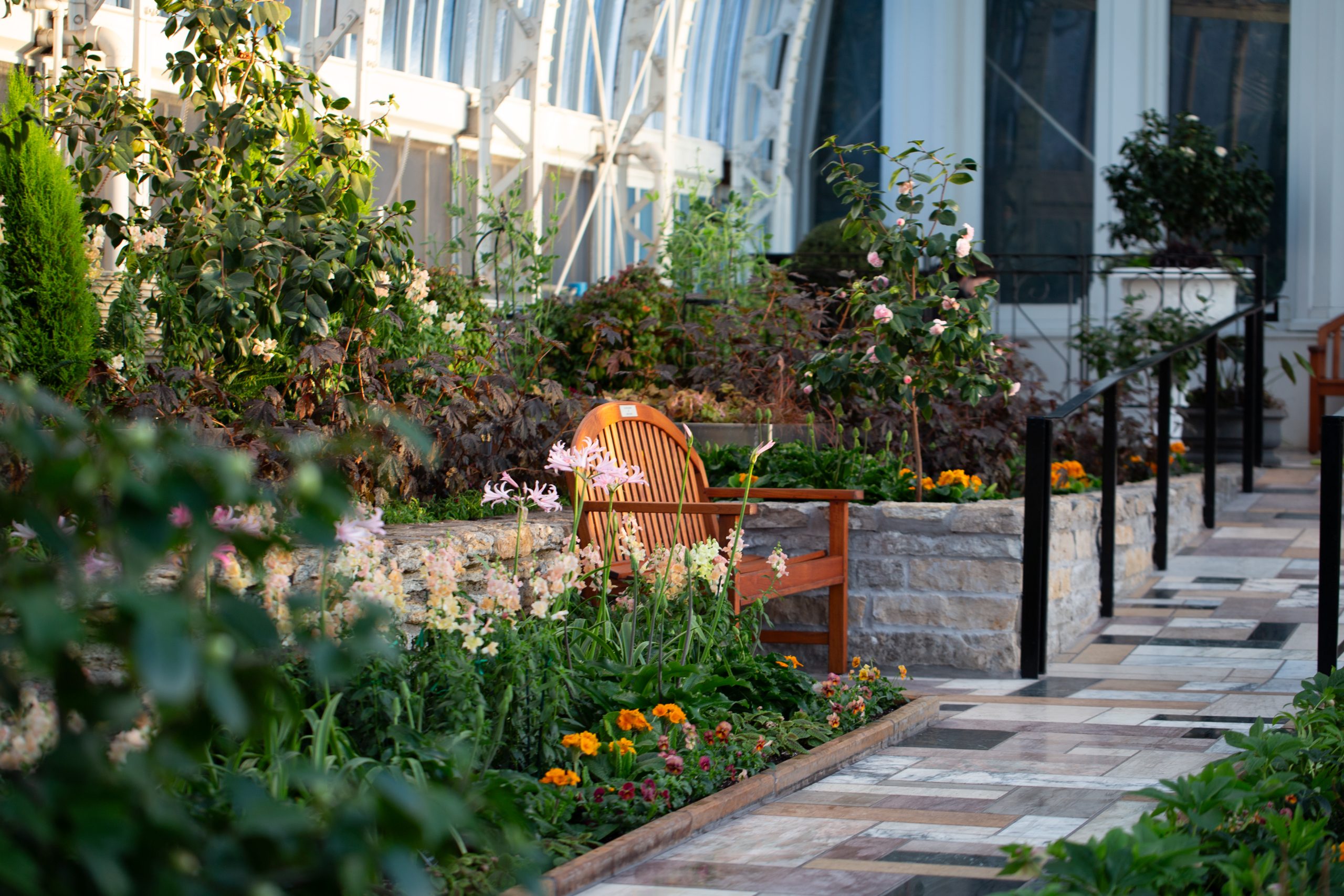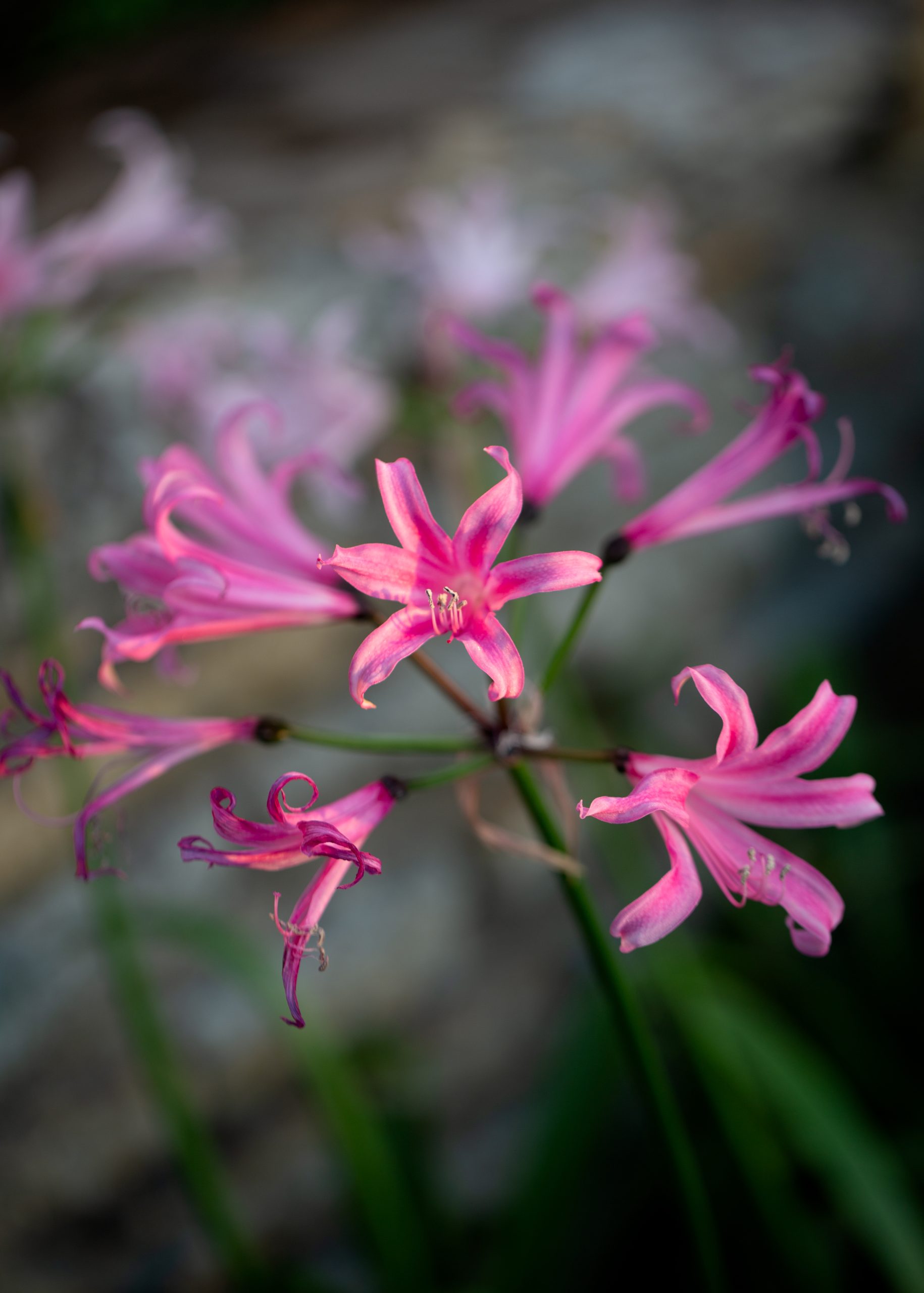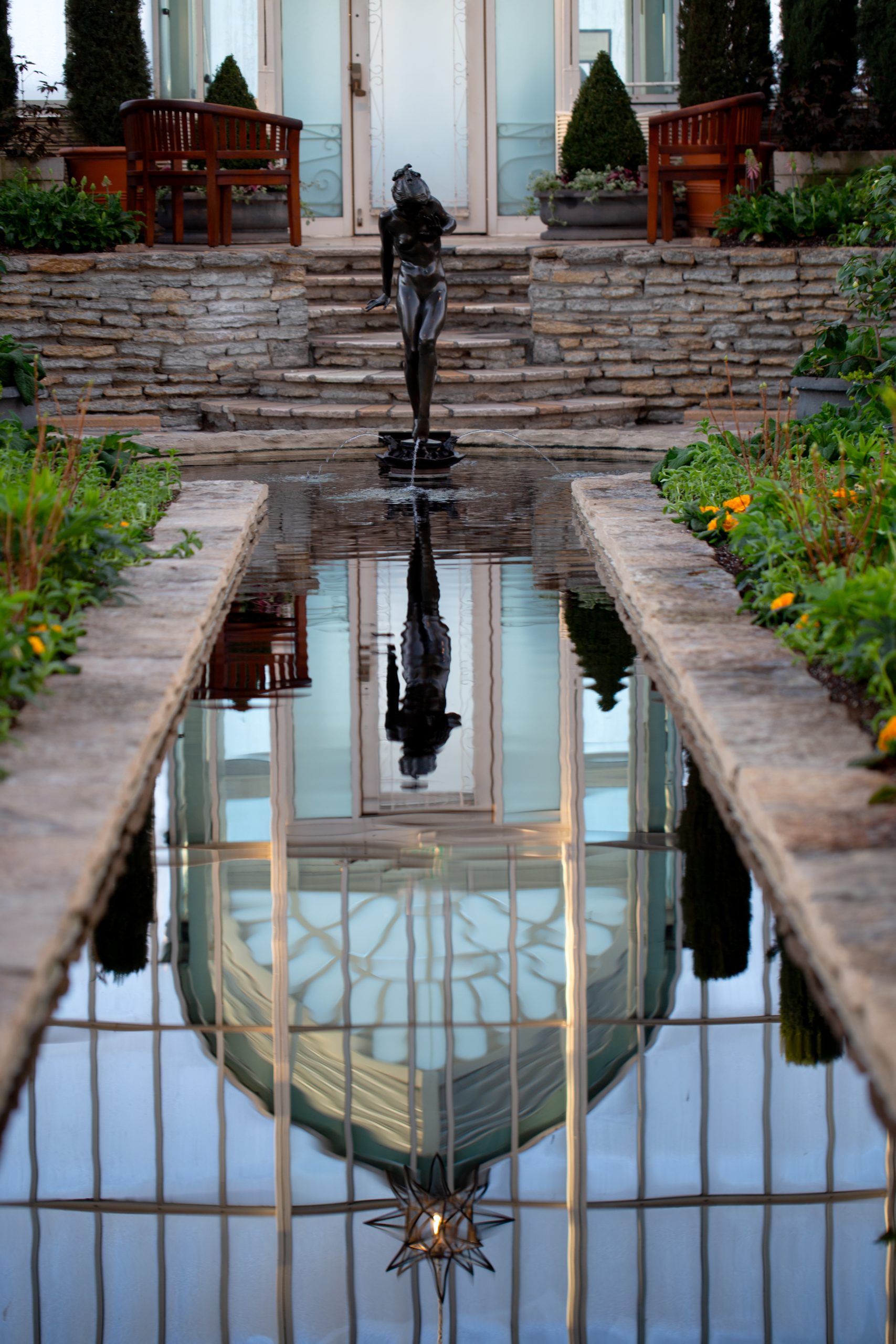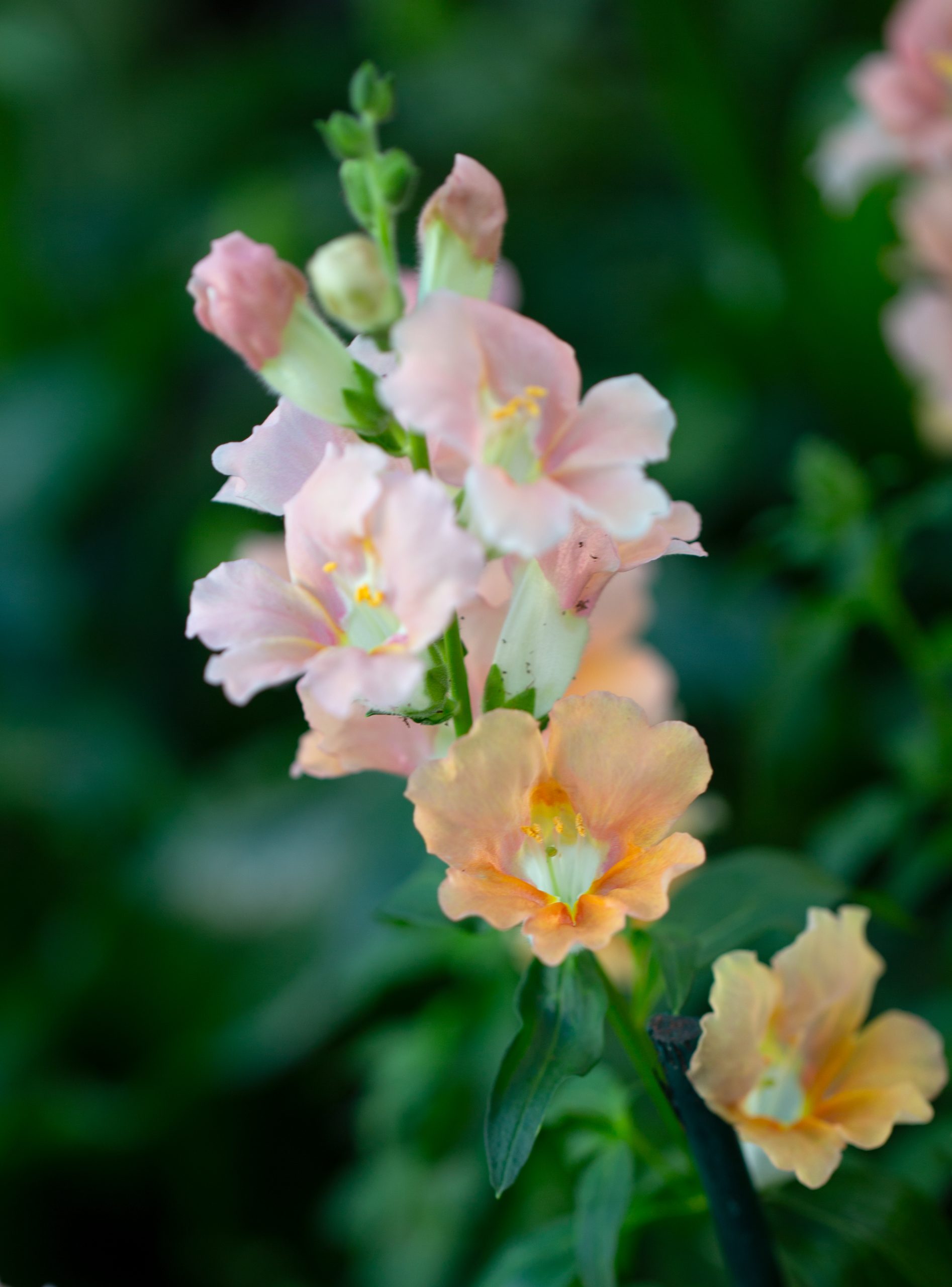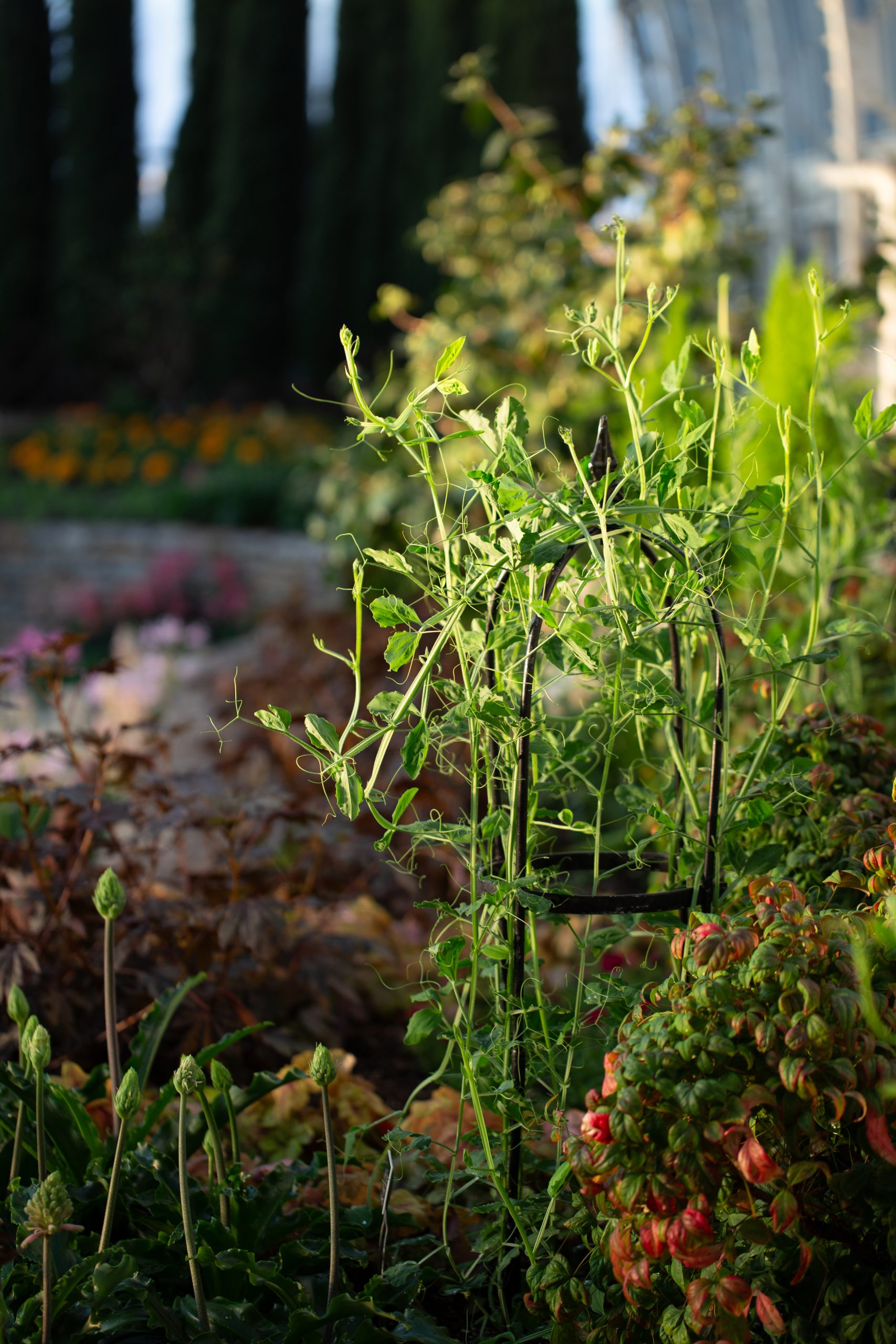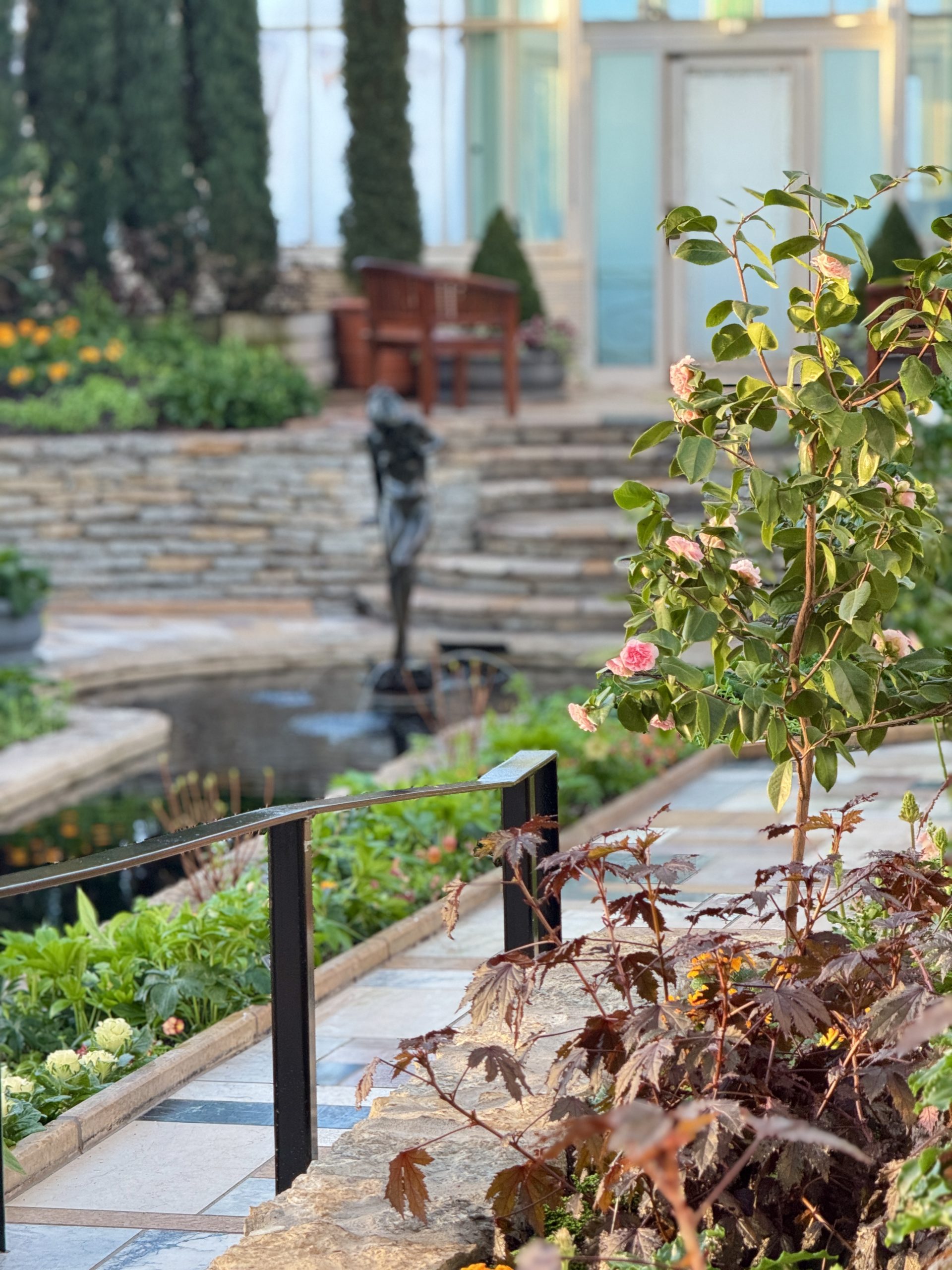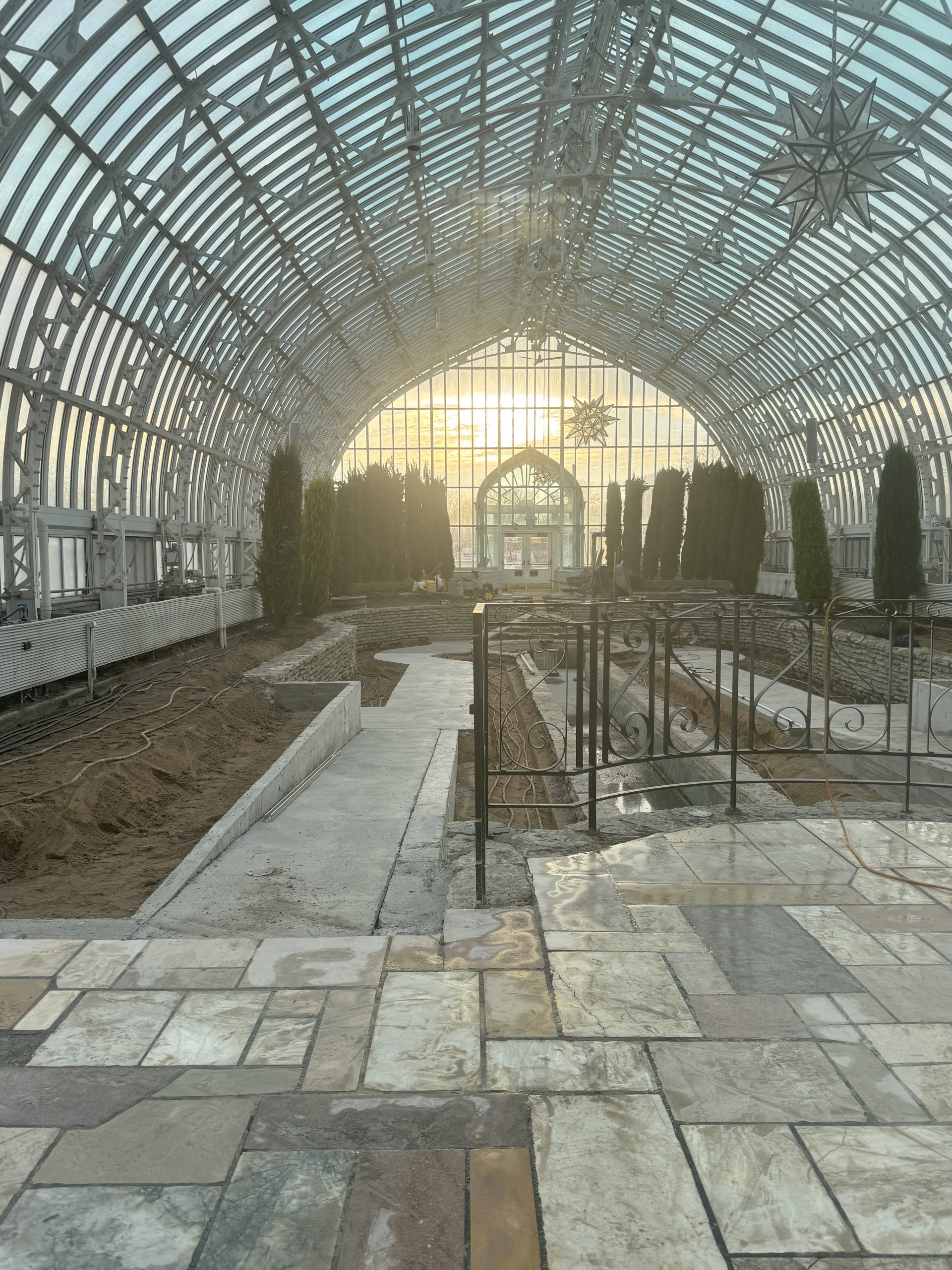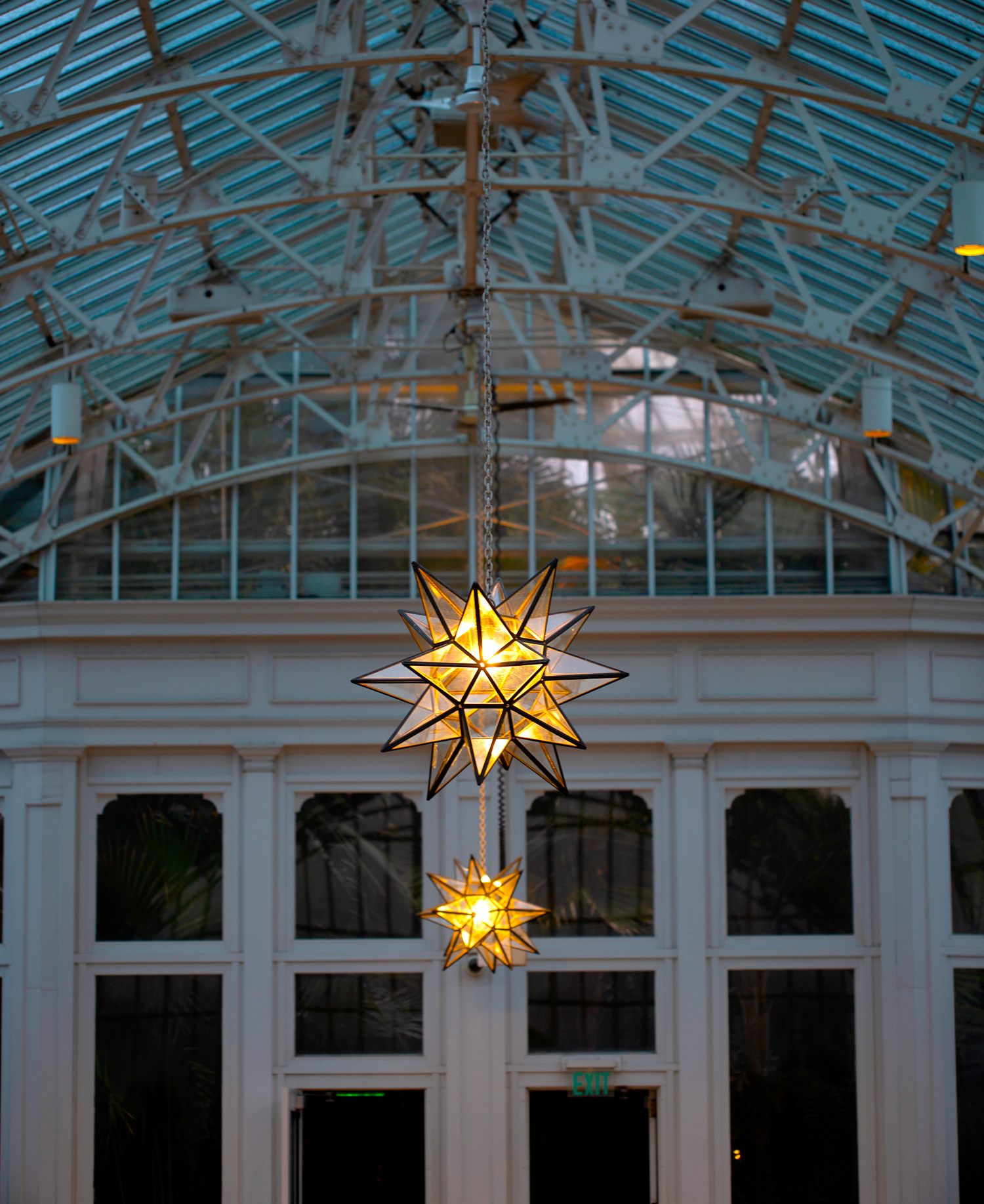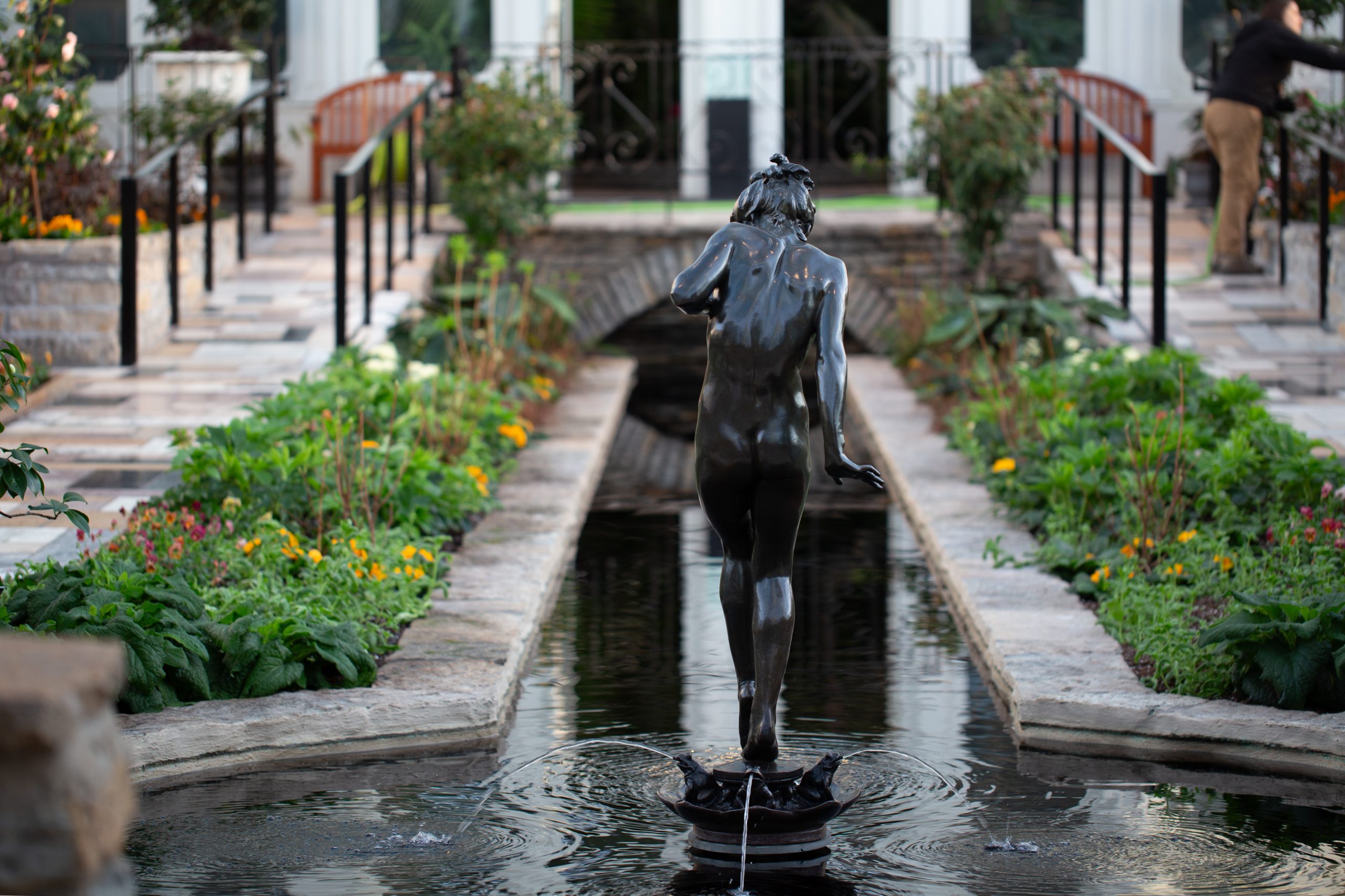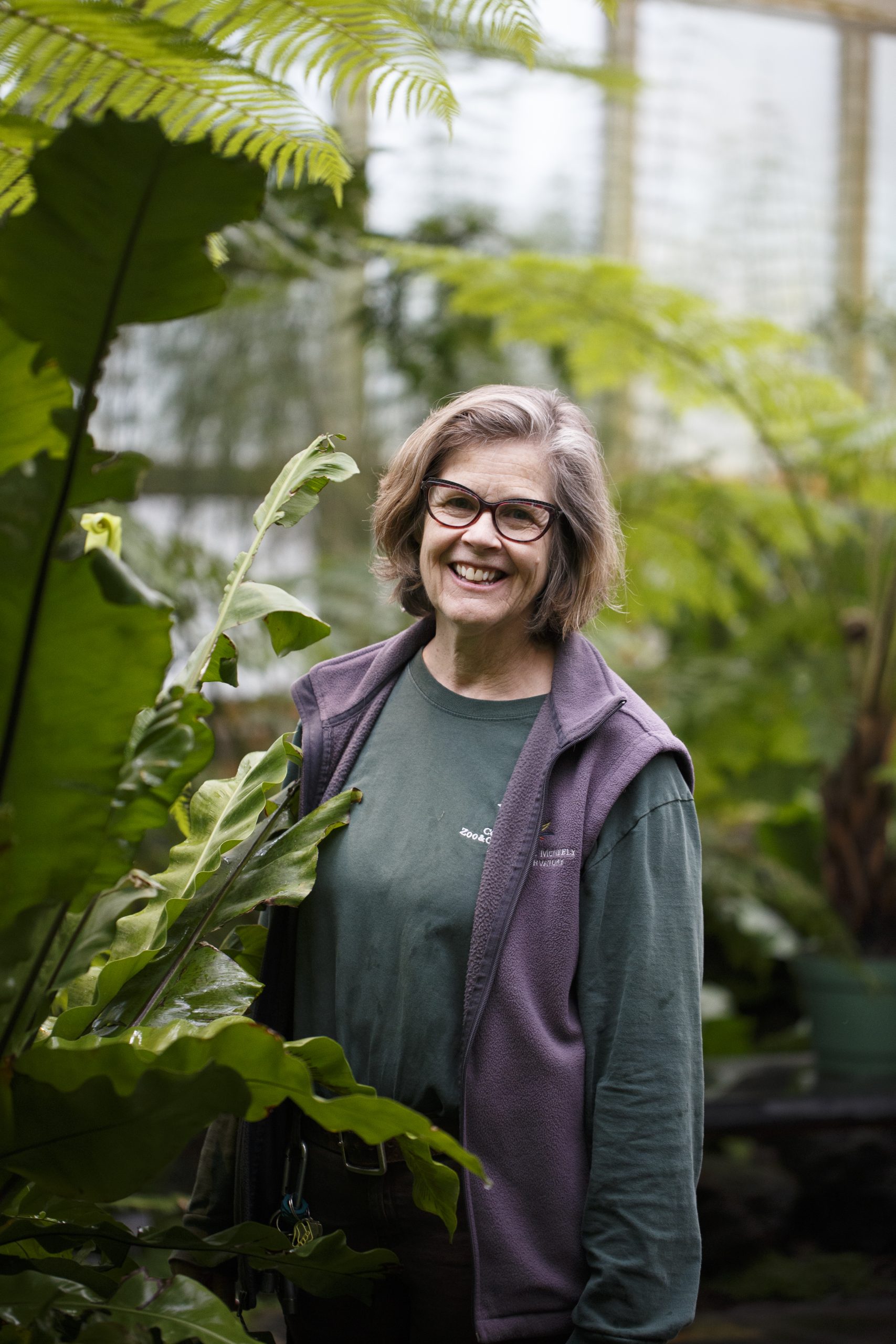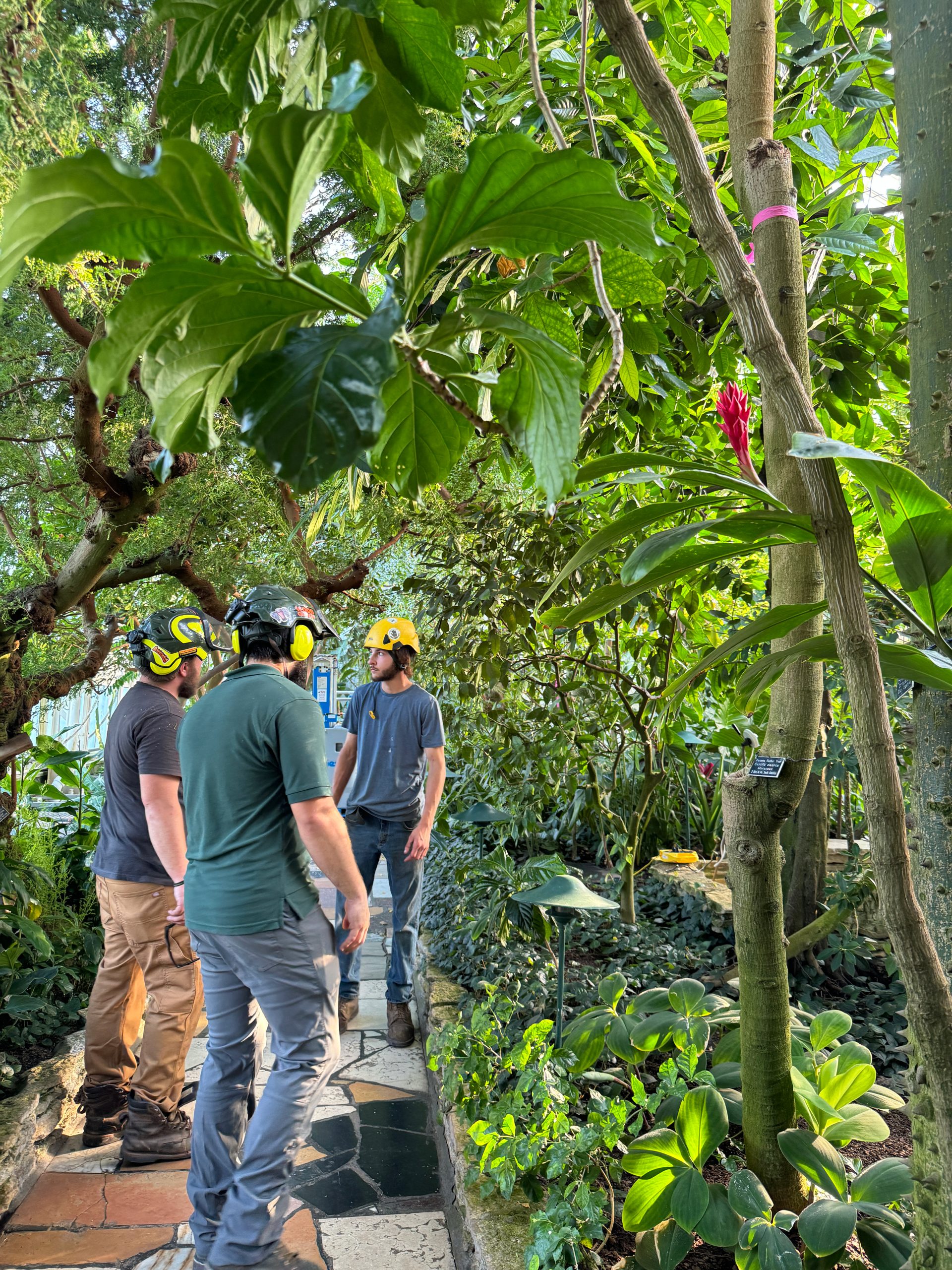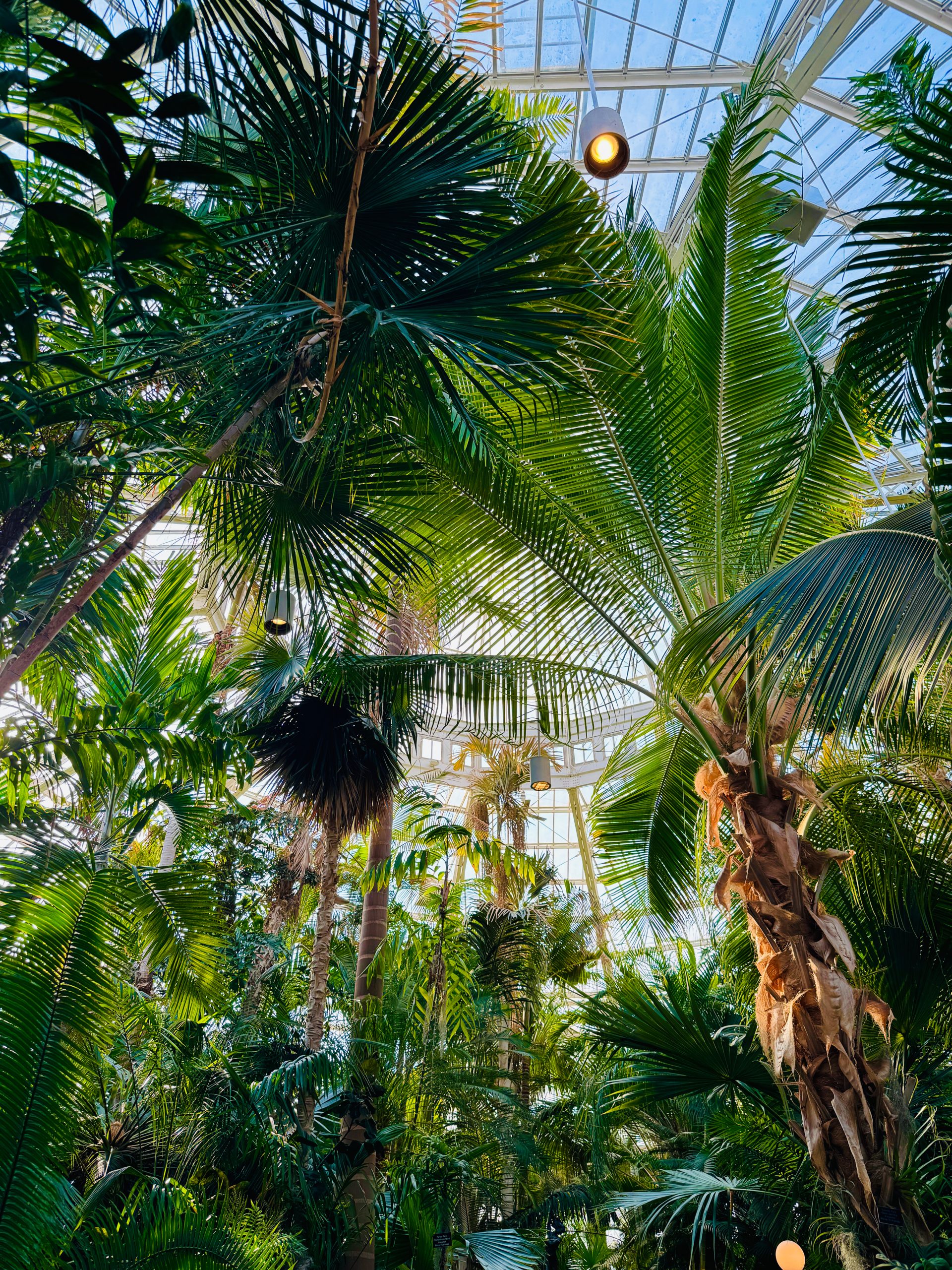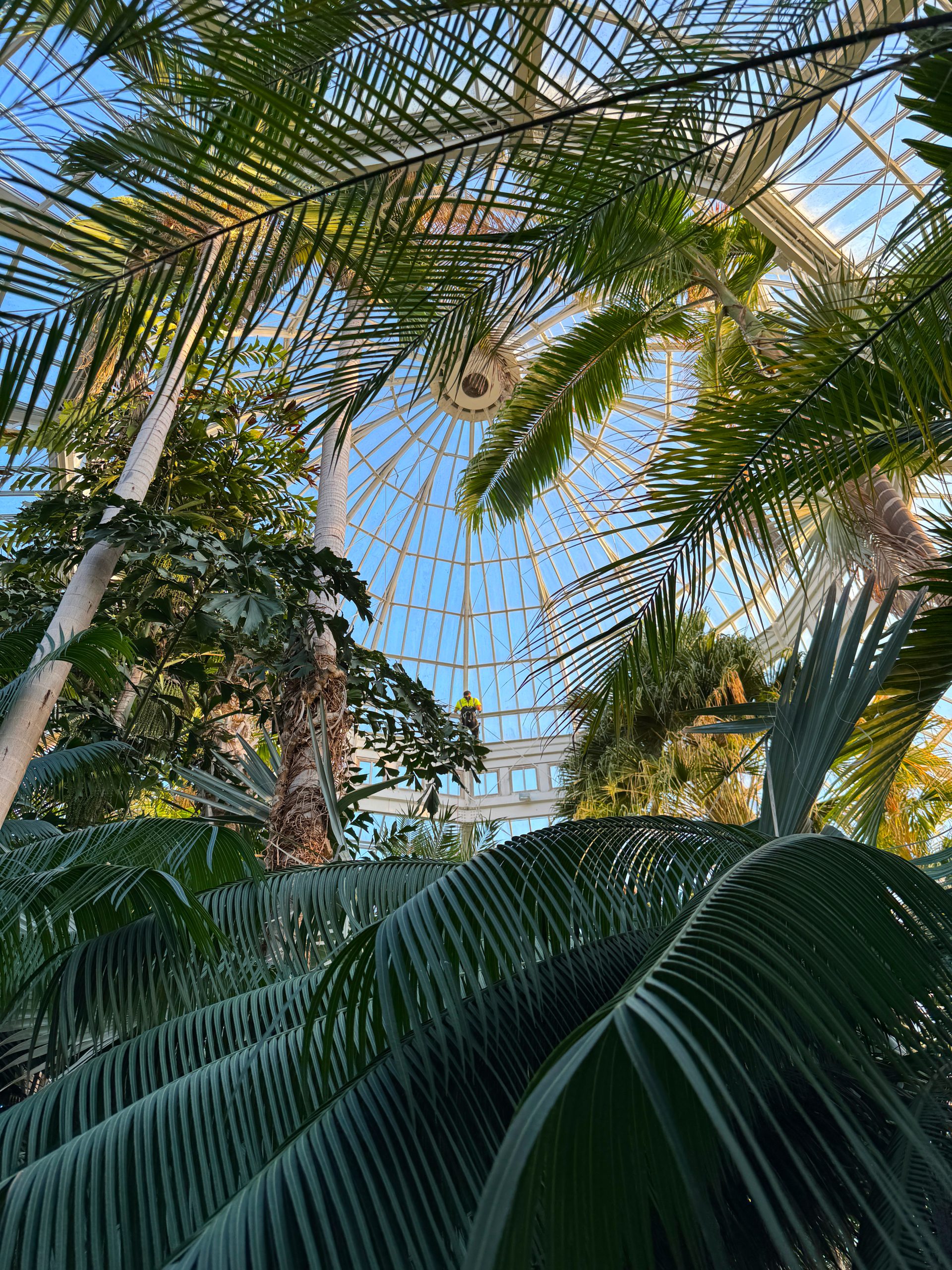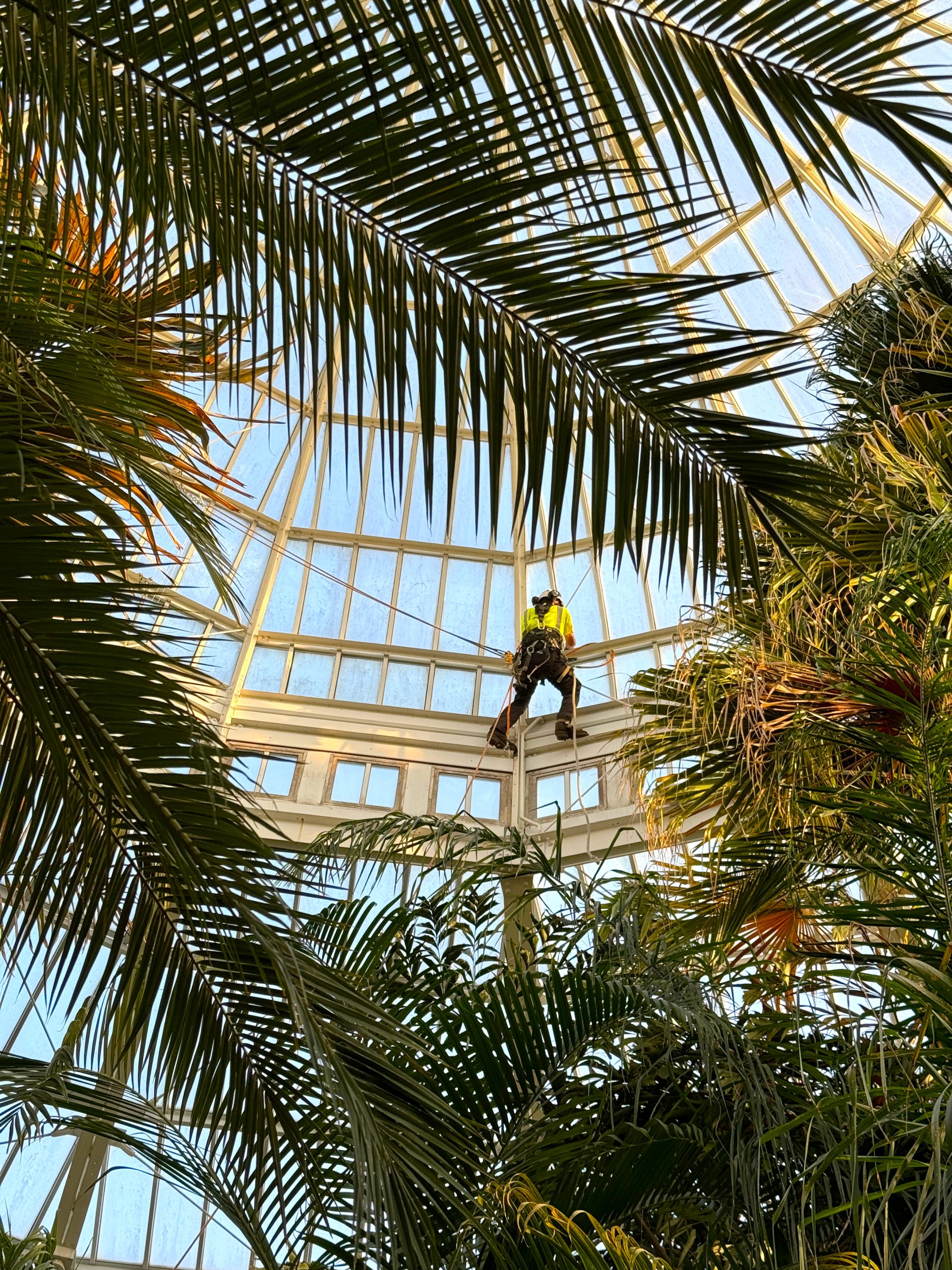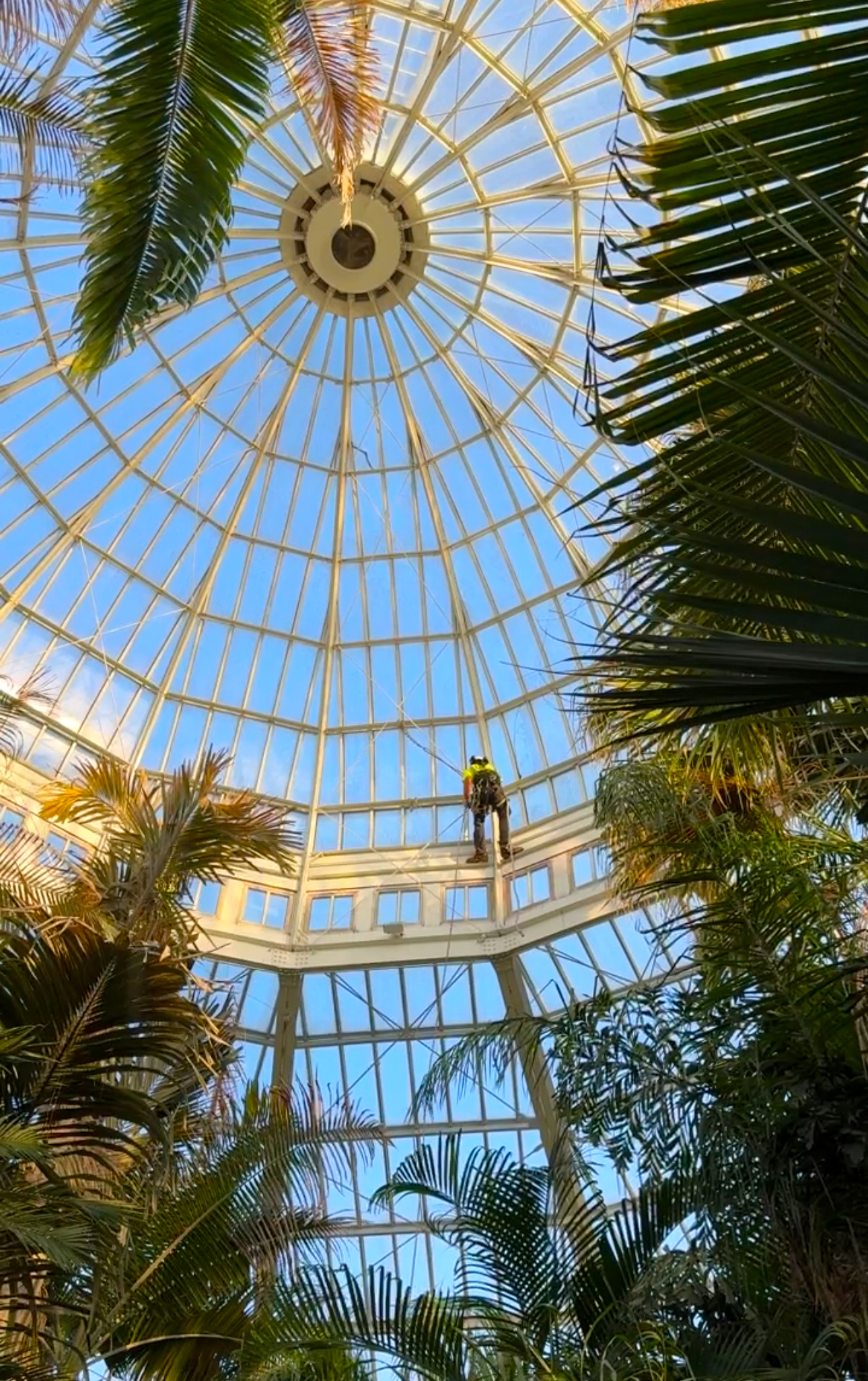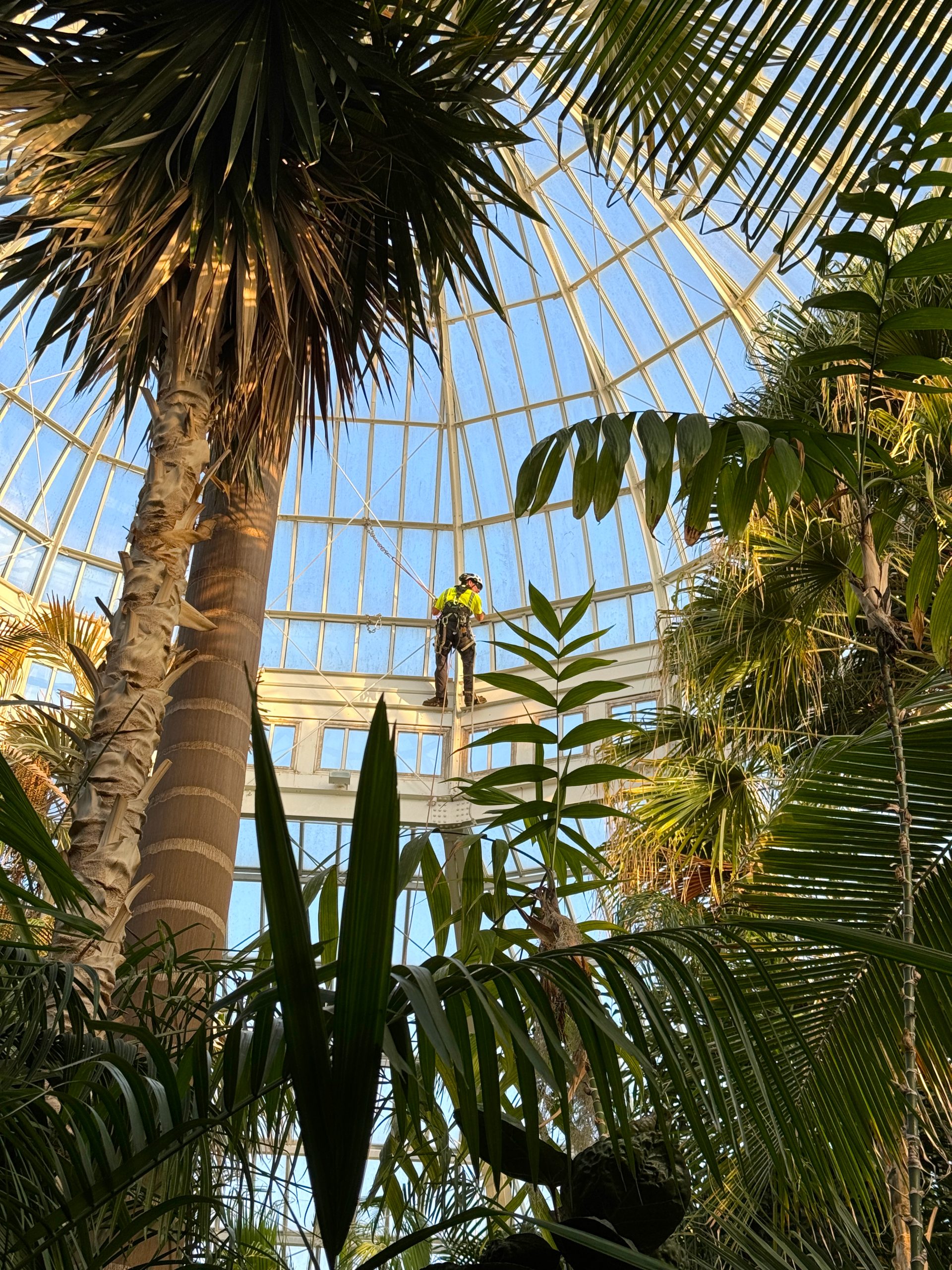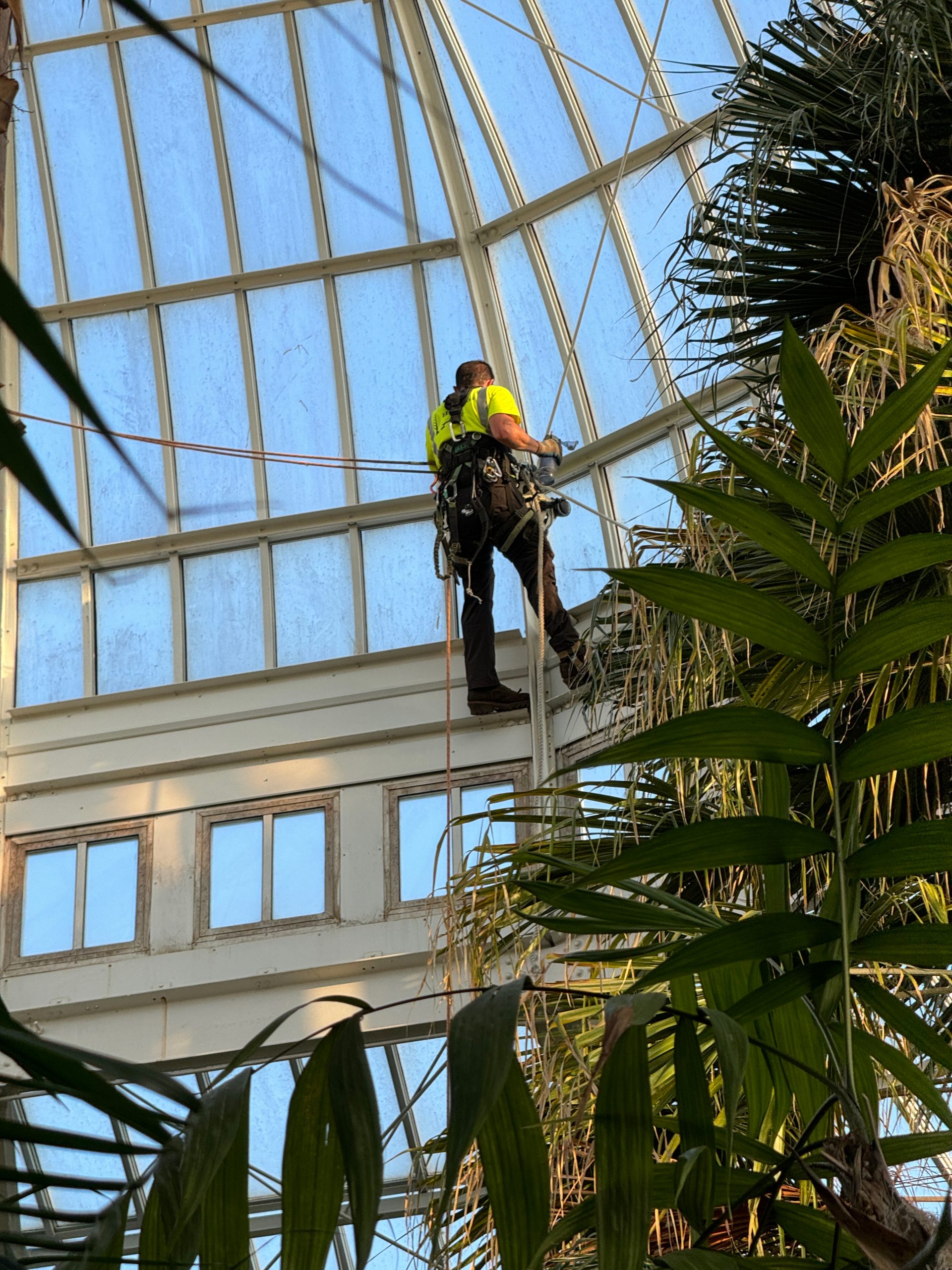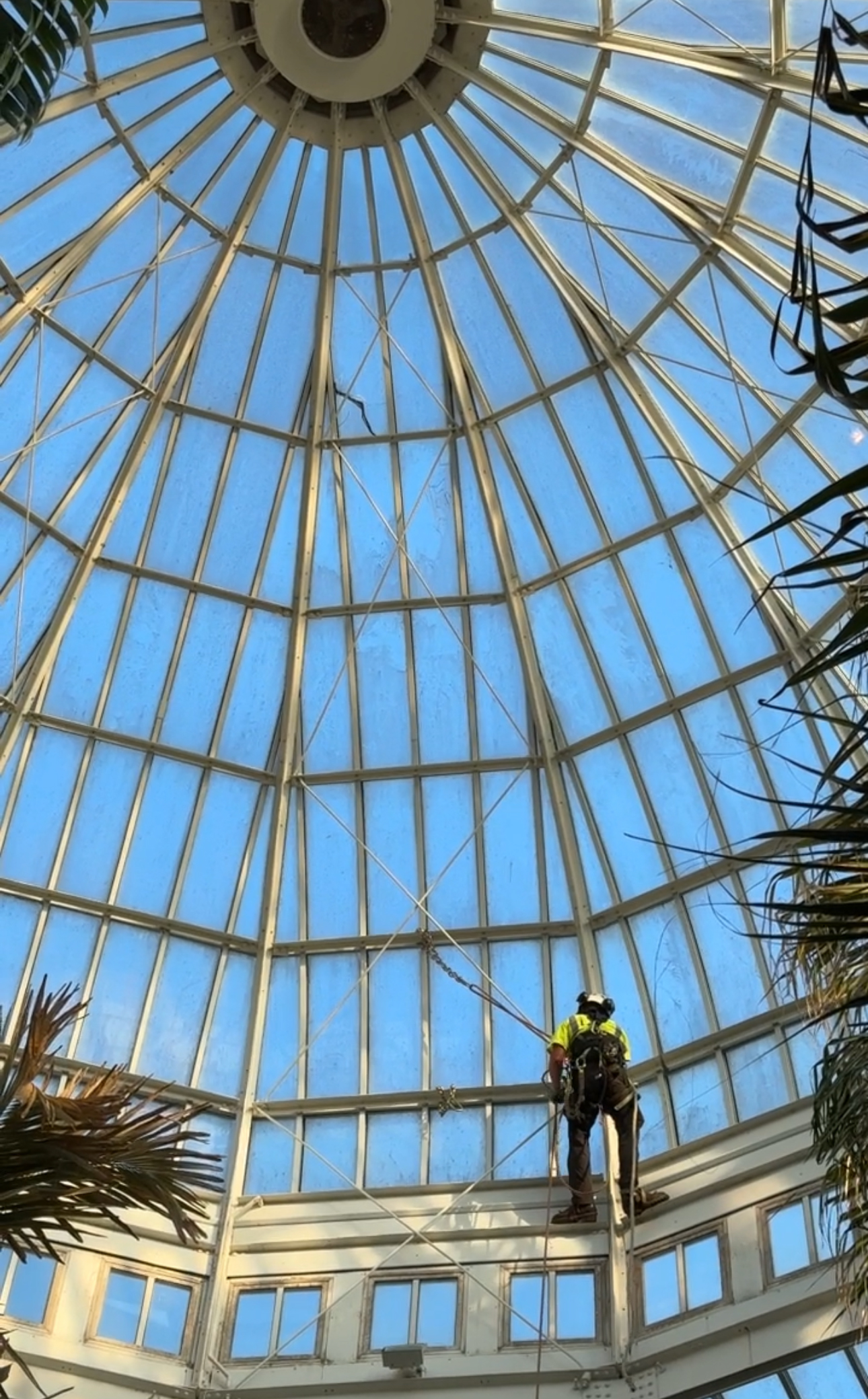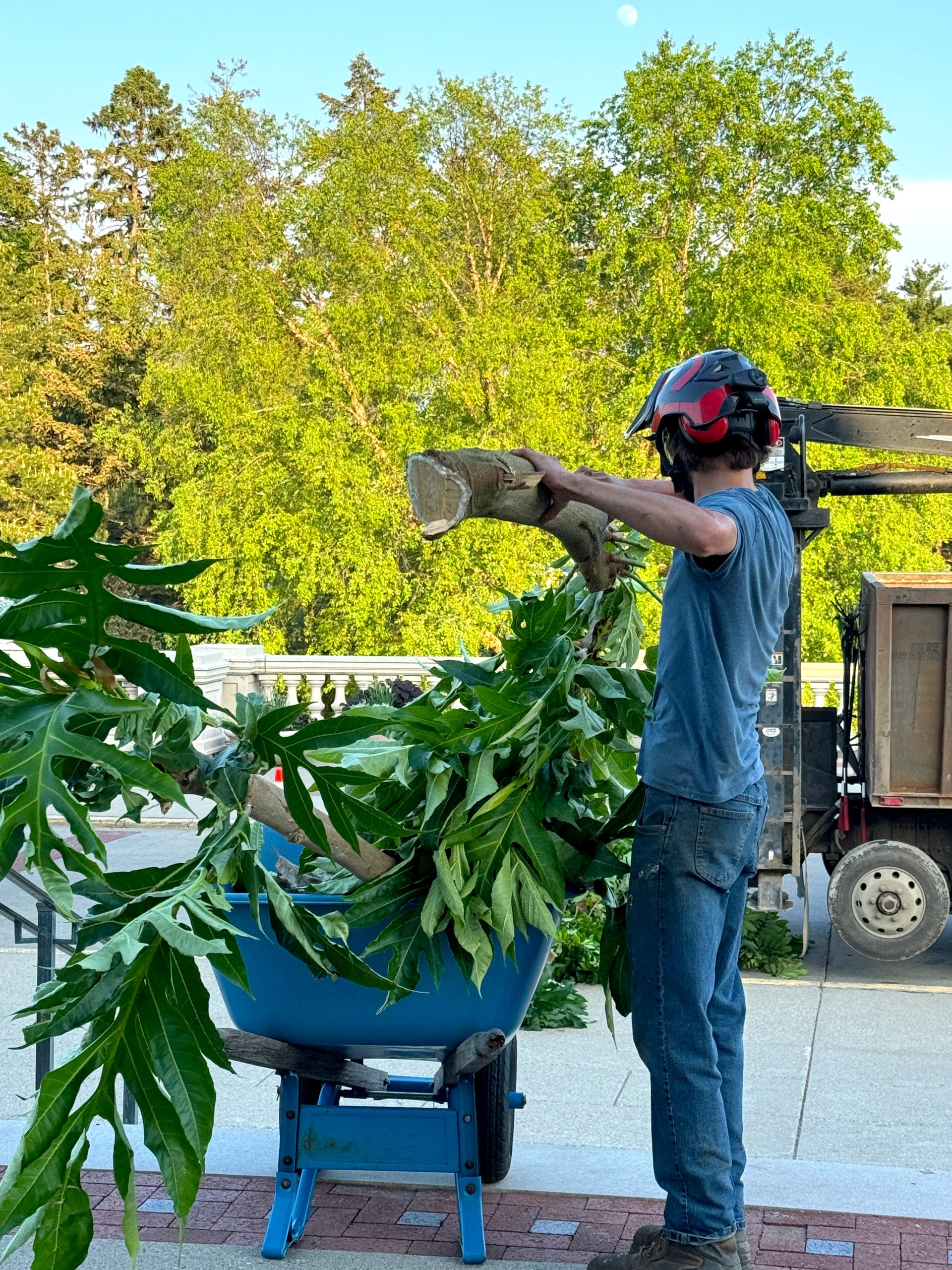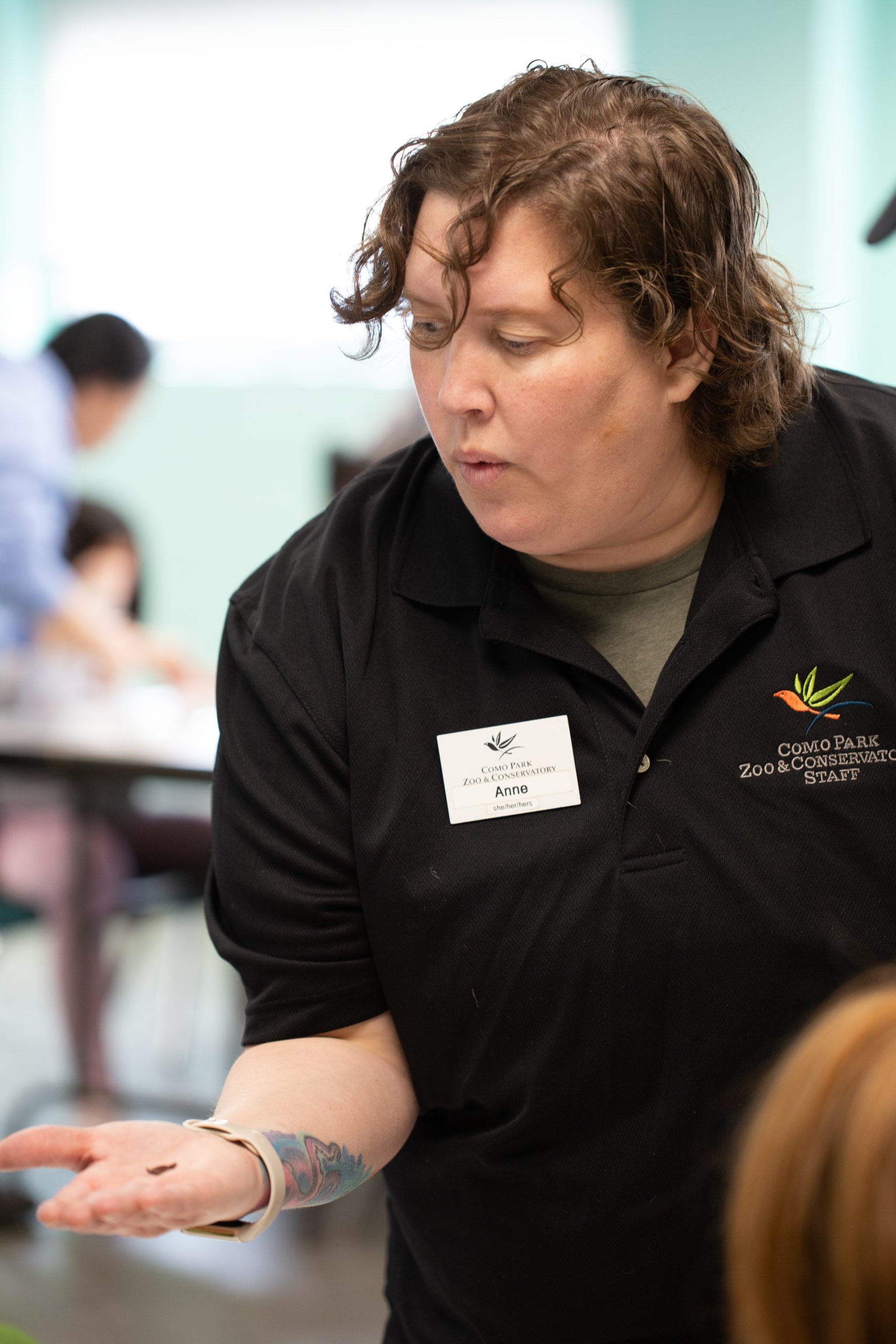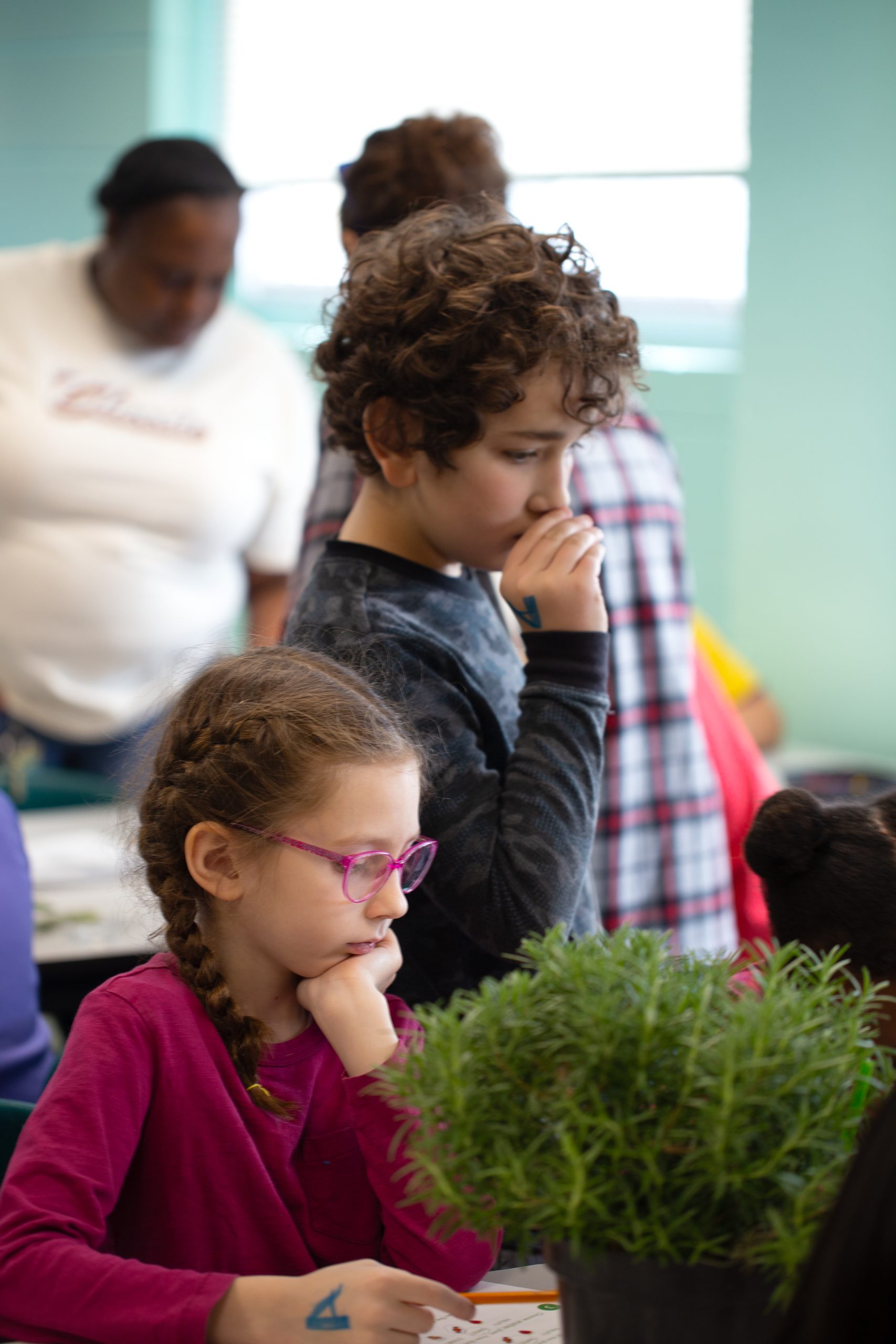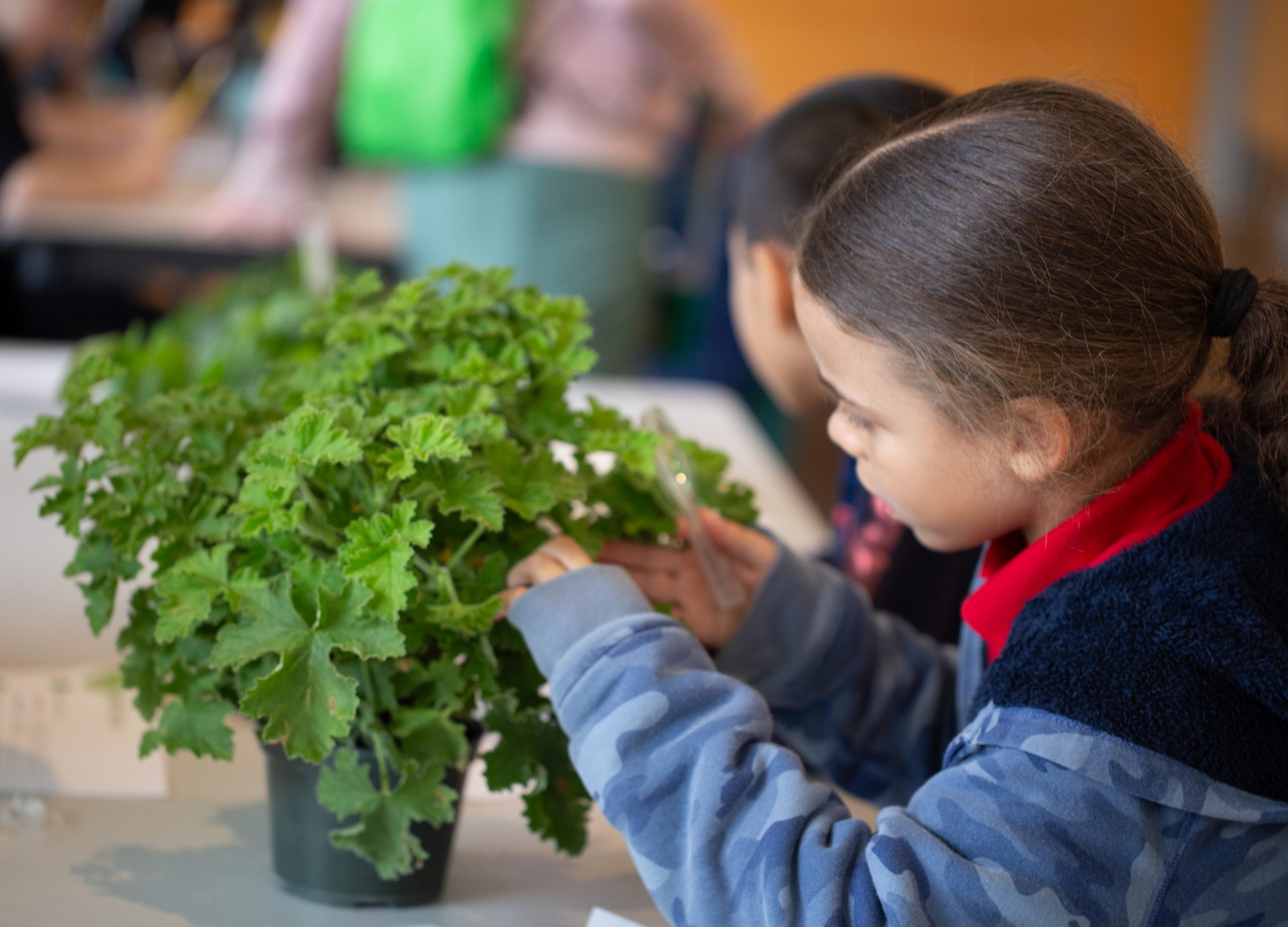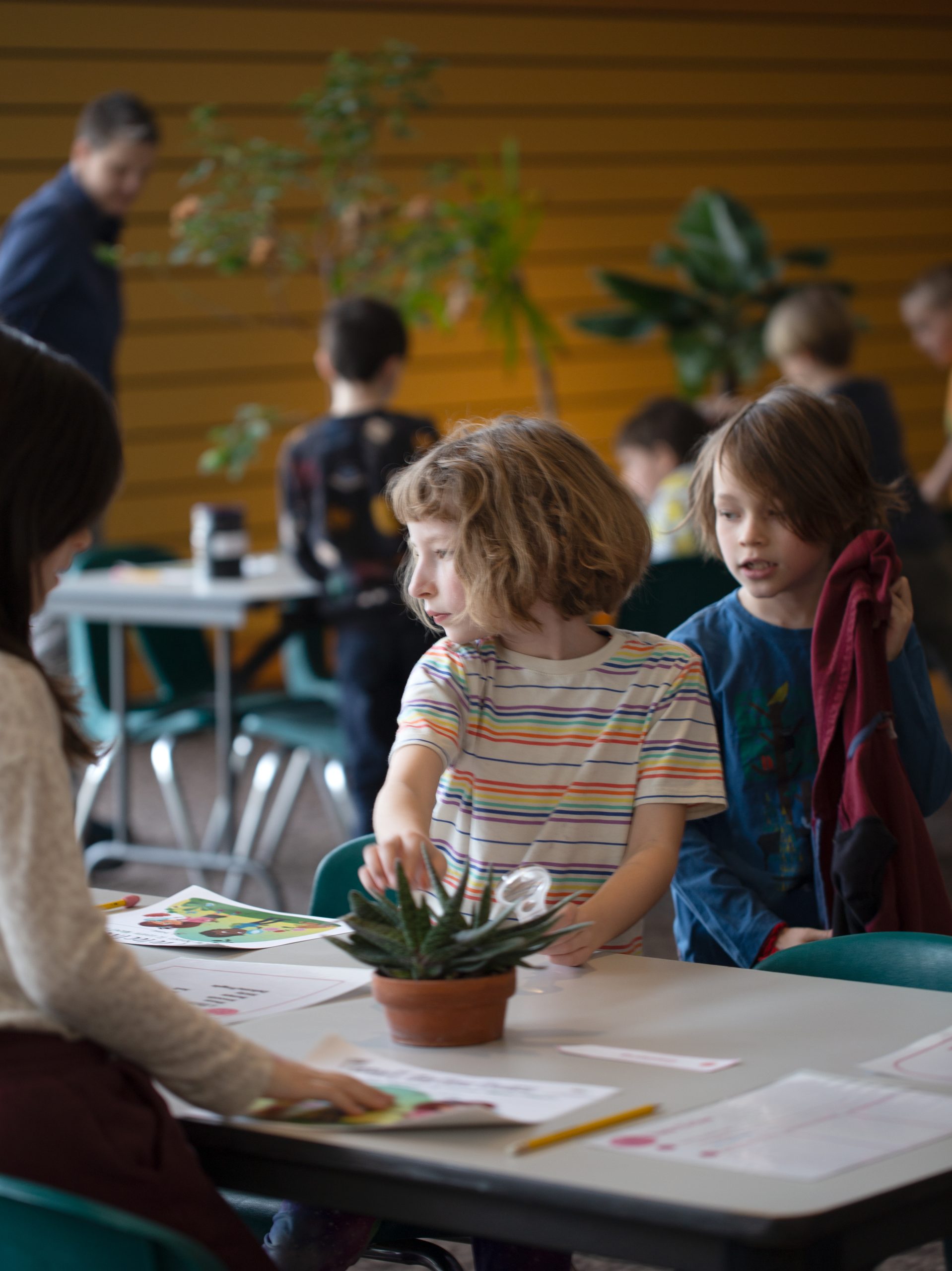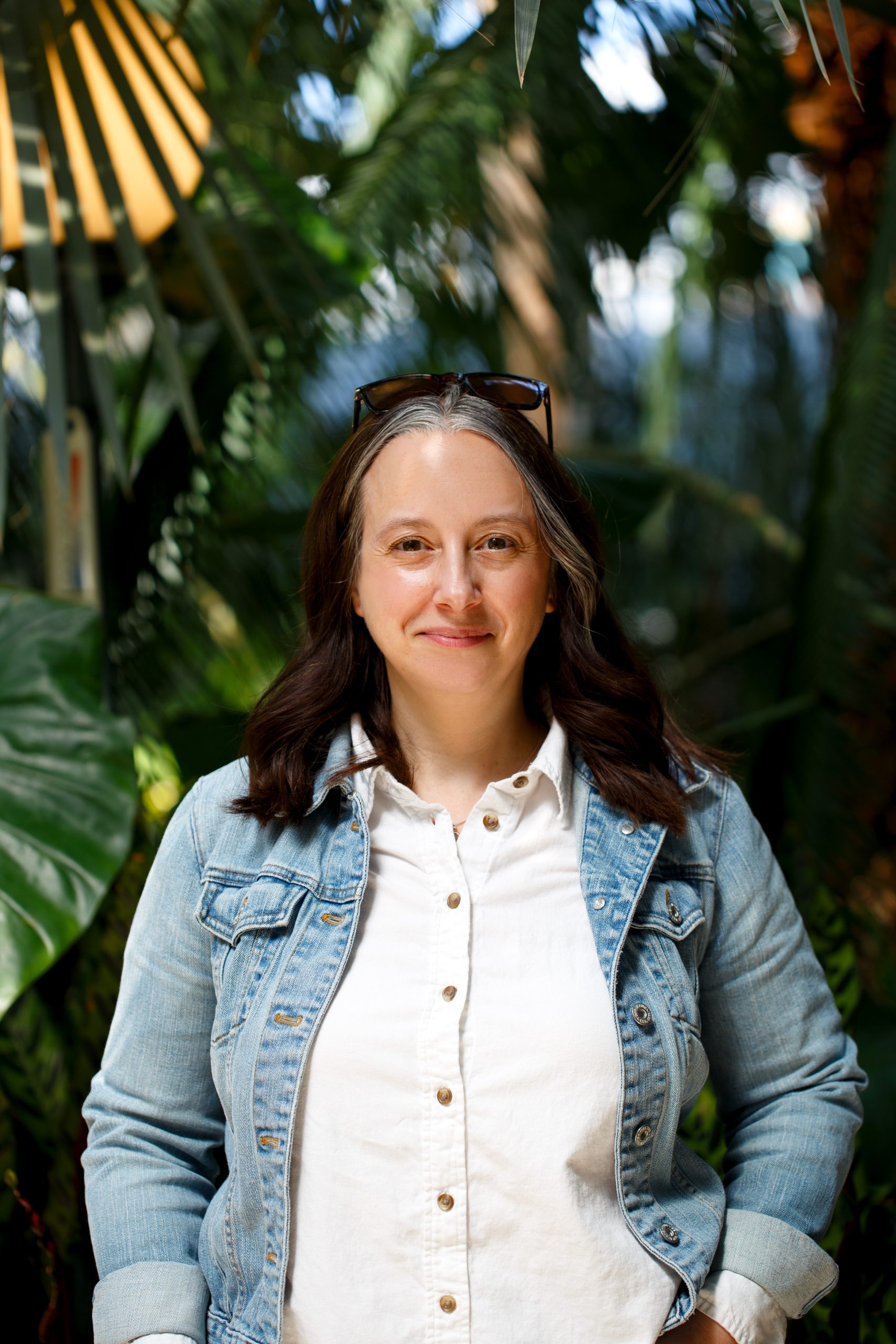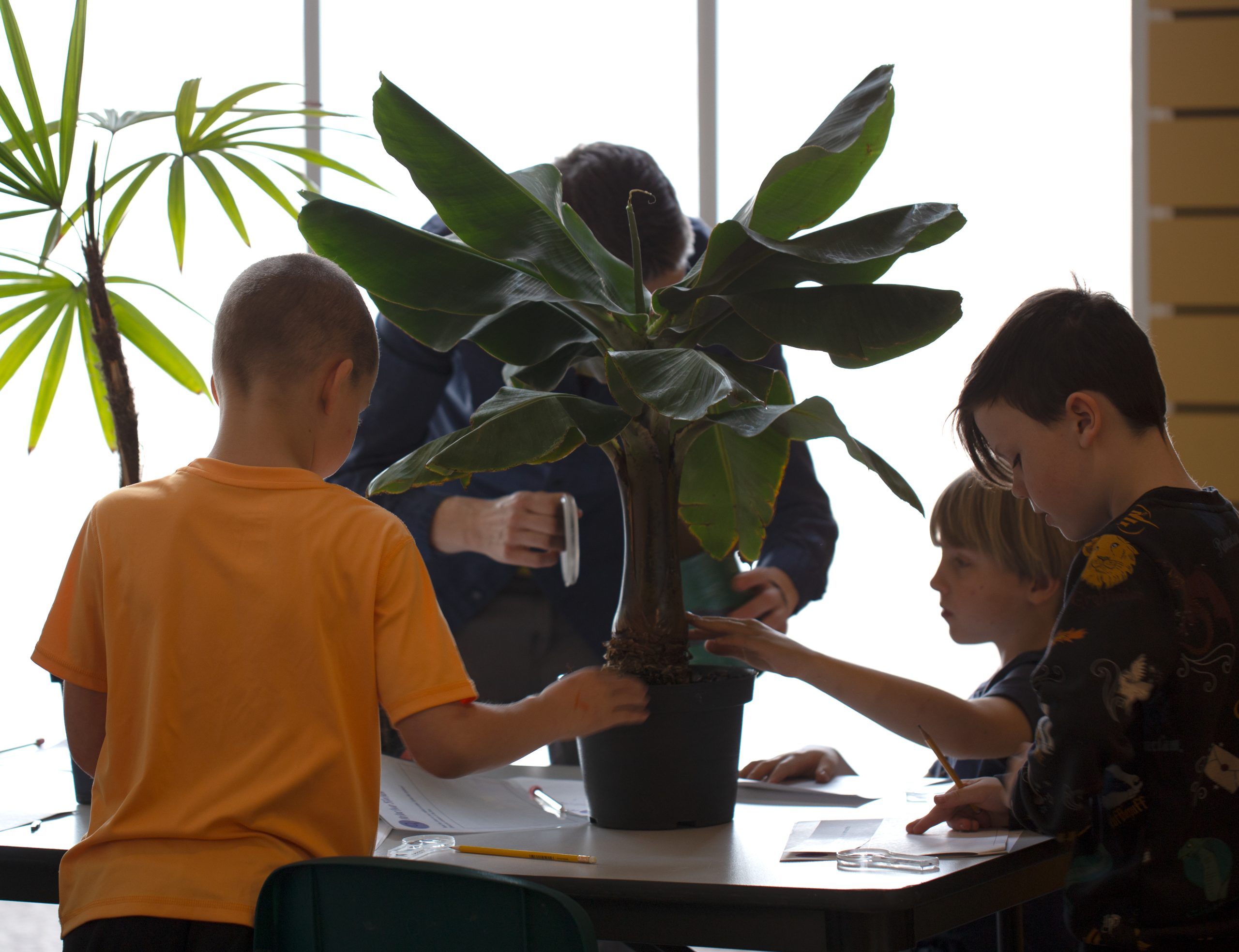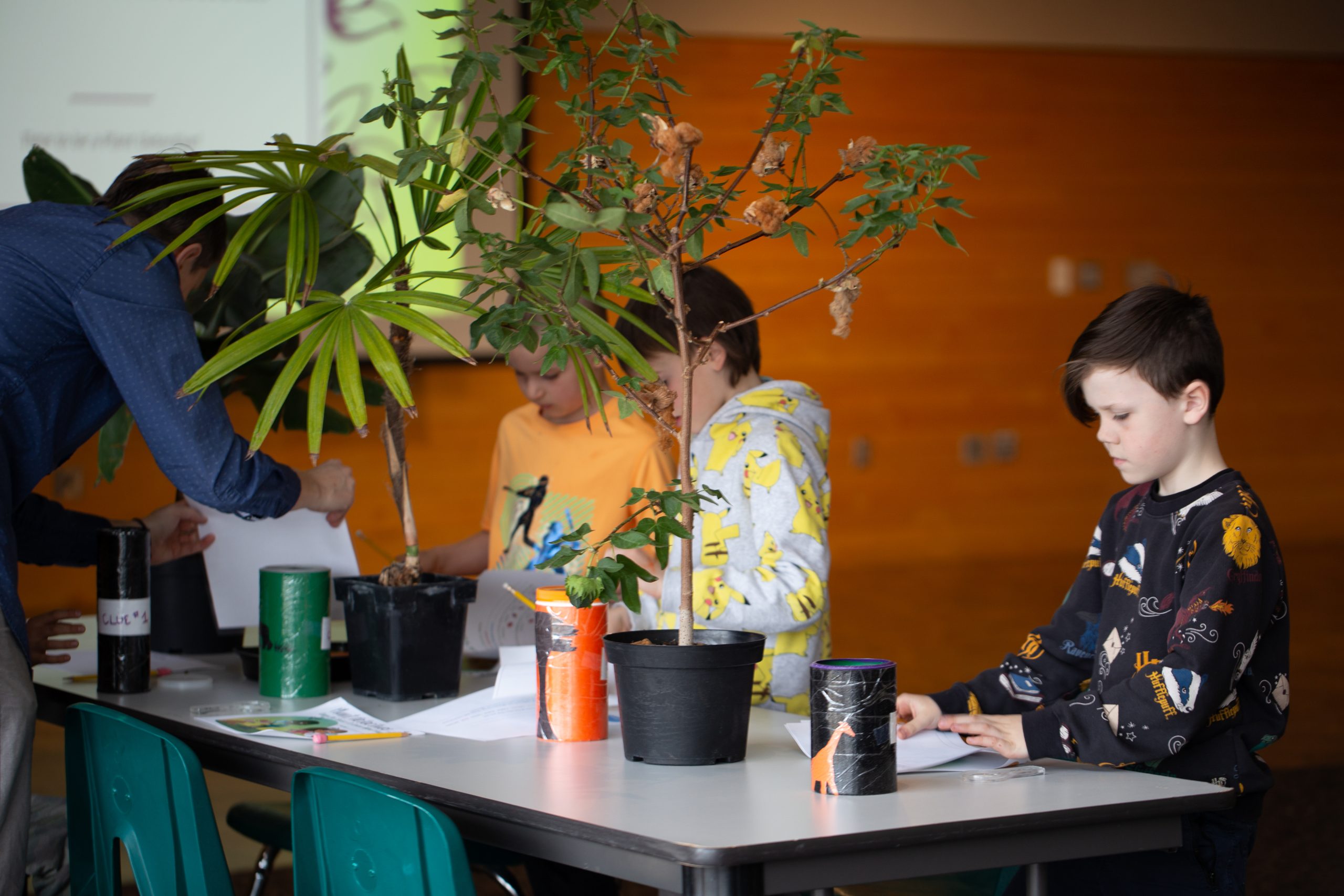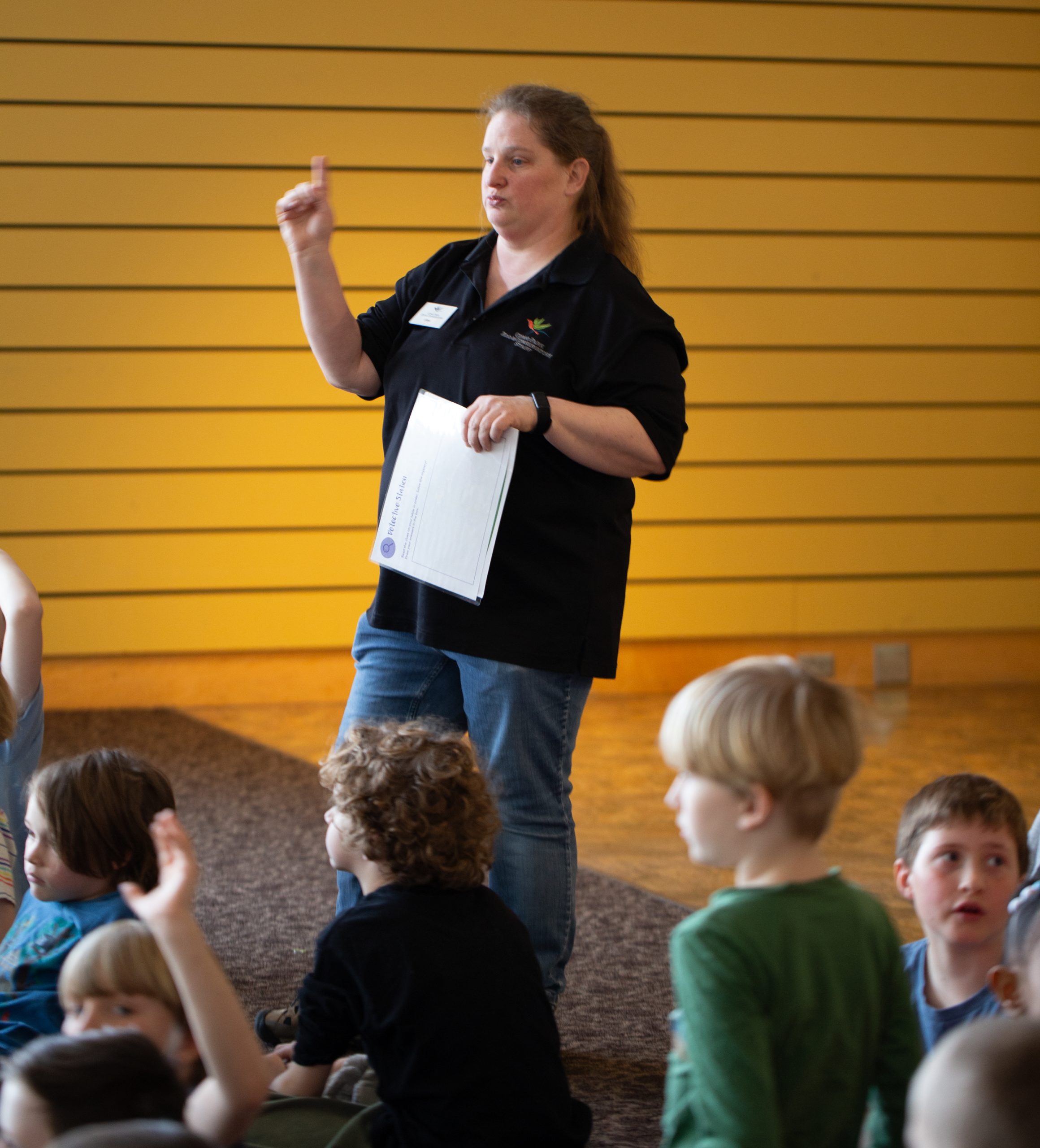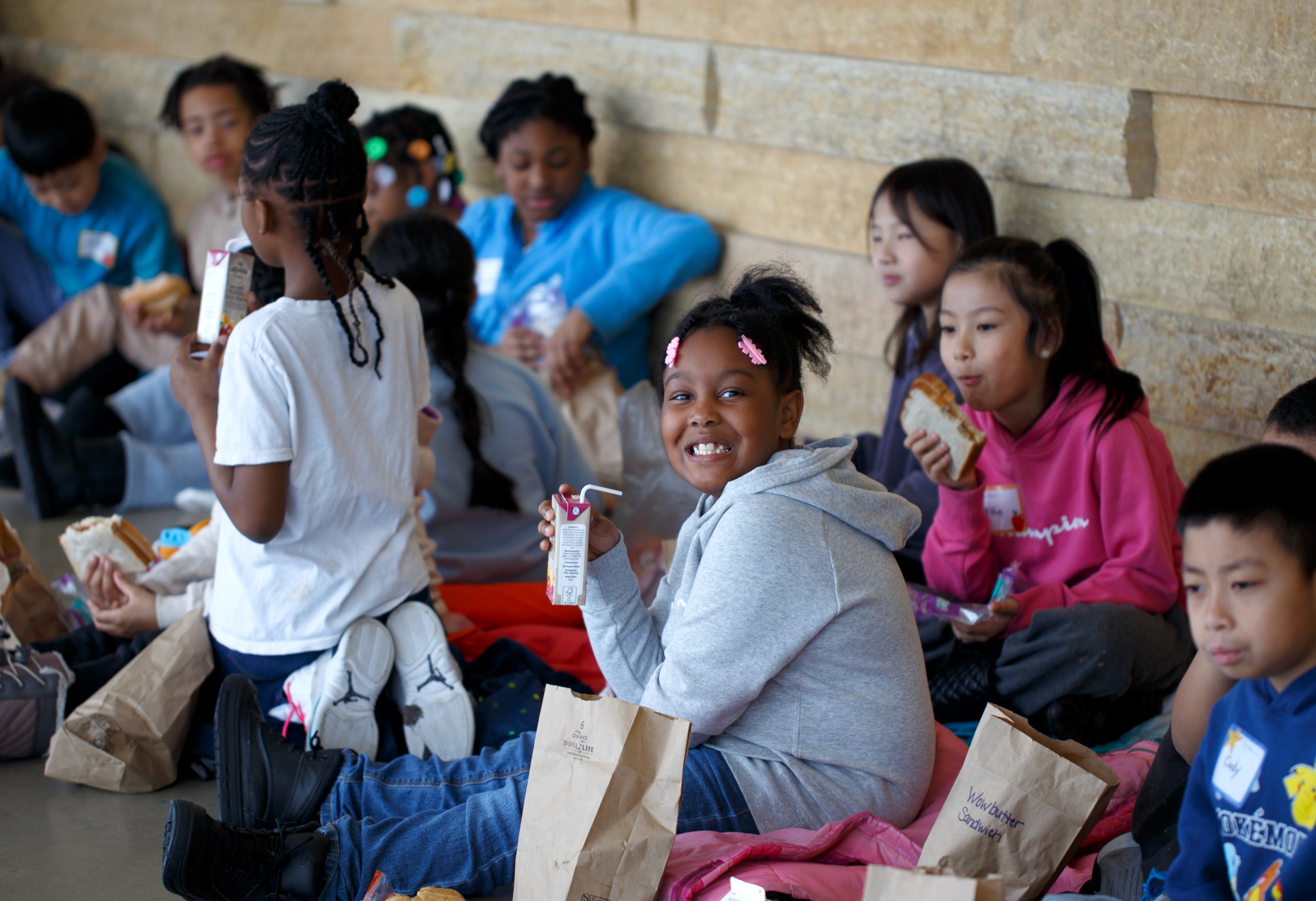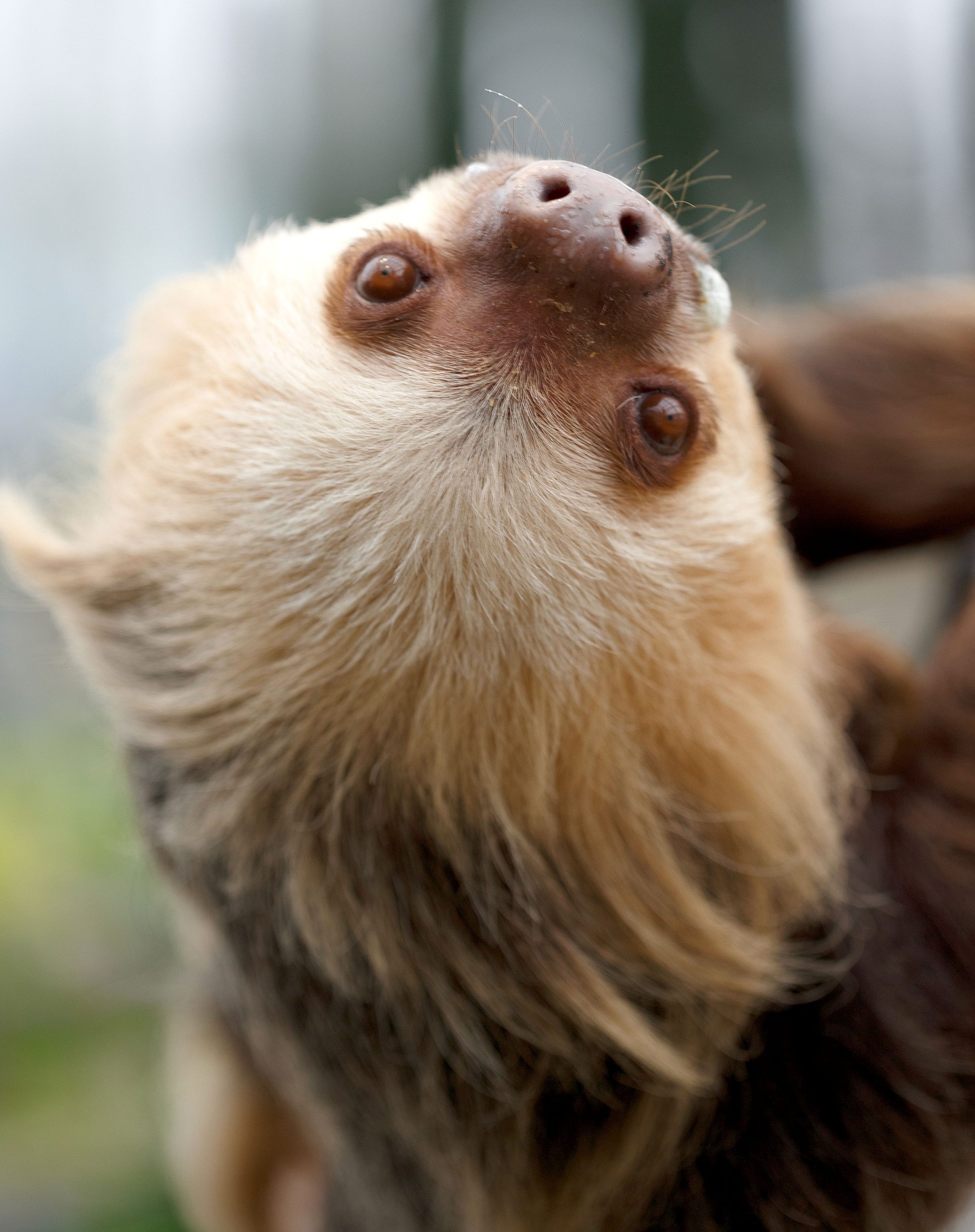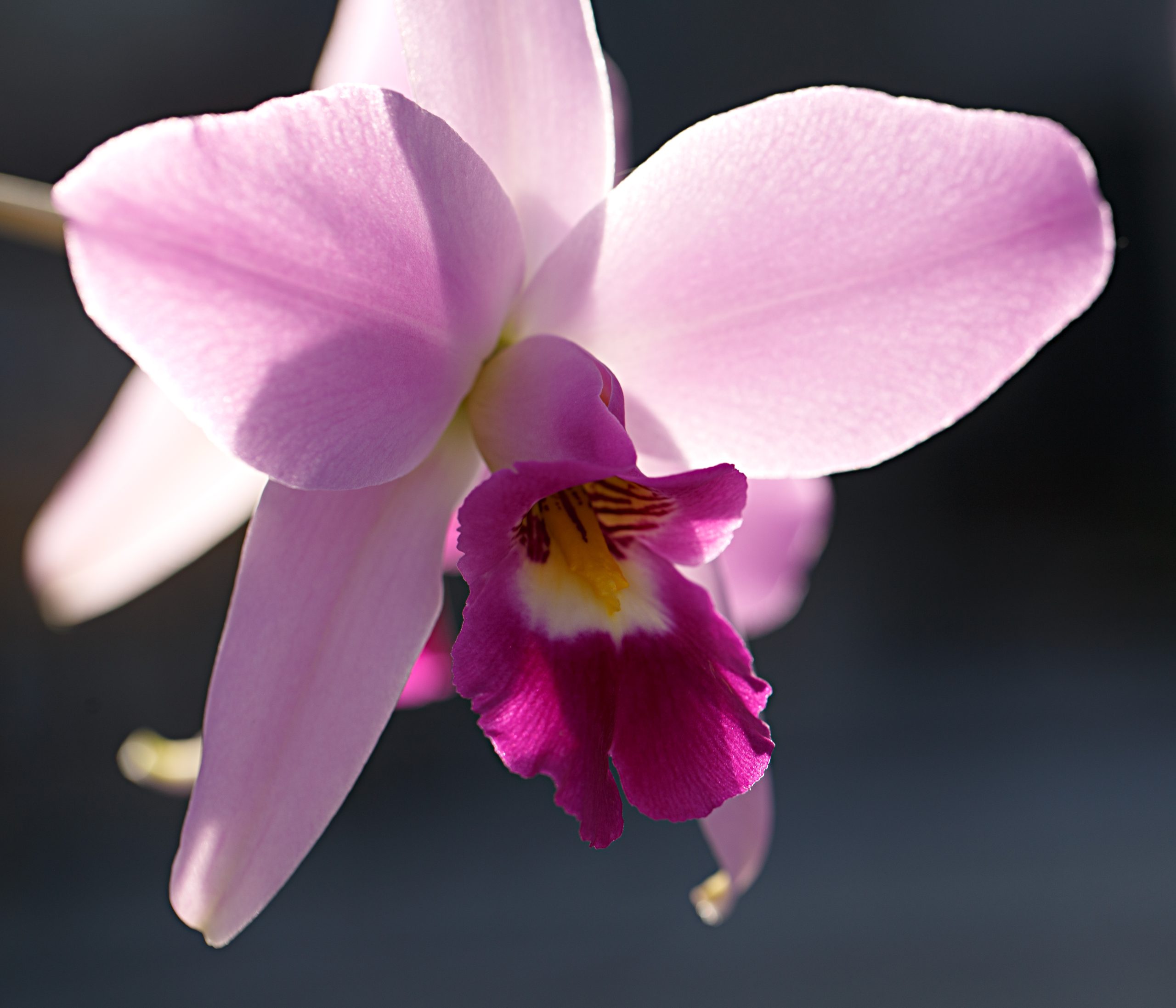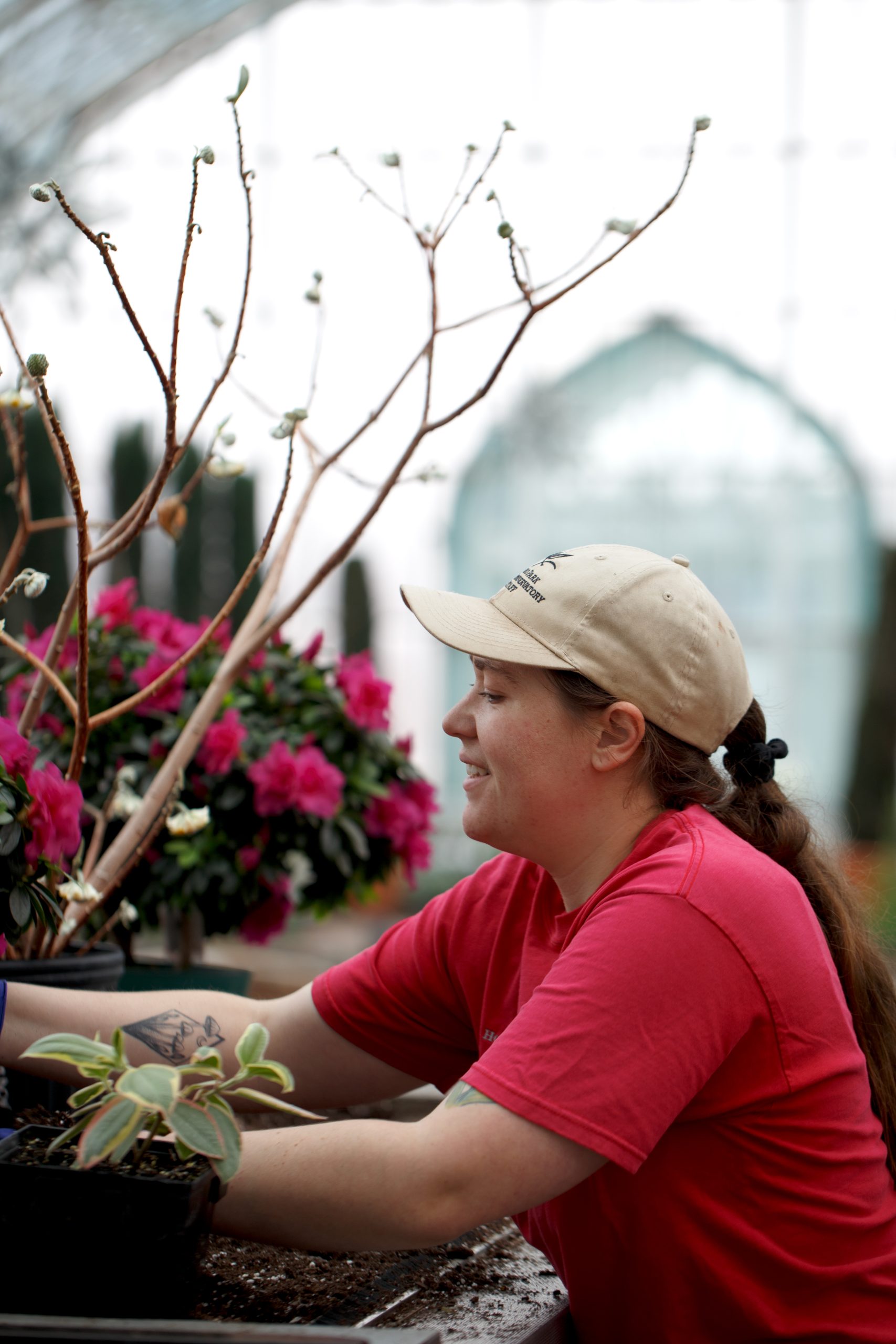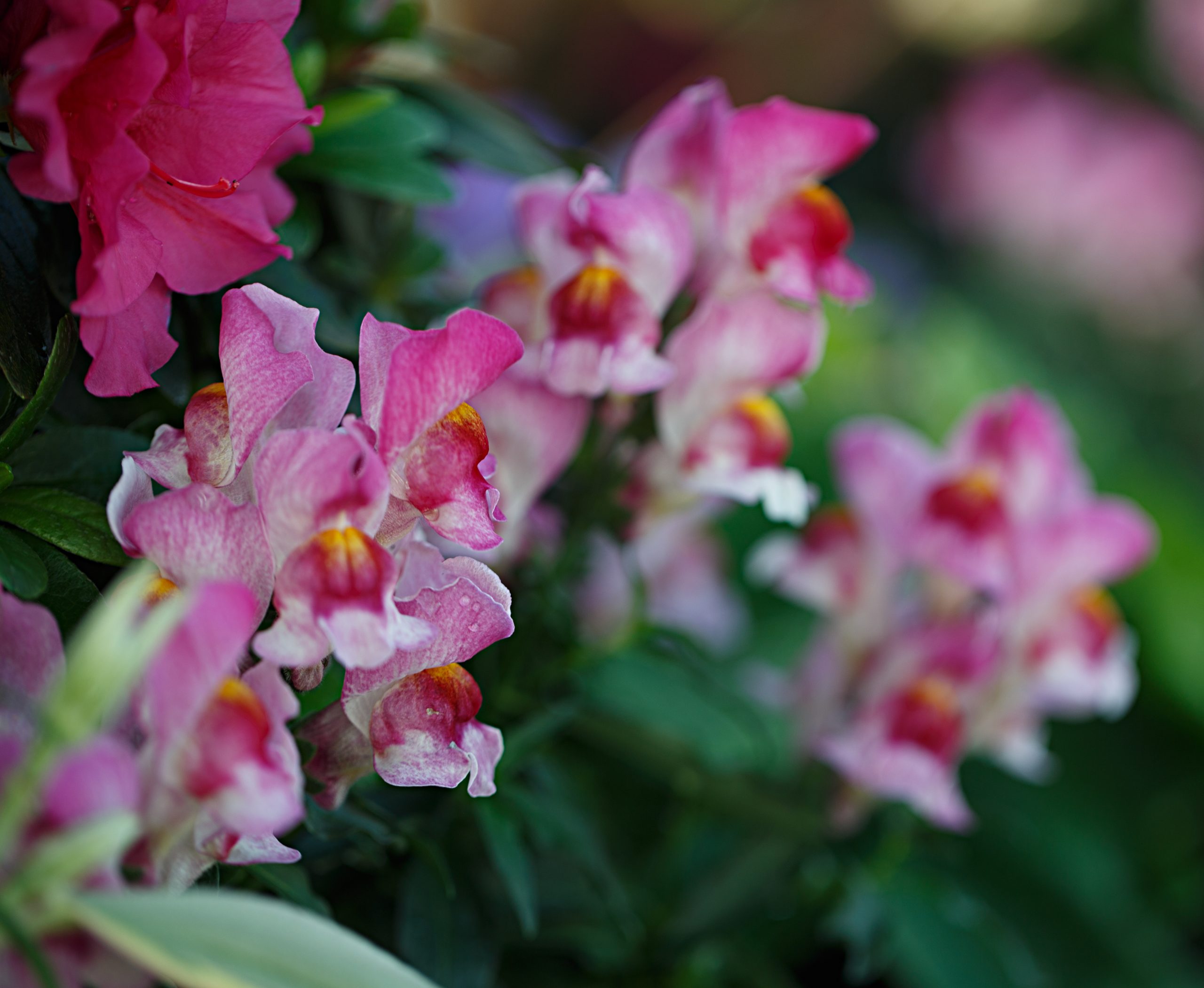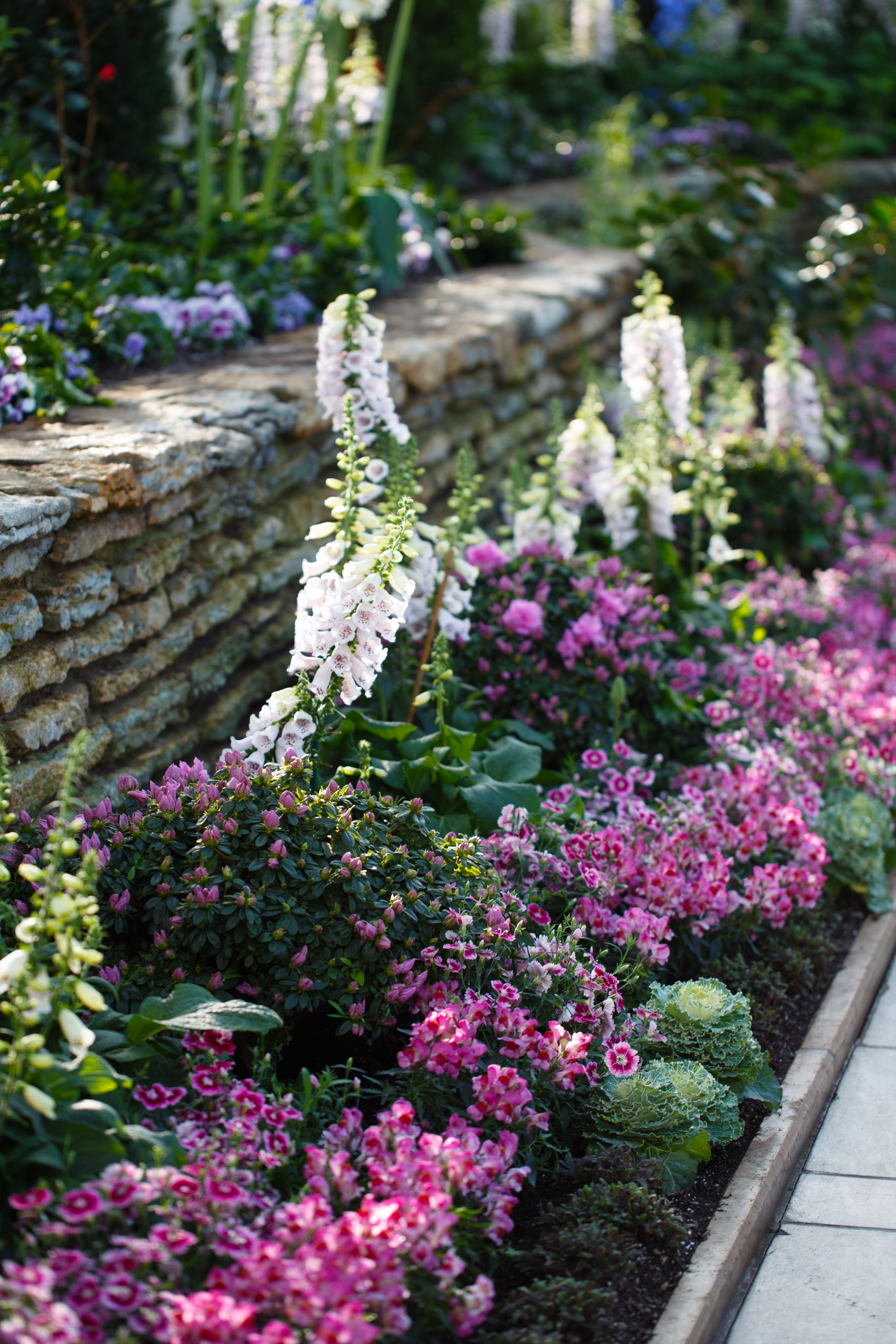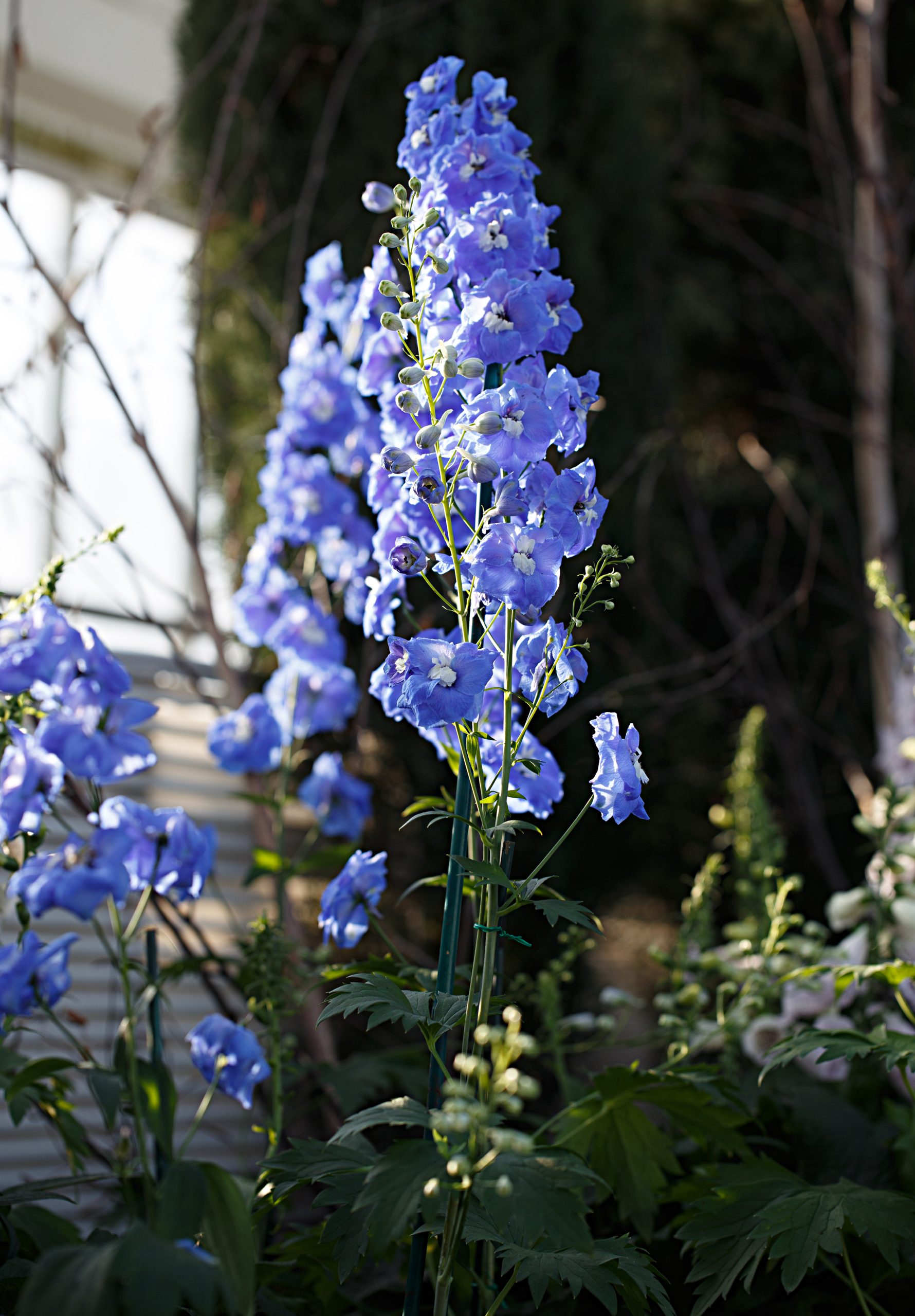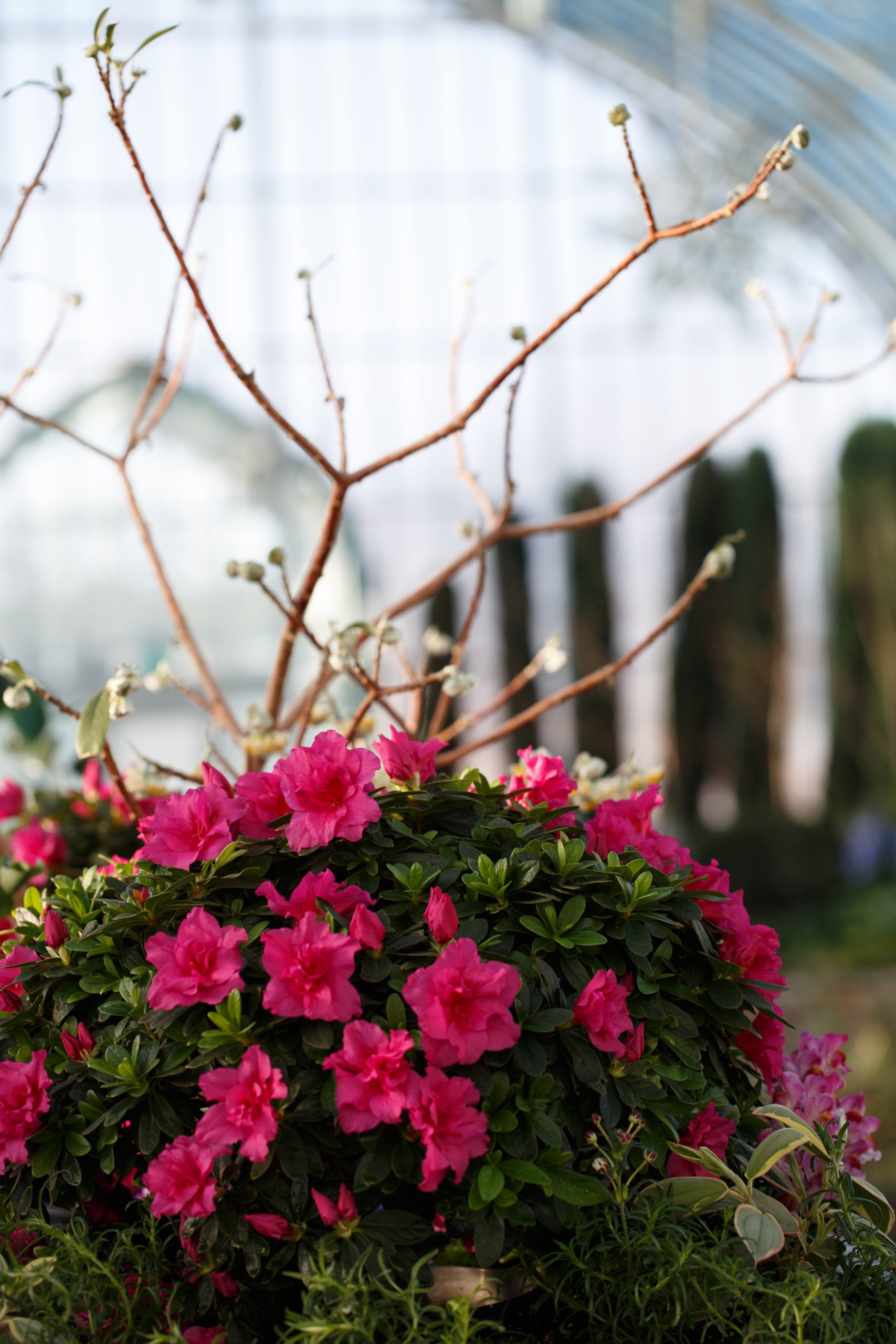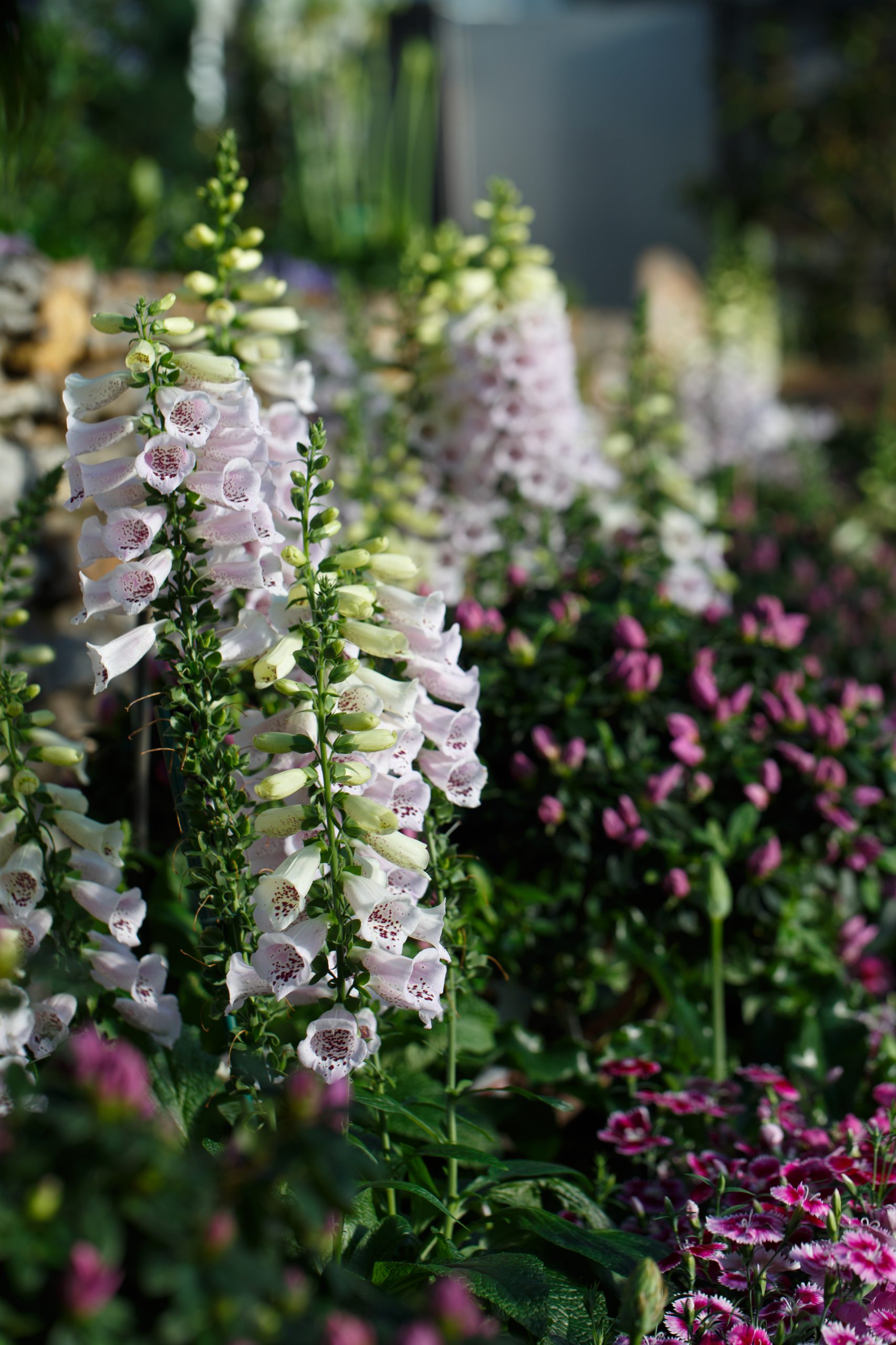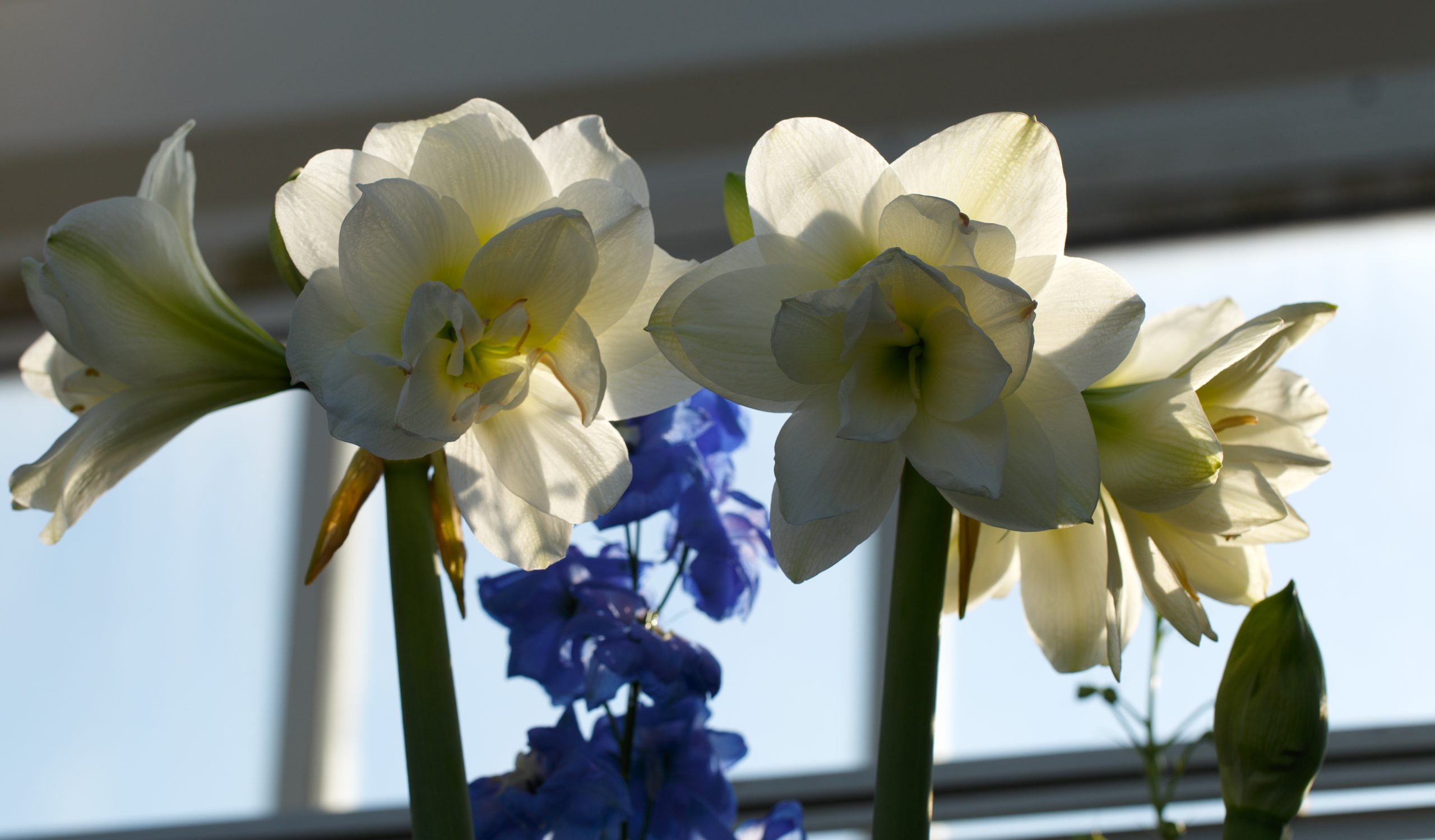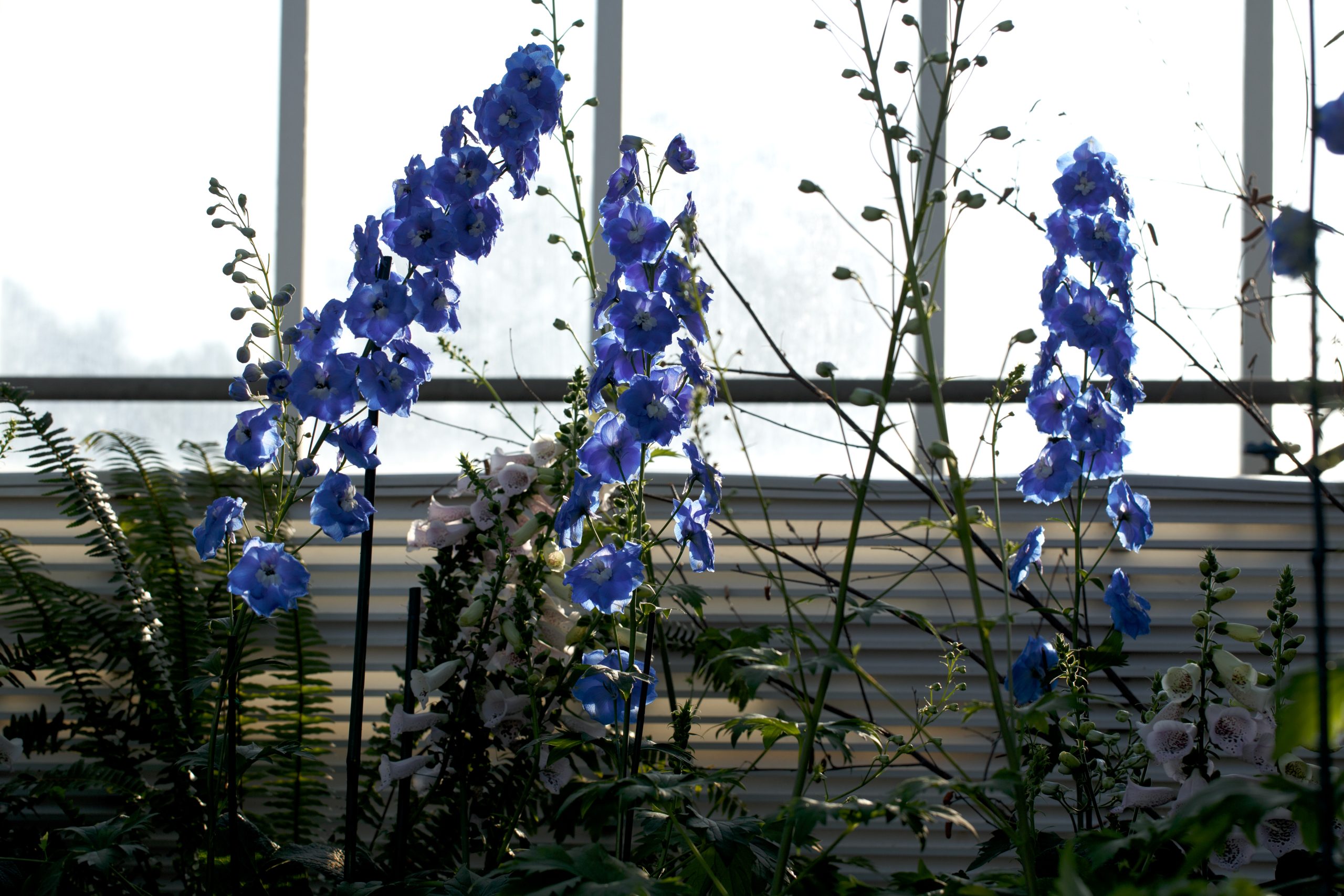Claude Monet’s gardens at Giverny inspired this season’s Part 1 Spring Flower Show, and Part 2 is dedicated to cool lavender blues
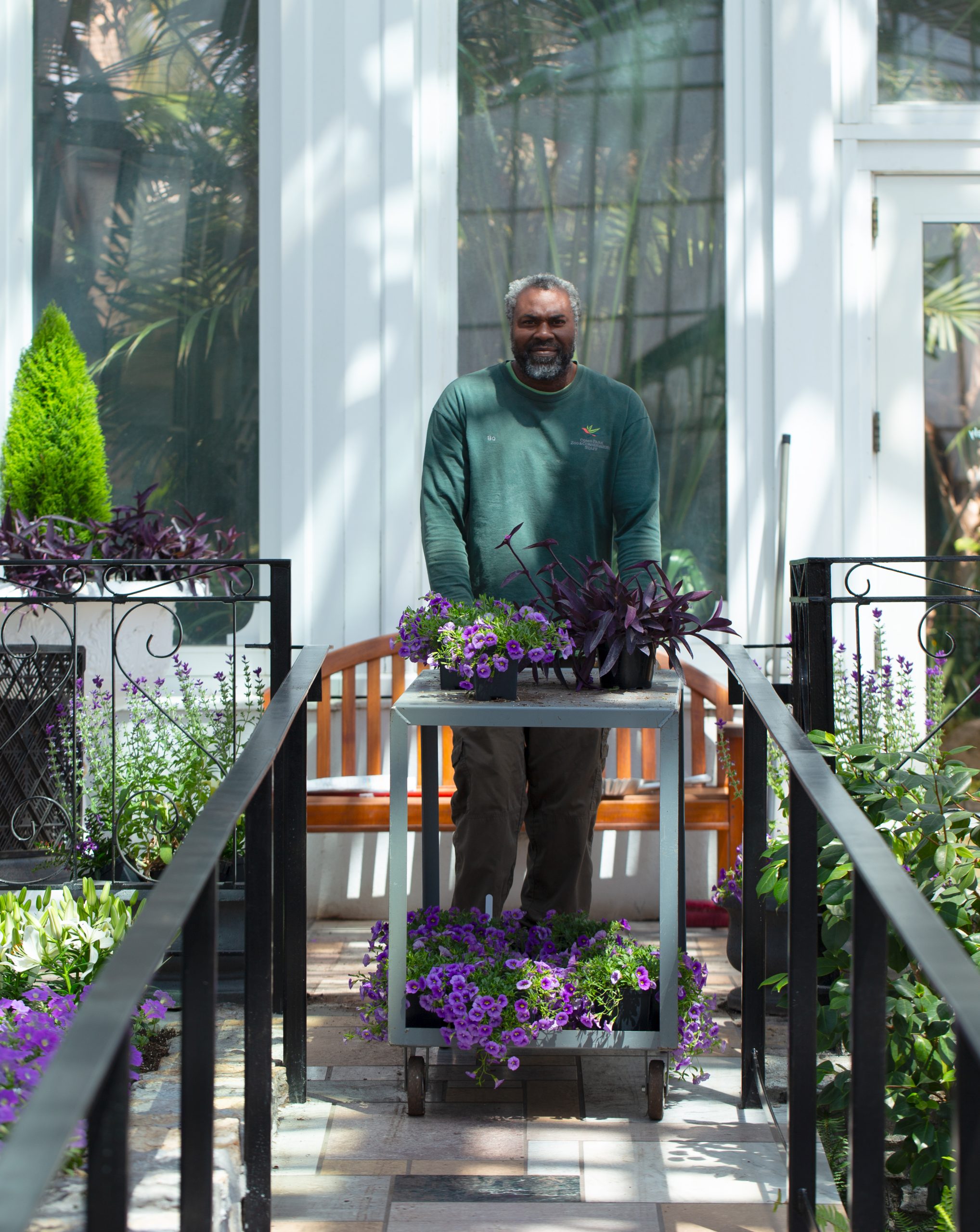
Designed by Horticulturist Bo Akinkuotu, the second part of the Spring Flower Show, open now through June 8, has washed Minnesota’s most beautiful room in the coolest of lavender blues. Enjoy this cottage garden filled with tall spires of blue delphinium and white lilies, calendula, stock, ageratum, and more!
The Marjorie McNeely Conservatory highlights five stunning flower shows each year. Your support for Como Friends helps make it possible. Thank you!
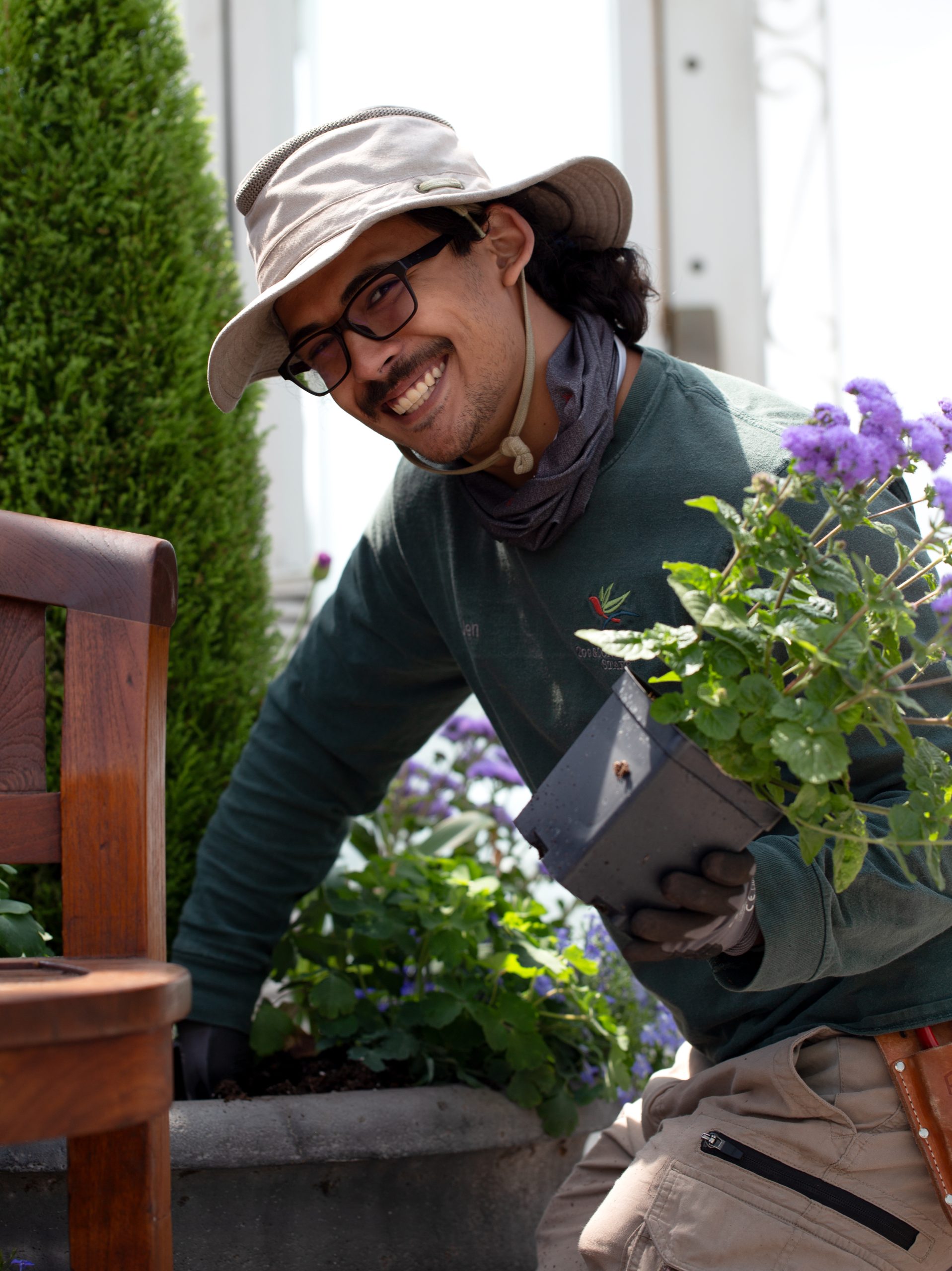
“My garden is my most beautiful masterpiece.” —Claude Monet
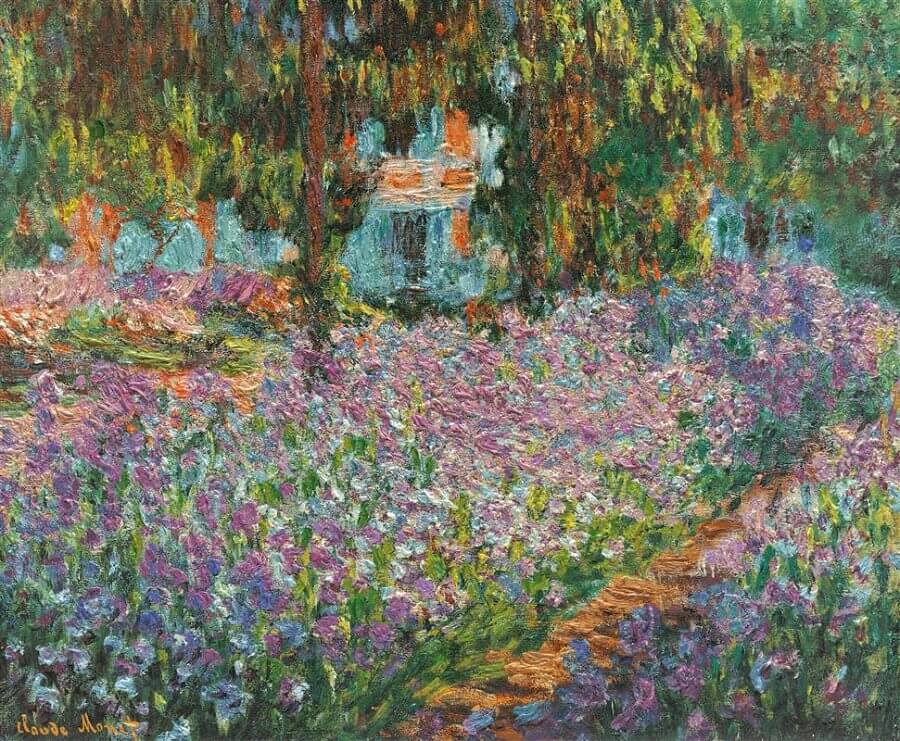

The Marjorie McNeely Conservatory’s Spring Flower Show will open March 21. Inspired by artist Claude Monet’s paintings of his beloved gardens at Giverny in France’s Normandy region, the first half of the show, running through April 27, highlights the Impressionist’s color palette of lavender, light blue, pink, and peach.
While horticulturist Ariel Dressler puts the finishing touches on Minnesota’s most beautiful room, Como Friends’ creative director Susannah Baudhuin went behind the scenes for this photographic sneak peek of the more than 7,000 bulbs, plugs, plants, and flowers about to make their debut.
“It’s on the strength of observation and reflection that one finds a way. So we must dig and delve unceasingly.” —Claude Monet
Numerous shades of ranunculus, peach foxglove, and pink snapdragons will complement show-stopping bulb selections that include blue hyacinth, pink daffodils, purple crocus, with a blend of lavender, white, and pink tulips.
Following a mid-show change from April 28 to May 2, tall spires of blue delphinium and purple foxglove will be the backdrop for a cottage garden collection of flowers including calendula, stock, ageratum, and more.
Remember to save the date for Garden Safari Gifts’ annual bulb sale on Monday, April 28, 2025. Stay tuned for details in our next Como Promo and Social Media posts.

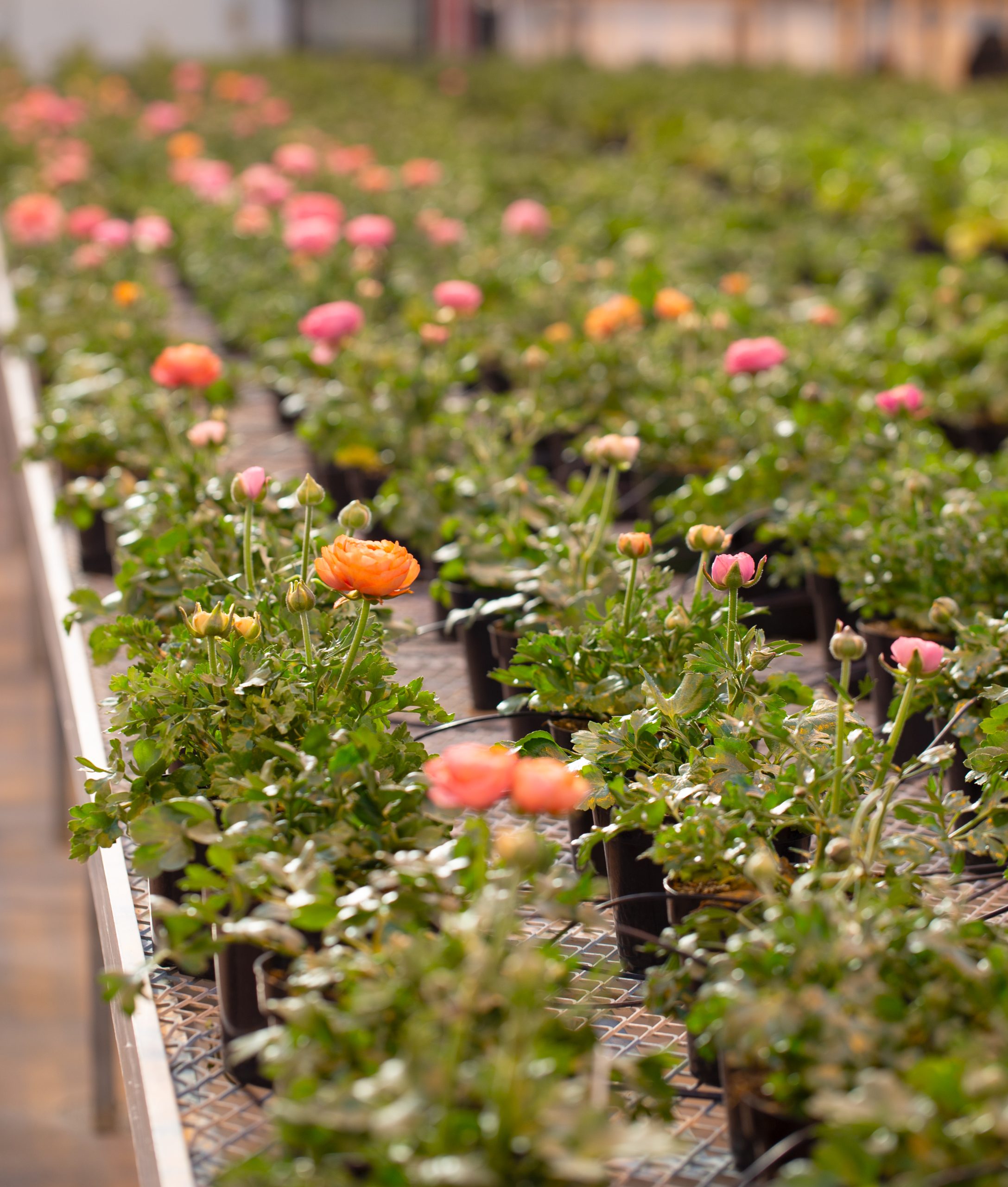

As the 2025 Winter Flower Show at the Marjorie McNeely Conservatory opens this week, many visitors will enjoy their first glimpse of the new accessibility improvements recently made to the Sunken Garden. Knowing that so many eyes would be on the space after its two-month closure, horticulturist Katie Horvath decided to create a floral design scheme that would give visitors a very warm welcome back.

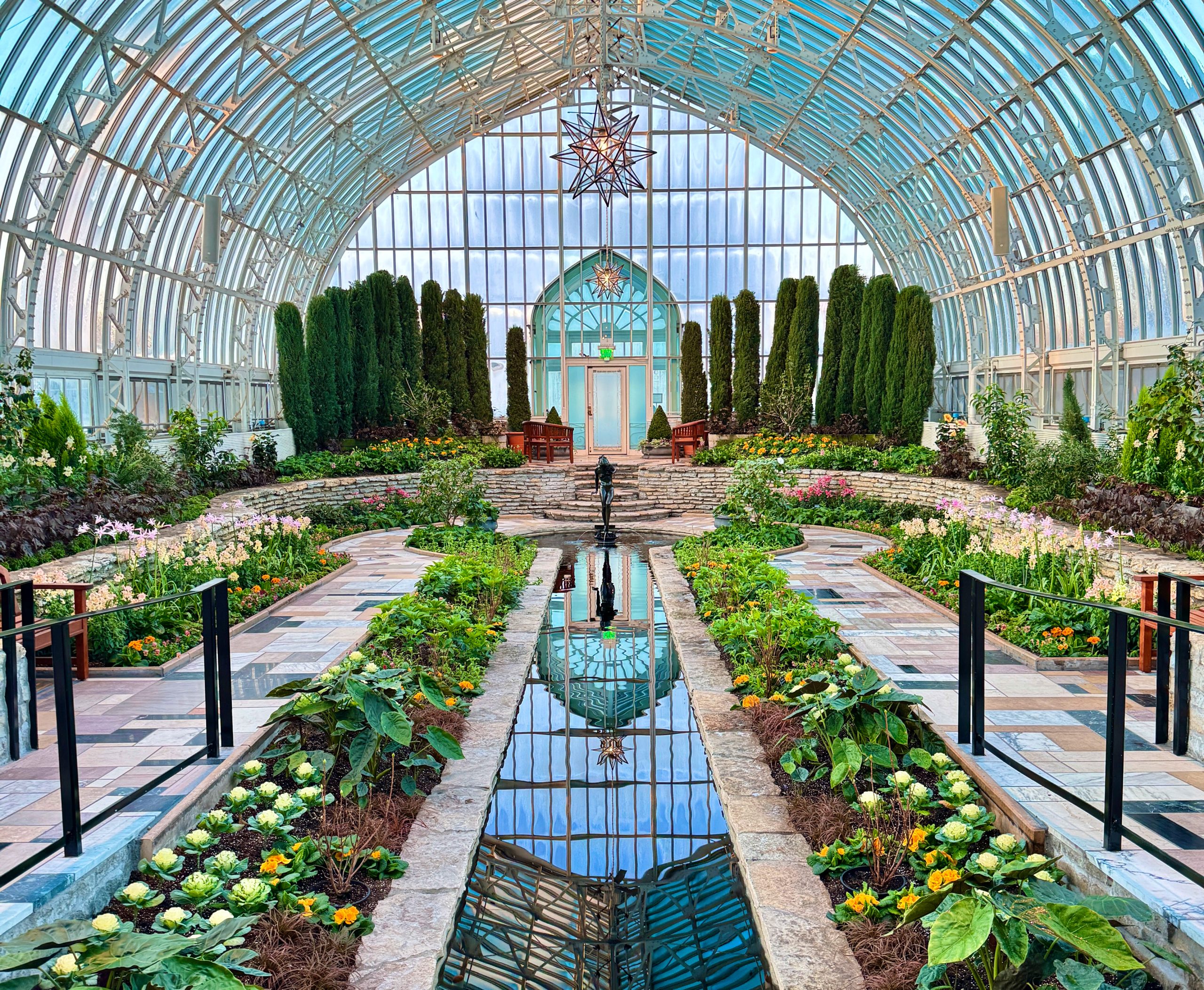
“Winter can be a time for those cooler, icier colors, which are beautiful, but when I got to thinking about what I like best in winter, it’s about finding those warm, cozy spaces,” says Horvath. “Walking in to find warmth in the middle of winter became my goal for the garden’s design.”
This is Horvath’s first design for the Sunken Garden, a process she started more than a year ago to guarantee that featured flowers like the primrose would have the time required to start from seed and go through a lengthy cold-weather germination process. She also spent time exploring more tropical color tones than are typical in wintery botanical gardens. “I looked at ways of combining a lot of oranges and yellows and peachy sherbet-type colors, with mixtures of cherry and caramel and a lot of really pretty deep reds.”
Among the standouts are the hibiscus mahogany splendor, a peachy dalmatian foxglove, and a mix of buttery and dainty chantilly salmon snapdragons, and pilea Moon Valley with its distinctive kiwi- and bronze-colored leaves. Como’s production greenhouse also cultivated the charming sweet pea vines climbing up the trellises installed throughout the garden.
The other star of the show will likely be the new pedestrian ramps that now lead to the garden, improving access for guests with strollers, walkers, wheelchairs and other mobility challenges. “Change isn’t always easy,” Horvath says about the nearly 100 years of memories contained in Minnesota’s most beautiful room. “But hopefully when people get back into the Sunken Garden they’ll appreciate how amazing the space is, and just how amazing plants are.”
Thanks to your contributions to Como Friends, Como’s five seasonal flower shows are always free to visitors. The Winter Flower Show is open daily from 10 a.m. to 4 p.m. through March 16, 2025.

“I really do feel the weight of how important it is for this space to reopen. I’m excited and incredibly proud to have grown these flowers and plants, designed the show, and finally planted the mixed beds again. But I also recognize how challenging it is, so I do feel a bit nervous about that. At the same time, I just think plants and flowers are incredible. When people walk into the Sunken Garden and see everything we’ve been cultivating, I hope they’ll appreciate it for more than just the structural changes in the space. I know this will be a big deal for some people—change can be tough, and there are a lot of changes in there. The space is going to feel new and different, and while the ramps and other elements may not be what some are used to, I’m hopeful that the beautiful plants and flowers surrounding them will make those changes feel easier to embrace.”
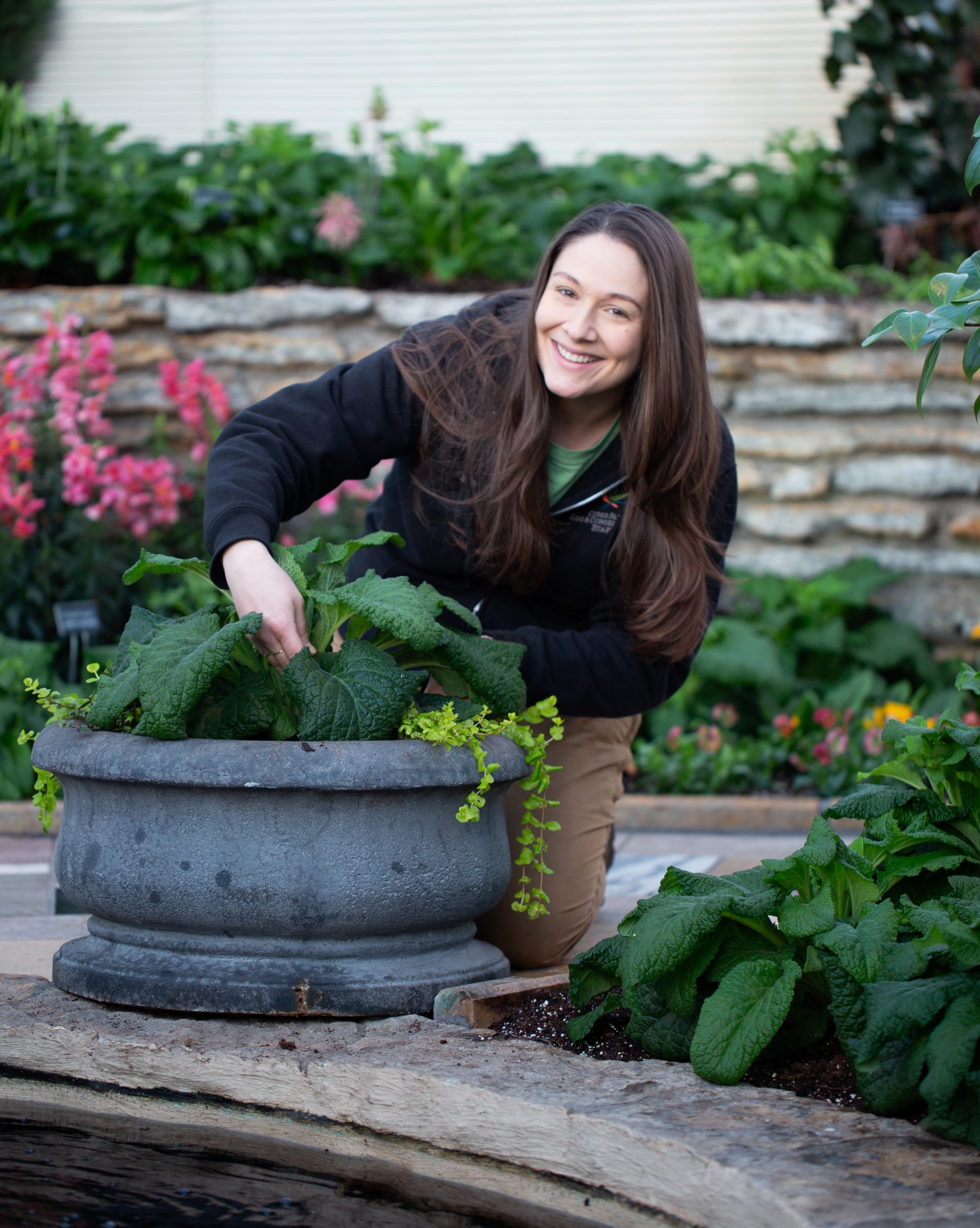
Making Minnesota’s most beautiful room more accessible for the future
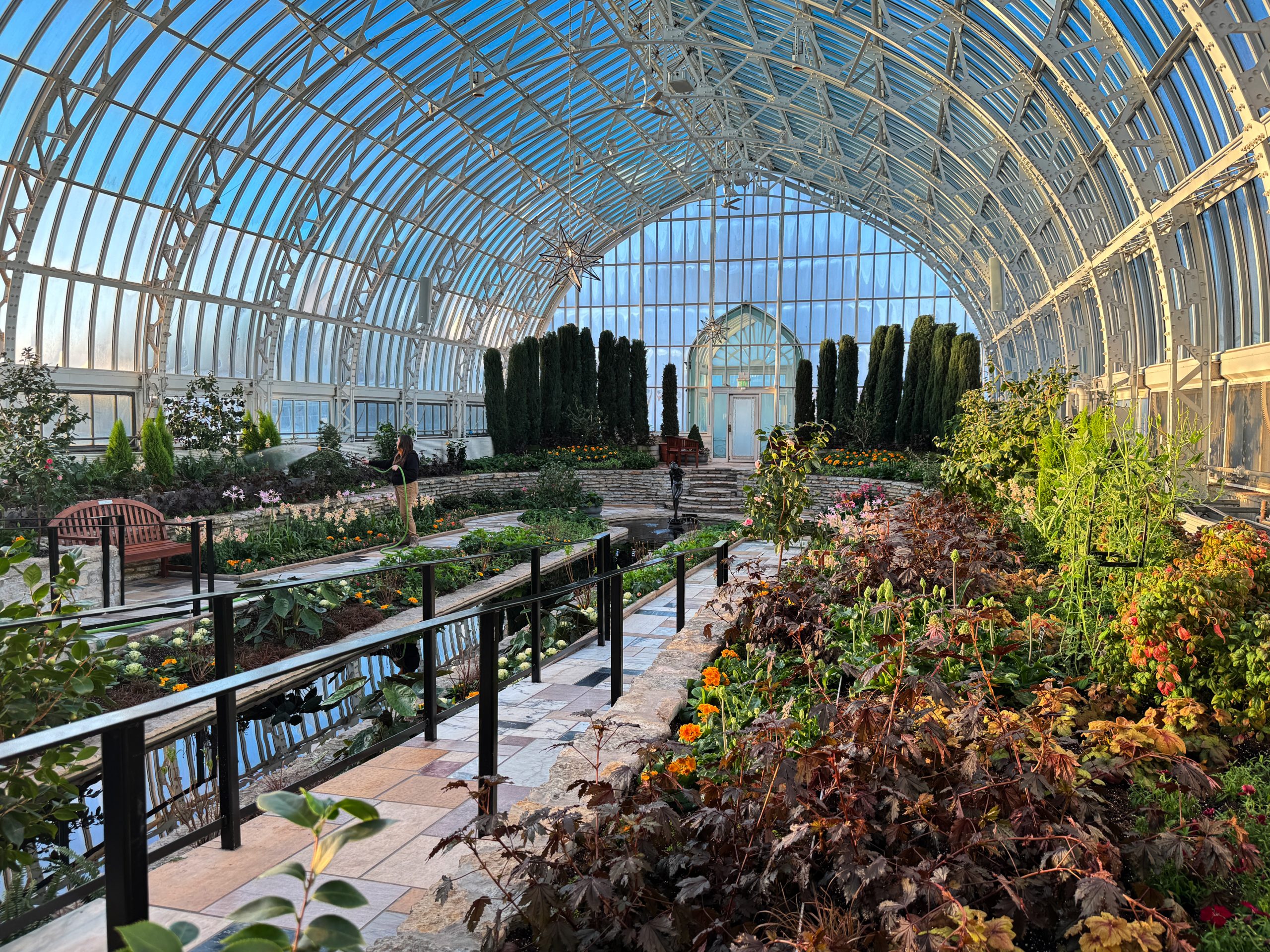
For one of the first times in its century-long history of service, the Marjorie McNeely Conservatory’s Sunken Garden closed to the public earlier this winter to allow for the construction of two pedestrian ramps that will make the space more accessible to visitors. The brief closure also gave Como the chance to give the wing—a favorite Twin Cities wedding destination—a little extra sparkle. As the new and improved space reopens to the public this season, here’s a look at some of the features that make the Sunken Garden so special to so many.

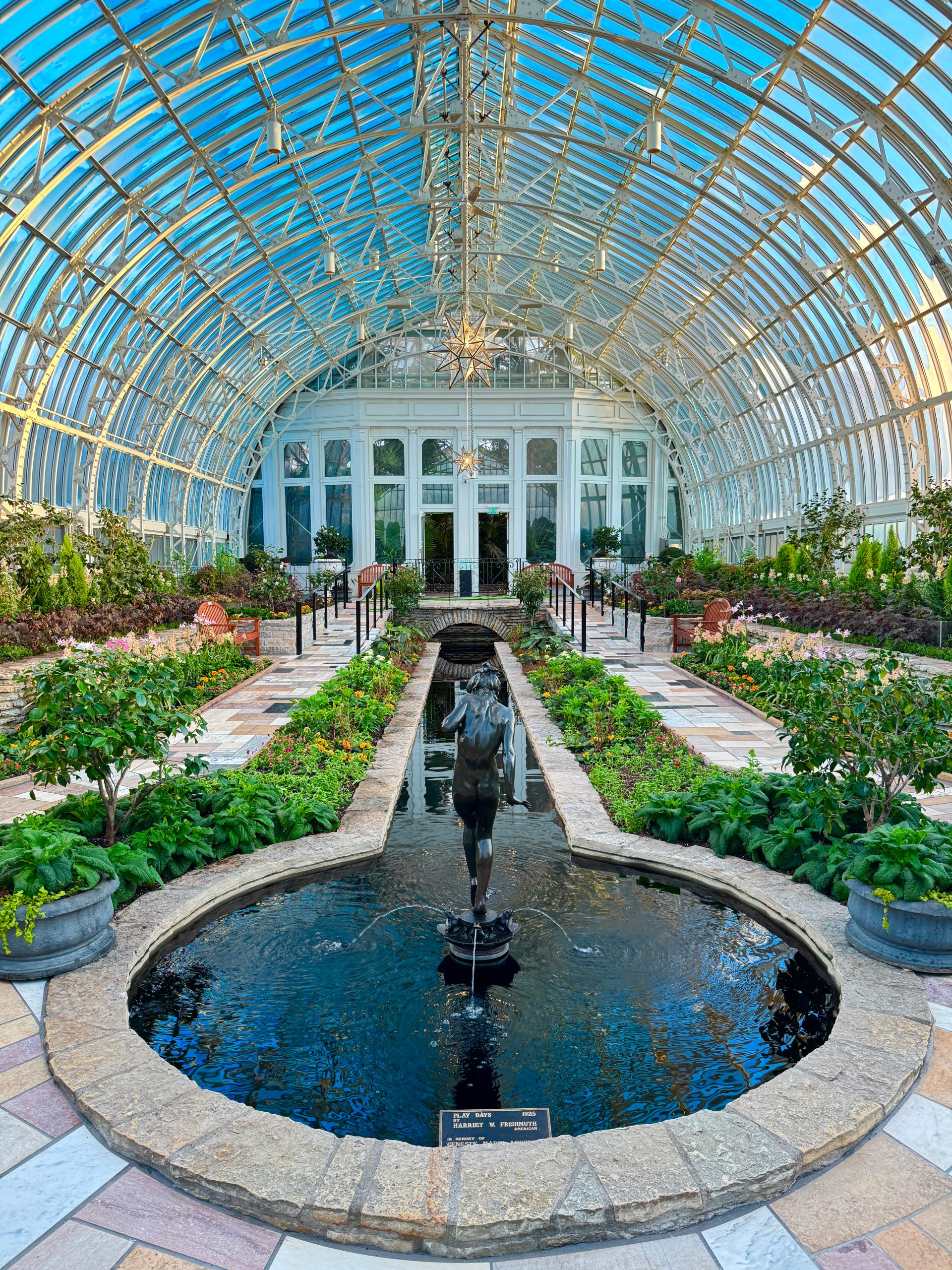
1). While the flowers come and go in the Sunken Garden, Minnesota’s most beautiful room has very deep roots. Originally opened as the Marjorie McNeely Conservatory’s south wing in 1915, the room was remodeled about a decade later to create the features we recognize today—the long, narrow floral beds, the lengthy reflecting pool, and the exceptional view from above that allows visitors to take it all in. “Sunken gardens were a trend in Europe at the time,” says Paul Knuth, the retired horticulturist who created the room’s rotating flower shows for more than 30 years. “But I think being able to see everything from one spot would have been the real inspiration. That view is easy on the eyes.”
2). A beautiful example of the Victorian glasshouse movement, the Conservatory’s listing on the National Register of Historic Places requires renovations to stay within the framework of the building’s original design, including recreating the distinctive marble flooring pattern on the new ramps. With masonry work that’s been kicking up a lot of dust, crews are also planning a deep cleaning of the windows and these Moravian star pendant lights. A traditional shape made popular in Germany in the 1830s, the star pendants were created by German immigrant and St. Paul craftsman Harry Fritsche. According to his grandson, Fritsche made and donated the now iconic lights to the Conservatory “as a gift to the city that welcomed him during difficult times,” and they have been hanging over the Sunken Garden since 1935.
3). “Play Days,” the beloved bronze sculpture at the south end of the Sunken Garden was also removed from the Sunken Garden this winter for repair and renovation. Created by Harriet Frishmuth, an American artist who studied with Auguste Rodin at Paris’s École des Beaux-Arts, the iconic sculpture is actually one of 99 known castings made of the work. In a fun twist of Como coincidence, this piece was donated to St. Paul in the 1960s by senior horticulturist Ariel Dressler’s godparents. “So many people feel a family connection to that room, and so do I, when I’m dusting that statue,” she says.
4). The Sunken Garden is a flower powerhouse, accounting for more than a third of the plants, plugs and bulbs grown each year in Como’s behind-the-scenes greenhouse. That number may even grow with the removal of the obsolete elevators, which has created more room for flower beds. “That’s something we’re excited about, because it’s a pretty significant new space for planting,” says Dressler. The spring and summer flower shows alone typically require up to 10,000 bulbs each year, which means that more than a million tulips, hyacinths, daffodils and other varieties have cycled through the Sunken Garden over the last century. “For years, Como Friends has offered the bulbs for sale when we’re finished with them, so it’s fun to run the numbers and imagine all of the decades that Como’s gardens have been making the community more beautiful, too,” says Dressler.
The Sunken Garden is also the site for Como’s Music Under Glass series this winter, a free concert series featuring local artists on selected Wednesday and Sunday nights. Visit comozooconservatory.org to learn more.
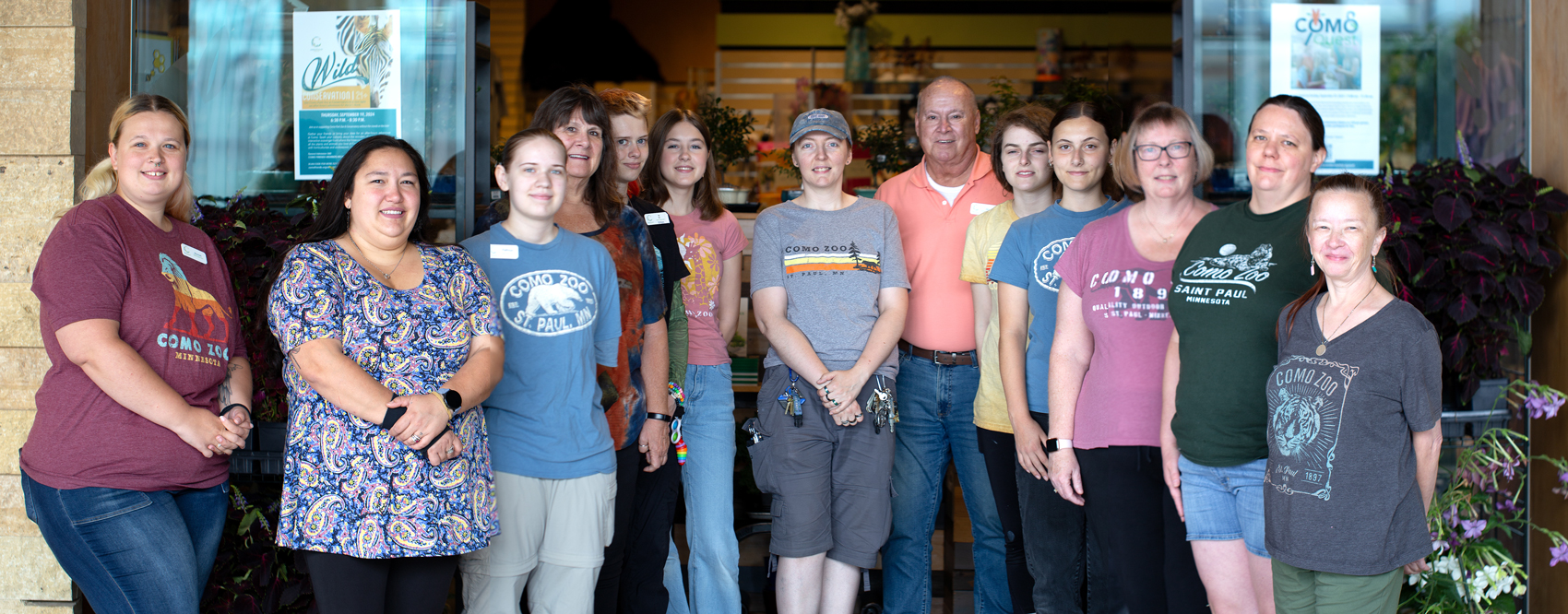
Como insiders know that Garden Safari Gifts is the place to go if you’re looking for that perfect Sparky t-shirt, puzzles and games for kids, and plush animals in the shape of nearly every species on the planet.
What you might not know is that every year, proceeds from Como Friends’ gift shop support the plants, animals, and people that converge at Como Park Zoo & Conservatory.

“The retail operation at Garden Safari Gifts has always been a big part of our business model at Como Friends, and its success is one of the reasons that Como Park Zoo & Conservatory continues to be free to visitors,” says Como Friends President Jackie Sticha. “Not only is it fun to shop there, but when you do, you’re helping to support the things that make Como so special.”
While small retail shops have been part of Como’s campus for years, Garden Safari Gifts was originally opened in 2005 as part of the Visitor Center expansion, with satellite shops later launched at Como Town, Gorilla Forest, and Polar Bear Odyssey during the busy summer months. “Consistent profits, especially in the early years, were important to establishing Como Friends as a strong nonprofit,” says Terri Scheunemann, Como Friends’ director of retail operations.
From the start, Como souvenirs and animal-themed gifts have been big sellers with visitors. But more recently, Garden Safari Gifts has curated a collection of more sustainably sourced and conservation-minded gifts, from beeswax food wrappers, to bags and bedspreads made from recycled cloth, and reusable straws and water bottles to help cut down on single-use plastics. “Supporting Como’s conservation mission has definitely been a growing part of our marketing plan, and our visitors seem to really like it,” says Sheila Wewers, Como Friends’ associate director of retail operations.
While most items at Garden Safari Gifts sell for less than $20, every purchase you make there has had a powerful impact at Como, investing in everything from cutting-edge animal care, to accessible education programs, to gorgeous public gardens. “Simply making the decision to shop at Garden Safari Gifts can help make great things happen at Como,” says Sticha. “Whether you make direct donations or shop with us, it’s all part of the community support that Como depends on.”
Remember, during the holiday season Como Friends members enjoy 20 percent off every purchase at Garden Safari Gifts through December 31.
Visitors to the Marjorie McNeely Conservatory’s historic Palm Dome may notice something different this season—a lot more sunlight.
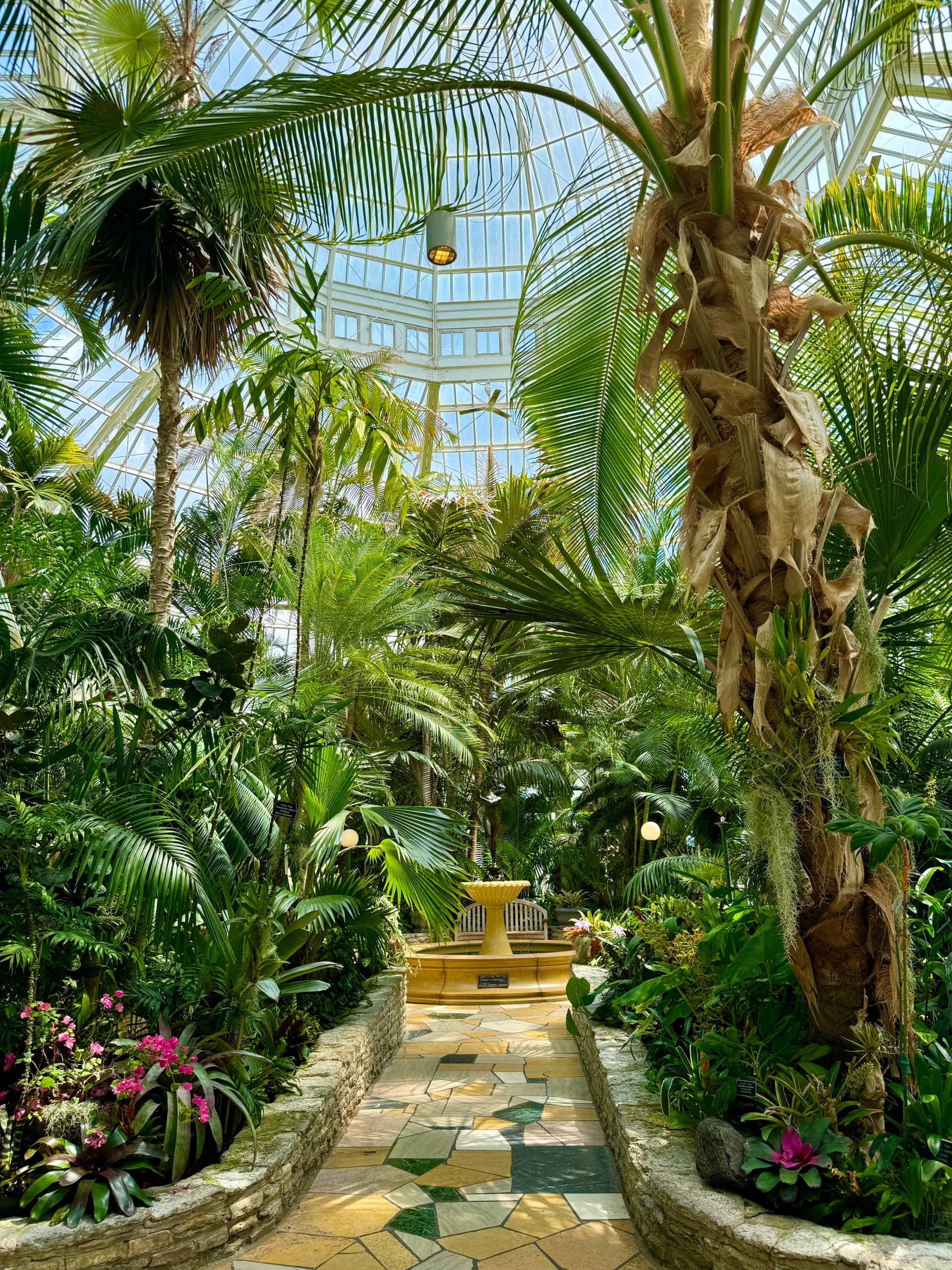
The brighter feel of the room is the result of an extensive pruning project to remove several older palms that had grown so tall they were crowding into the glass cupola. Unlike species that can be trimmed to grow outward, “the growing point of a palm is at the top of the plant, so the pressure of pushing into the glass would eventually kill the plant,” explains Karen Kleber Diggs, horticultural supervisor.
The strength of these tropical palms can also put the Conservatory’s historic dome at risk.
“A couple of years ago, we had one of the palms on the side actually grow up with a very stiff frond that punched its way into the grout” between the cupola’s glass panes, she says. “These are very powerful plants.”
Typically, the Marjorie McNeely Conservatory works with the city’s forestry department to provide pruning help, but with the spread of emerald ash borer, trimming Como’s tropical trees wasn’t possible this year. That’s where Como Friends stepped in, providing $70,000 in grant funding to help Como’s campus move ahead with tree maintenance in the Palm Dome, the North Garden and a few other locations around campus.
“Grants like this are one of the important ways that Como Friends helps the Marjorie McNeely Conservatory achieve its mission,” says Jackie Sticha, president of Como Friends. “If city funding or park resources are pulled in different directions, community support helps to ensure that Como can move ahead on urgent or emerging maintenance issues.”
New palms—also provided with funding from Como Friends—will take their place as part of a phased succession plan visitors will see in the coming months. While gardeners are always sorry to see 20-year-old palms go away, the extra space has allowed horticulturist Alejandro Balderas to redesign the understory of the palm room. “He’s been utilizing a lot of our bromeliad and orchid collection to create these colorful accent points he calls vignettes that bring a new focal point to the ground cover space,” says Kleber Diggs. “He’s seeing things in that room with fresh eyes, which is something our visitors may notice this season, too.”
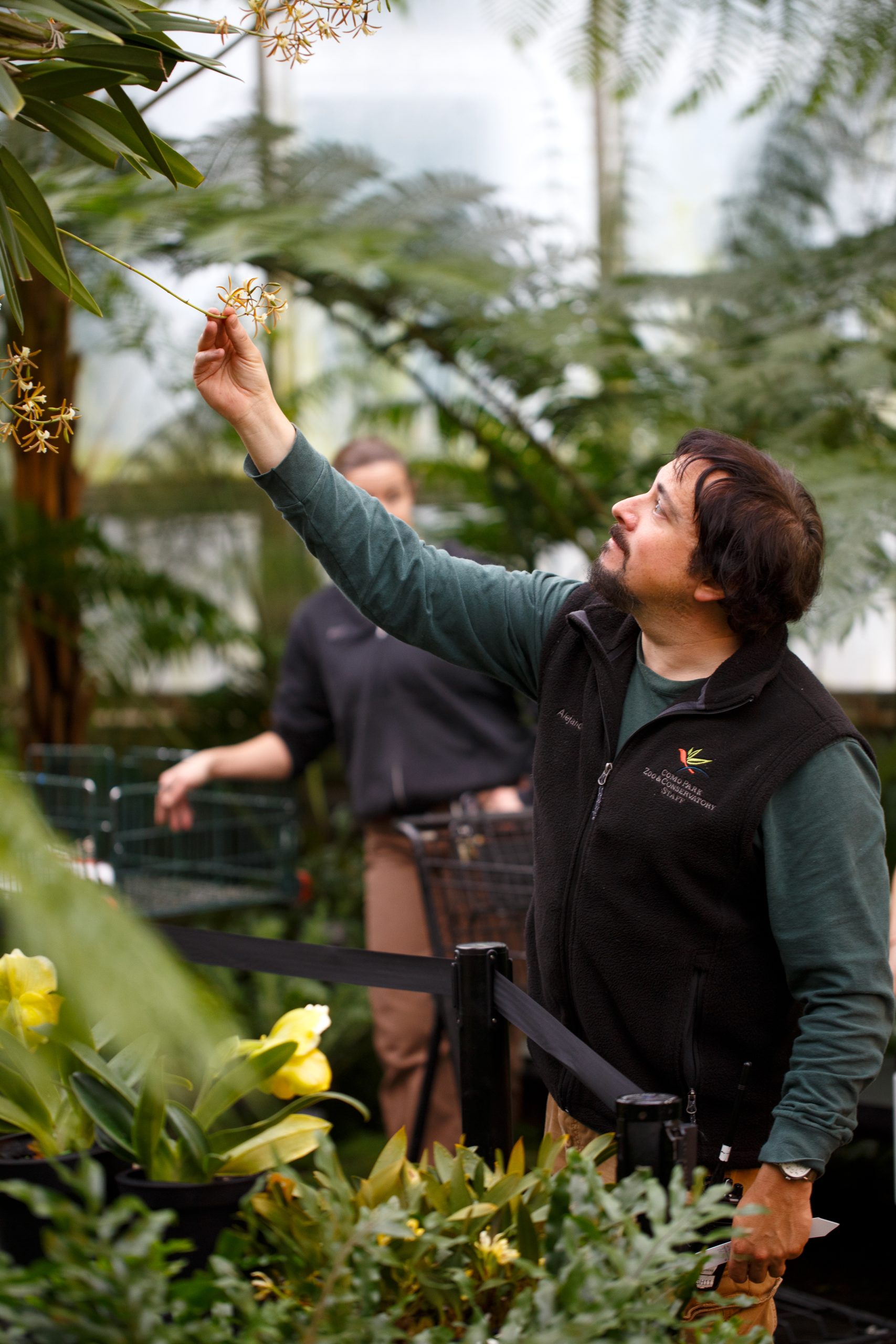

Como’s education programs are back in full force, with a growing emphasis on discoveries that foster new connections with nature.
“What do you think this plant would taste like?” a second grader from St. Paul’s Capitol Hill Magnet School wonders aloud.
“Yucky,” says her classmate, as she contemplates a table full of mint, cacao and other plant specimens from the Marjorie McNeely Conservatory.
“But maybe not,” says a third student, leaning in for a sniff. “This one kind of smells nice…”
Using all five senses to explore the world of plants is the power of Plant Detectives, a popular school partnership that brings second graders from the St. Paul public schools to Como with free tuition provided by Como Friends. In a classroom in Como’s Visitor Center, small teams of students work their way from station to station, smelling, touching and observing all they can about plants, and comparing their notes in a high-energy setting guided by Como’s education specialists.
During the pandemic, when school programs like this were put on pause, virtual programs like Como Connections helped classrooms around the state learn about conservation through fun and interactive videos. But as education coordinator Tim Buer says, there’s nothing like being back in person again for getting kids fired up about learning. “It’s been great to re-establish the connection that we’ve had with schools for so many years,” he says. “We don’t even have any space left in this program, it’s been so popular with teachers.”
Como field trips are a familiar tradition for many schools, but this year, the conservation curriculum is taking a new shape thanks to a new education strategic plan supported by Como Friends.
“As our school partners were coming out of COVID, we took the opportunity to think really intentionally about all of our education programs, making sure that they’re all aligned with our conservation mission,” says Bekah Hanes, Como’s education and conservation curator.
Through Como’s growing partnership with Advancing Conservation Through Empathy (ACE) for Wildlife, a nationwide learning network, Como’s education programs have also been updated to reflect the growing body of research that shows that fostering empathy with animals and plants is a powerful tool in building life-long conservation behaviors.
Como visitors will notice the new conservation-focused vibe all across campus, from the full roster of summer camp programs relaunching this summer, to the new field trip enrichment stations you’ll see near the Visitor Center during the busy spring months. “It’s wonderful to hear the noise and energy of kids being in classroom spaces that we haven’t used for awhile,” says Hanes. “Seeing those school buses come back, and knowing the next field trip is on its way here brings us all a lot of joy.”
BACK TO CLASS WITH COMO FRIENDS
Your support for Como Friends has been critical to the resurgence of Como’s education programs this year, with new scholarship offerings for schools and families. Here’s a look:
Hitching a ride: With rates for school bus rentals on the rise, Como Friends is helping provide bus scholarships to schools in need to ensure that finances are never a barrier to school field trips.
Summer camp surge: After a successful pilot run last season, Como’s popular summer camps are making a full return with 12 weeks of great programs about animals and plants for preschoolers through sixth graders. Como Friends provided scholarship funding for families to enroll in Camp Como this season. Your Como Friends’ membership can also help save 10 percent off your registration costs.
St. Paul Partners: With field trips back in full swing, Como has resumed its popular second grade field trip program with the St. Paul public schools, a program paid for by Como Friends.
Nature Walk: Led by teens taught to interpret Como’s animal and plant collections, this engaging conservation program is all about getting the next generation excited about nature. At interpretive carts stationed around Como during the busy summer months, Nature Walk volunteers role-model what’s cool about conservation, connecting with an estimated 200,000 visitors every year.
Curriculum Updates: With a new focus on fostering empathy with animals and plants, Como’s education department hired a dedicated curriculum writer to update all of Como’s programs with best practice strategies for inspiring the next generation of environmental stewards.
The season’s best Como traditions are back
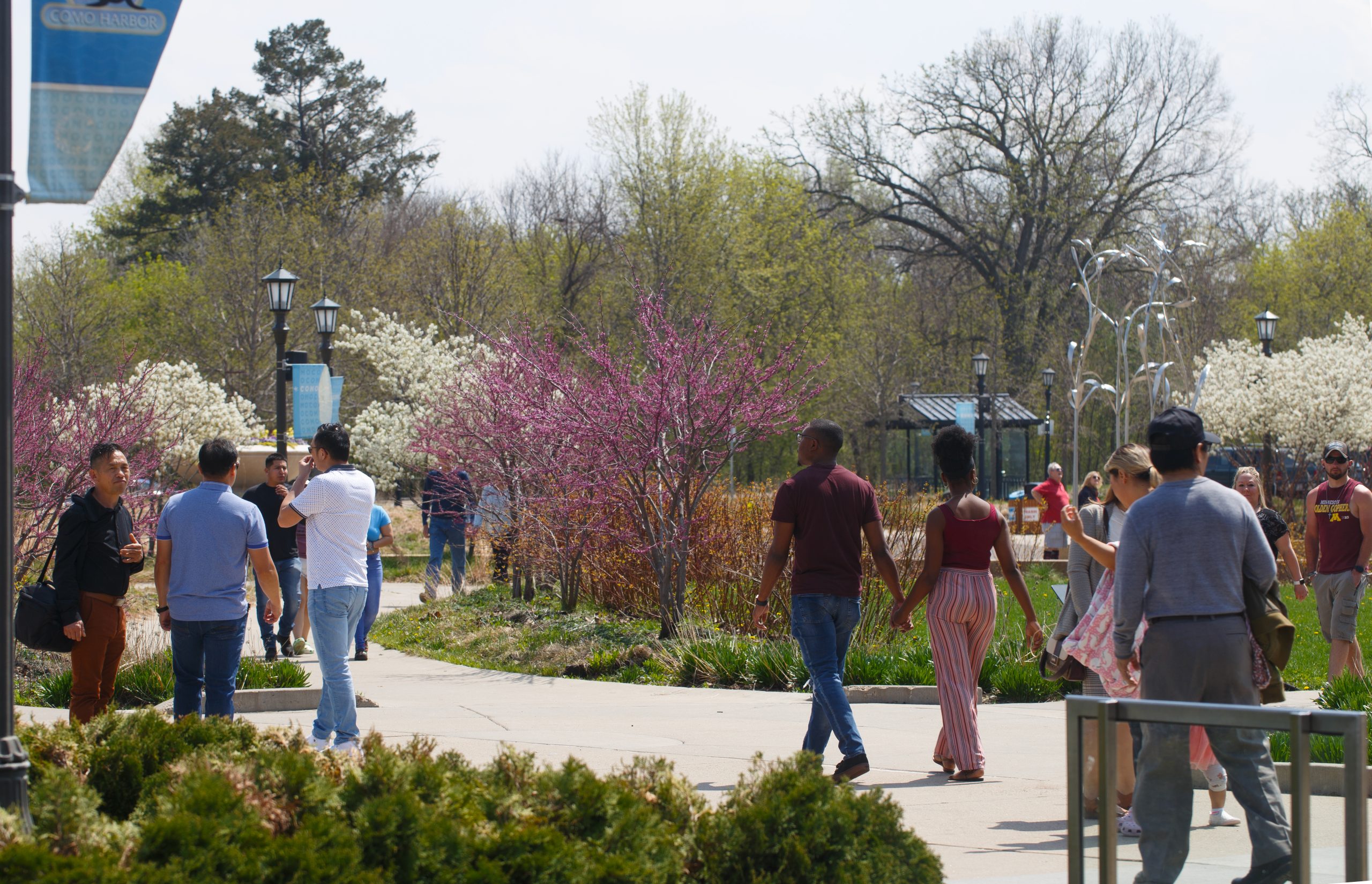
One of the beauties of Como Park Zoo & Conservatory is finding something to delight every time you drop in. But with these inside tips about Como’s value-added programs, you’ll find even more to love.
-

The Blaze Sparky Show
Every day at 11:30 a.m. and 2:30 p.m., Como Harbor’s inhabitants dive into this splashy training session, teaching visitors about the unique adaptations of harbor seals, Atlantic gray seals and California sea lions. And be sure to check out Como’s daily zookeeper talks at 11 a.m. and gardener chats at 1:00 p.m. every day, featuring a changing roster of themed animal and plant presentations for the public.
-

The Sunken Garden Summer Flower Show
The longest-running flower show of the year, the Sunken Garden’s summer display is open now through September 22. Look for angelonia, verbena, salvia, coleus and other annuals in cherry red and pink at this hot summer showcase of floral favorites. Free and open every day from 10 a.m. to 6 p.m. except for a mid-show change June 10–June 13.
-
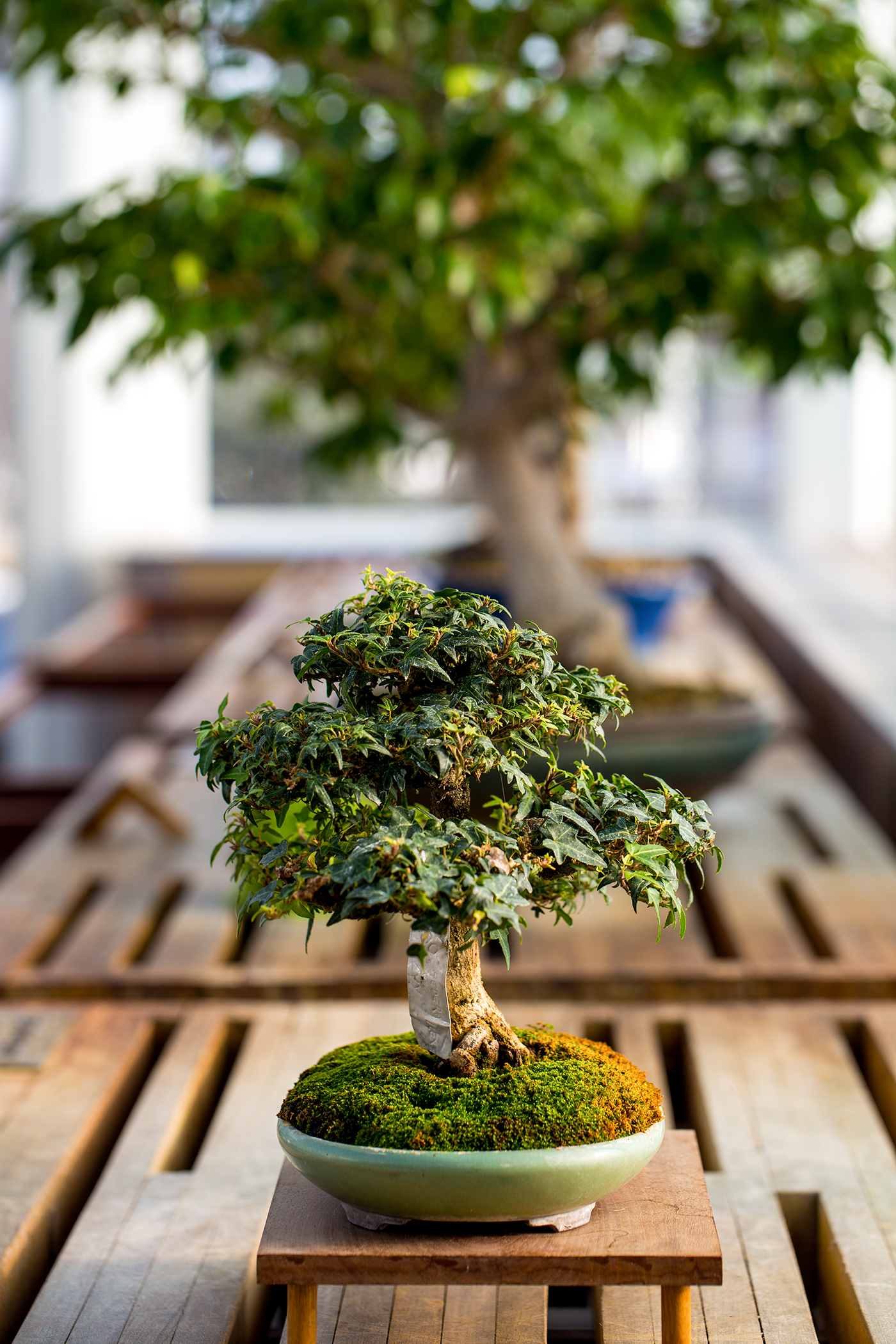
The Mother’s Day Bonsai Show
Experience the beauty of bonsai at this annual show, May 11 and 12, produced in partnership with the Minnesota Bonsai Society.
-
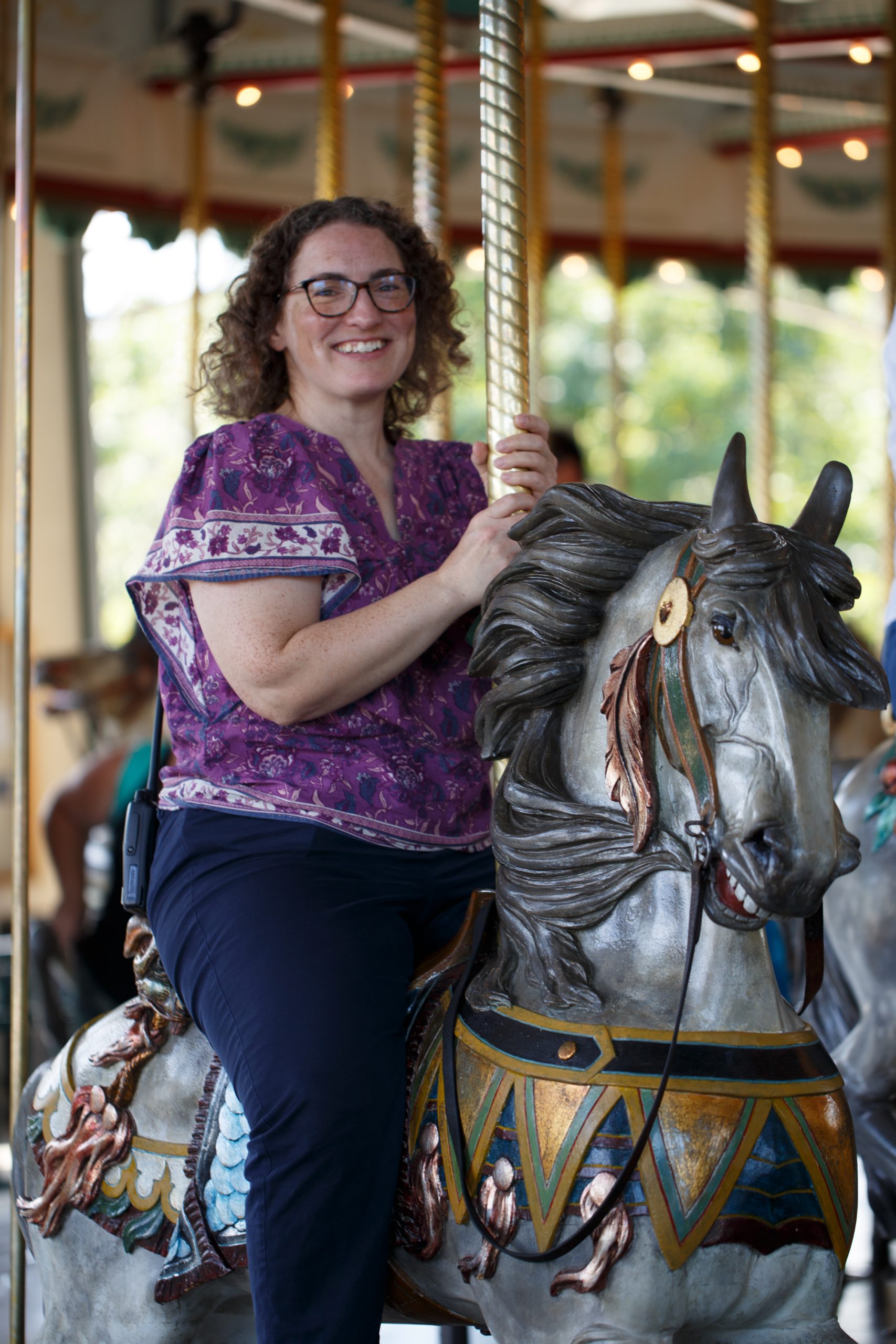
Cafesjian’s Carousel
A Minnesota tradition that just keeps spinning, Como’s historic carousel is now open five days a week, Thursdays to Mondays, through Labor Day, from 11 a.m. to 4 p.m. Mark your calendar for free rides coming up on May 28, June 25, July 30, August 27 and September 24.
-
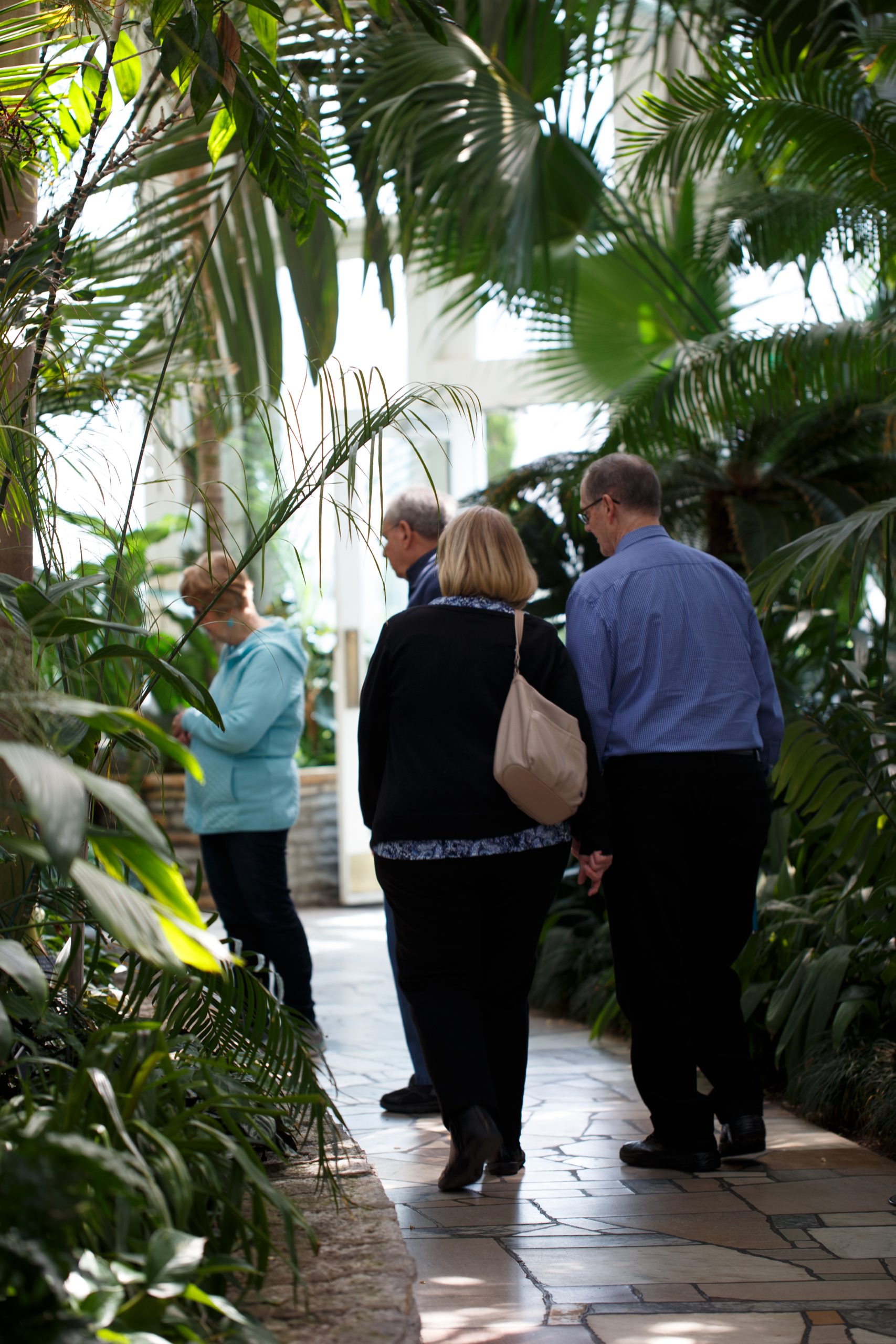
Insider’s Look
Have you ever wondered what it’s like before hours at the Zoo and Conservatory? Find out at Como’s popular new Adult Program: An Insider’s Look, offering an early hours behind-the-scenes glimpse of everything that goes on at Minnesota’s most visited cultural destination. Coming May 19, from 8:30 a.m. to 10 a.m., $25 per person. Reserve your ticket today: https://comozooconservatory.org/como/an-insiders-look/
-

Garden Safari Gifts Satellite Shops
Como Friends’ Garden Safari Gifts grows every summer with satellite locations in Como Town and at the kiosk in Polar Bear Odyssey, May 18 through September. With an unparalleled plush collection, cute gifts, and Como-themed apparel, every purchase helps to support the plants and animals you love at Como. And remember, Como Friends members enjoy 15 percent off every purchase!
-

Senior Strolls
Get fit and make new friends at one of these early access mornings, specifically for the 55+ and up crowd. Visit Como’s website to register in advance for the following dates: May 21, June 9 and June 18.
-
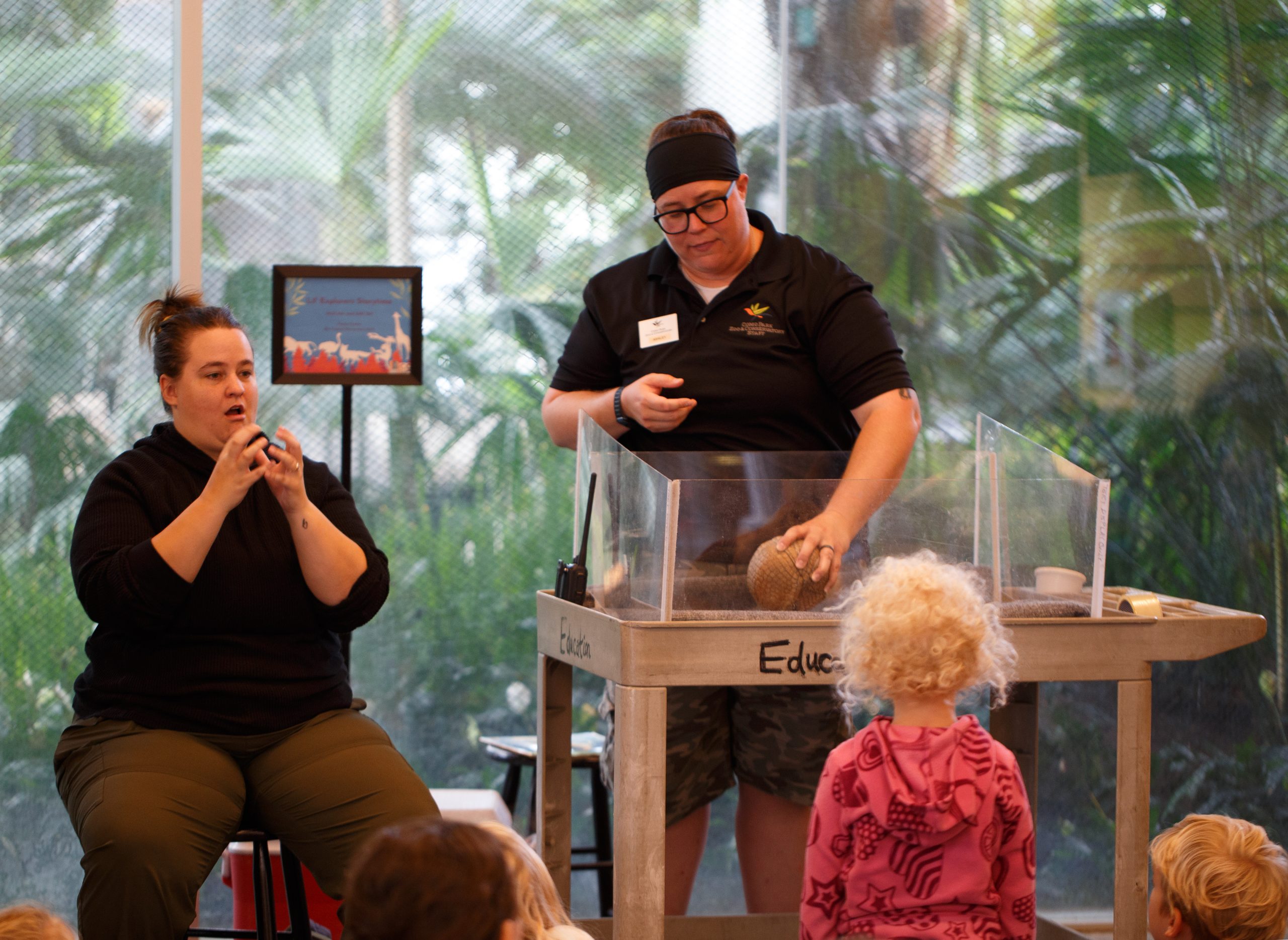
Little Explorers
Free every Thursday from 10 a.m. to noon, Como’s Visitor Center Donor Plaza becomes a fun conservation station for preschoolers, with story time, hands-on activities, and nature themes including Fun with Fish on May 16, Fancy Flowers on May 23, Bird Buddies on May 30, and Down on the Farm on June 6. An ASL interpreter will also be on hand most Thursdays to interpret the 10:30 a.m. story time, 11 a.m. zookeeper talk, and the 11:30 a.m. Blaze Sparky Show.
-

Sensory-Friendly Mornings
Experience Como with a little quiet and calm during these designated early morning openings designed for individuals on the autism spectrum and their families. Visit Como’s website to register in advance for these upcoming dates: May 26, June 11 and June 23 from 9 a.m. to 10 a.m.
-
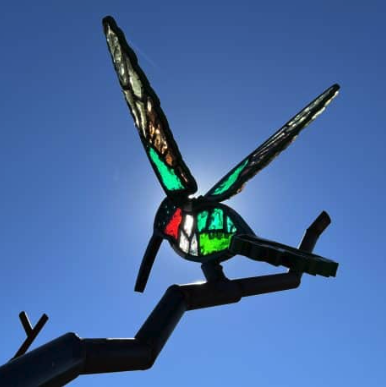
Glass in Flight
See the beauty of insects and other high-fliers through artist Alex Heveri’s traveling art exhibit, featuring bedazzling steel and glass butterflies, beehives, beetles, birds, and more, visiting Como’s campus from May 23 to August 31.
-
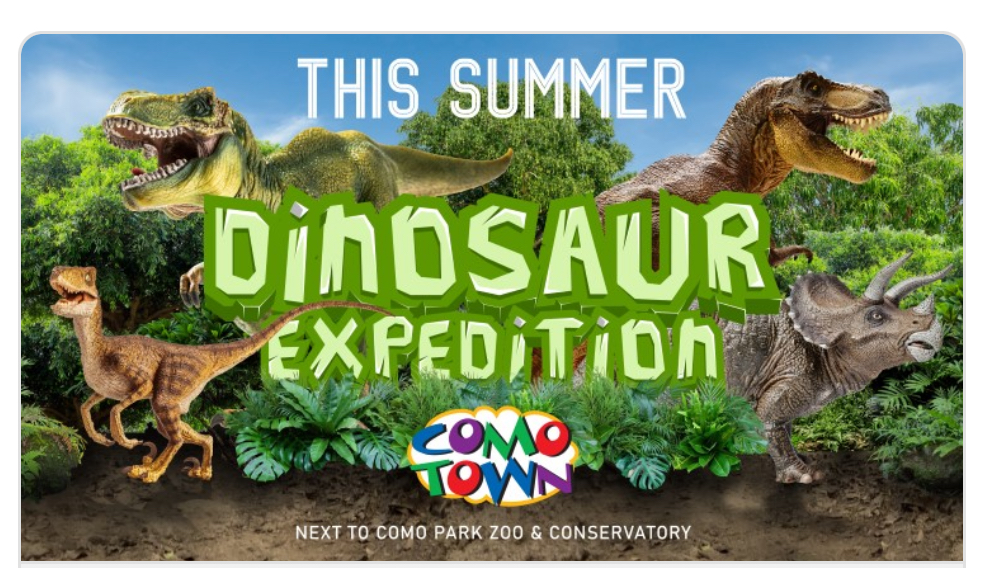
Como Town
Make time for the Tilt-A-Whirl on May 18, opening day at Como Town! This year’s new attraction is Dinosaur Expedition, a reservation-only experience for a limited-time is a must-see event featuring 11 life-size fully robotic dinosaurs. The dinosaurs come alive at Como Town from May 24 to September 2, daily 10:30 a.m. – 5:00 p.m.; September 7– 29, Saturday and Sundays only, 10:30 a.m.-5:00 p.m. Open from 11 a.m. to 6 p.m. Wednesdays through Sundays. Remember, Como Friends Supporter-level members receive a complimentary Como Town Fun Card filled with 32 ride points, thanks to our partners at Como Town.
Personalizing nature is one of the first steps in protecting it
Sparky, Neil, Chloe, and Schroeder are just a few of the Como Park Zoo & Conservatory animals known to millions of visitors by their first names. Though there was once a time when zoos shied away from showcasing the individual animals in their care, a growing body of research now tells us that encouraging the public to forge personal connections to nature is one of the best ways to protect it.
That thinking is the driving force behind a series of new education and engagement strategies now in effect at Como Park Zoo & Conservatory, thanks to support from Advancing Conservation through Empathy (ACE) for Wildlife, a learning network of AZA-accredited zoos, aquariums, and other institutions exploring effective practices for fostering empathy for animals.
“The old theory was that simply sharing knowledge would be enough to inspire action, but what we’re coming to realize is that fostering meaningful emotional connections is just as important. Having empathy for an animal builds the desire to act on their behalf,” says Bekah Hanes, Como’s education and conservation curator. “Empathy is a skill you can develop and build on, and it’s becoming an important tool to help people cross the finish line from thinking about conservation to actually acting out those values, long after a zoo visit is over.”

The official shift toward empathy-focused engagement started in 2016, when Como Friends secured a major grant to help Como Park Zoo & Conservatory implement a new education and engagement strategy called the ROADMAP (Reaching Our Audiences by Developing Mission Aligned Programs). While the pandemic put a pause on public education programs for a time, Como continued to move ahead with its mission, securing grants from ACE for Wildlife to rewrite Como’s volunteer interpretive programs with an empathy focus, to use empathy as the lens for a new education strategic plan, and to create new permanent signage in the wolves and large cats habitat that uses empathy-inspiring language. While Como is one of the inaugural members of the ACE for Wildlife Learning Network, a special project of Seattle’s Woodland Park Zoo, the empathy movement is gaining ground with many other AZA-accredited zoos and aquariums.

Public Engagement Coordinator Kelsey Raffel says “it’s a great shift that’s happened in a relatively short amount of time,” in part because it embodies an approach toward audience engagement that Como’s keepers, horticulturists, interpreters, and educators gravitate toward naturally. “Focusing on empathy in our education programs, volunteer training, and visitor engagement has gotten a great reception from the campus,” she says. “For instance, our interpretive staff have shared that they love talking about the individual animals we care for, their personalities and likes and dislikes, and this approach really encourages them to do that.”
Jackie Sticha, president of Como Friends, says community support is critical to providing the resources Como Park Zoo & Conservatory needs to stay current as a conservation educator and a national leader in animal care. “More than 20 years ago, Como Friends funding helped Como Zoo make a shift toward positive reinforcement training for animals, and we see this empathy work as part of that same evolution,” she says. “It’s just natural to want to know the names of the animals at Como Zoo, and now the research tells us it’s also a really powerful way of connecting visitors to the natural world.”
The St. Paul Winter Carnival Orchid Show is the cure for the mid-winter blahs

With more than 28,000 naturally occurring species, the Orchidaceae family is one of the largest and most diverse of the world’s flowering plants. On January 27 and 28, Marjorie McNeely Conservatory visitors will get a chance to see the cream of the crop at the St. Paul Winter Carnival Orchid Show, a Como tradition for nearly 50 years.
Curating and designing Como’s display this year is horticulturist Alejandro Balderas, who cares about orchids even in his off-hours. “Before I moved to Minnesota from California, I had about 70 plants and 30 cultivars of my own,” he says. While he’s trimmed his personal collection to a more manageable size, there’s a good chance it will grow again once he’s had a look at the newest species and varietals for purchase at the Orchid Show’s marketplace. “There are so many shapes and sizes, and there’s always something new on the market,” he says. “It makes it hard to resist.”
Like the tulip mania that hit Europe in the 1600s, orchids had a similar history in the 1800s, when so-called “orchidelirium” sent prices for rare tropical species soaring into the stratosphere. But now with so many hearty varieties widely available in garden shops and grocery stores, orchids are no longer quite as intimidating to curious home gardeners.

“Orchid growing has become much more transparent because of the internet and with people having access to the literature online,” he says, from groups like the Orchid Society of Minnesota, a co-sponsor of the Winter Carnival Show. “They’re one of the few houseplants that actually flowers consistently,” he says, with colors made to attract pollinators and people stuck indoors during the winter. “Minnesotans seem to really love their orchids,” he says.
For the show, Balderas and other horticulturists are planning to display more than two dozen of the Marjorie McNeely Conservatory’s best species, drawn from a large working collection predominantly featuring plants from Central and South America. Set in the Fern Room, the design will feature a sculpture dedicated to the Conservatory on its 50th anniversary in 1965.
Advanced admission reservations are required to attend the St. Paul Winter Carnival Orchid Show, and tickets are $5 for adults and $4 for Como Friends members, seniors, and children under the age of 12. Visit this link for more information.
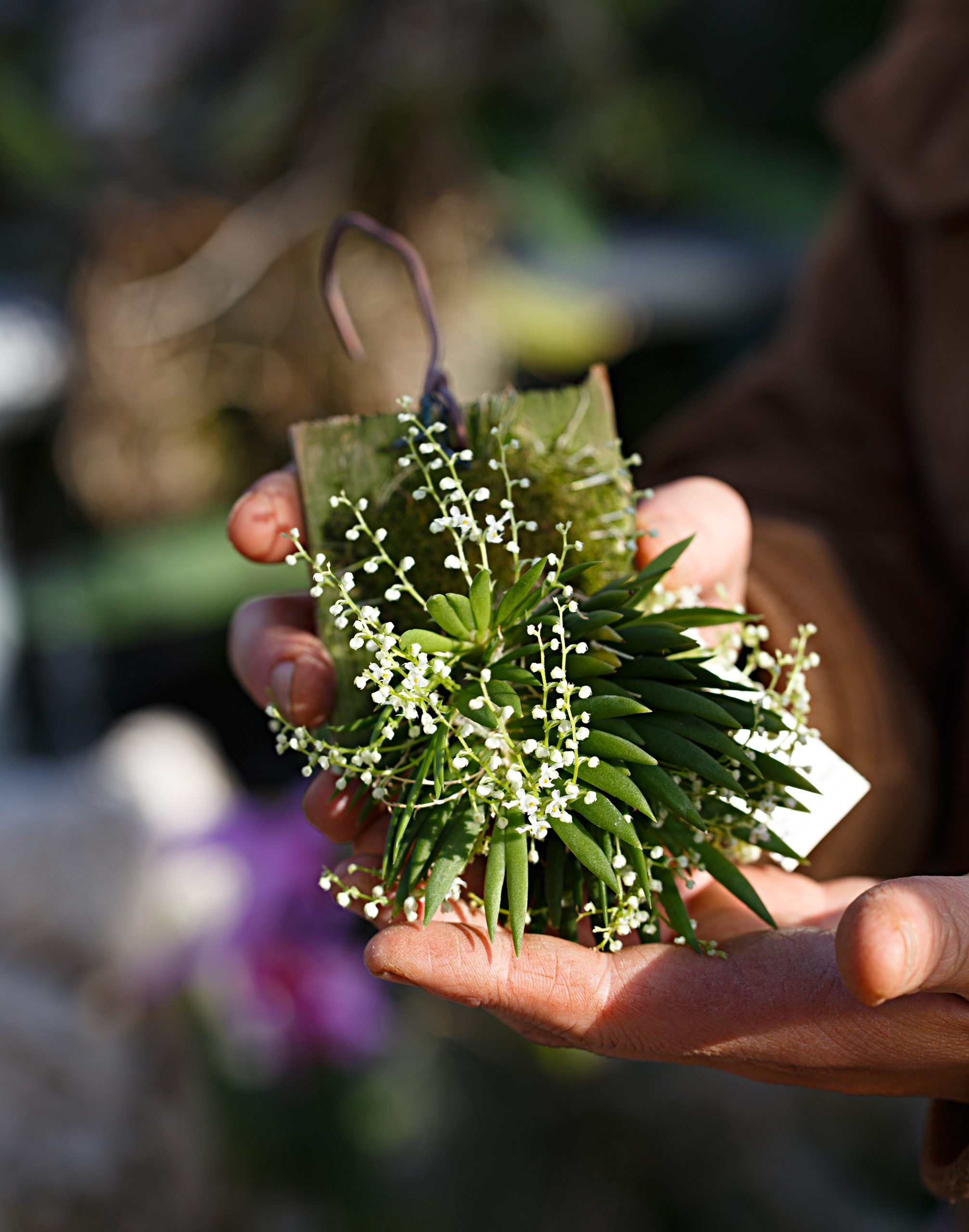
Your support for Como Friends helps to make the Conservation Champions program possible, supporting Como’s talented staff’s participation in conservation partnerships and in their continued professional development. Thank you!
Reusing, reducing and recycling is one of the secrets of Como’s Sunken Garden
Horticulturist Rylee Werden has fond memories of visiting Como with her mother and grandmother. “We always came to see the flowers together, so having the chance to design a flower show that connects with the Winter Carnival Orchid Show is really an honor.”
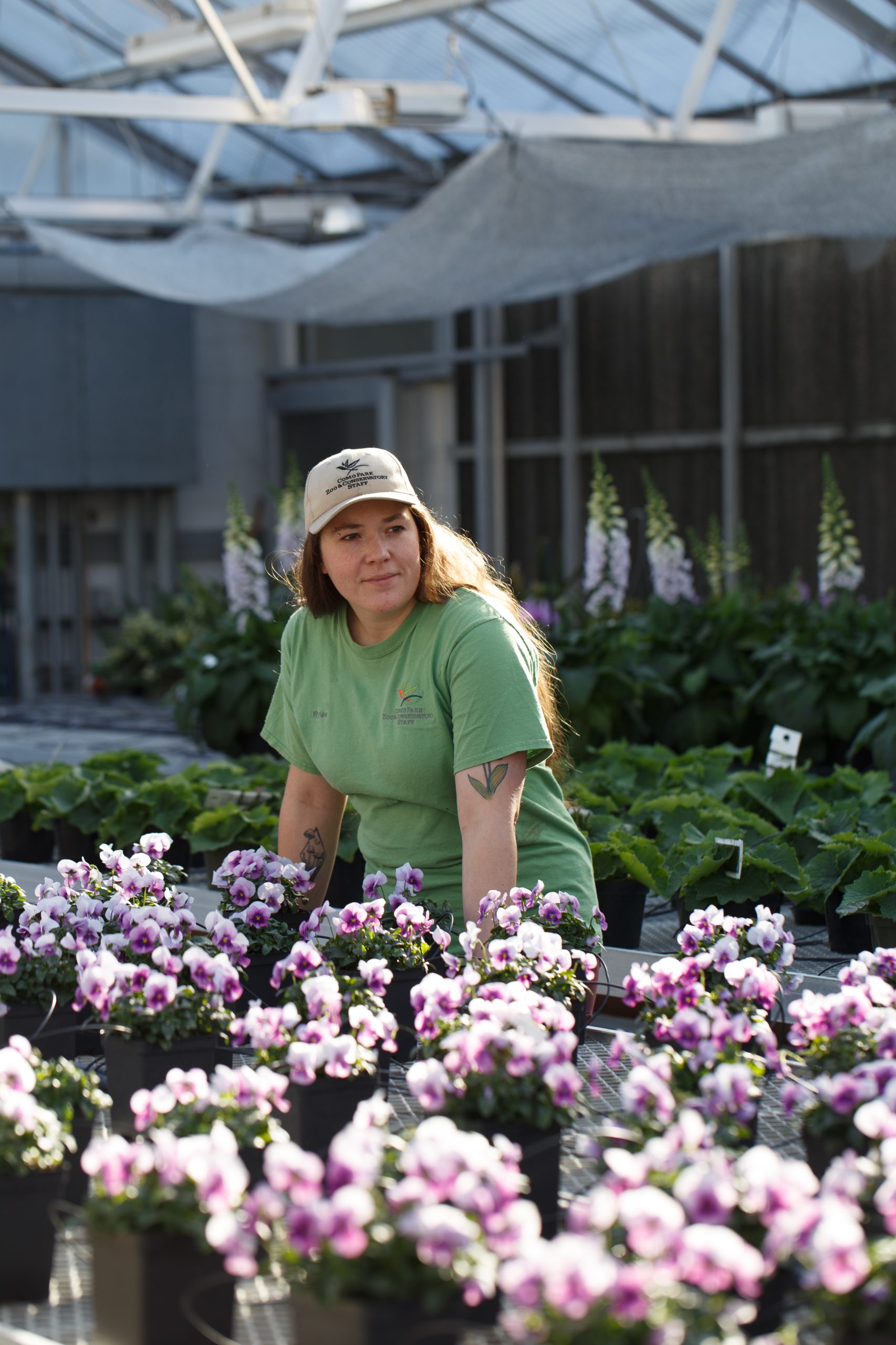
This season’s Winter Flower Show is a storybook example of an English-style cottage garden, with dense green foliage, deep pink and purple flowers, and a casually unkempt style—as if the garden is bursting out to fill its stone boundaries after years and years of growth.
“I was really inspired by the plant loropetalum which has a really nice weeping tree form and pretty flowers that I thought would make the pond look sort of enchanted,” says horticulturist Rylee Werden, who designed the show, her first for the Marjorie McNeely Conservatory. “From there I started building in more pinks and snowy whites and icy blues to play with the winter season. And the Winter Carnival Orchid Show coming later this month is what inspired me to use two of the flowers, a snapdragon called ‘Snappy Orchid Flame’, and a Viola called ‘Orchid Rose Beacon’”.

While most of the flowers you’ll see in this season’s show were grown from seed or plugs back in September, many supporting players in the Sunken Garden’s canopy were drafted from the Conservatory’s expansive greenhouse, design choices that are helping to make Como’s five seasonal flower shows more sustainable. For instance, the small birch trees featured in the Winter Flower Show were recently culled from the Charlotte Partridge Ordway Japanese Garden.
“Visitors seem to really love how they look, and we’re always excited to find a new use for what we already have,” says Werden. In fact, when the winter show is complete, the cuttings will be converted into birch poles for use in next year’s holiday plantings.
“As often as we can, we also try to give the plants and trees we use in the Sunken Garden a second life somewhere on campus, or in the community,” says Como’s horticultural curator, Dr. Lisa Philander. For years, spring bulbs pulled from the Sunken Garden have been recycled and resold through Como Friends’ Garden Safari Gifts, with proceeds that help pay for the next year’s bulb show. Your contributions to Como Friends are also helping the Marjorie McNeely Conservatory start a new on-site compost system with the capacity to turn tons of spent plant material into rich compost for future flower shows and gardens.
Making smart use of resources—from existing plant collections and from contributions from people like you—has helped Como Park Zoo & Conservatory keep its tradition of five rotating flower shows going for nearly 99 years. Thank you!
To sponsor the Marjorie McNeely Conservatory’s Sunken Garden visit:
